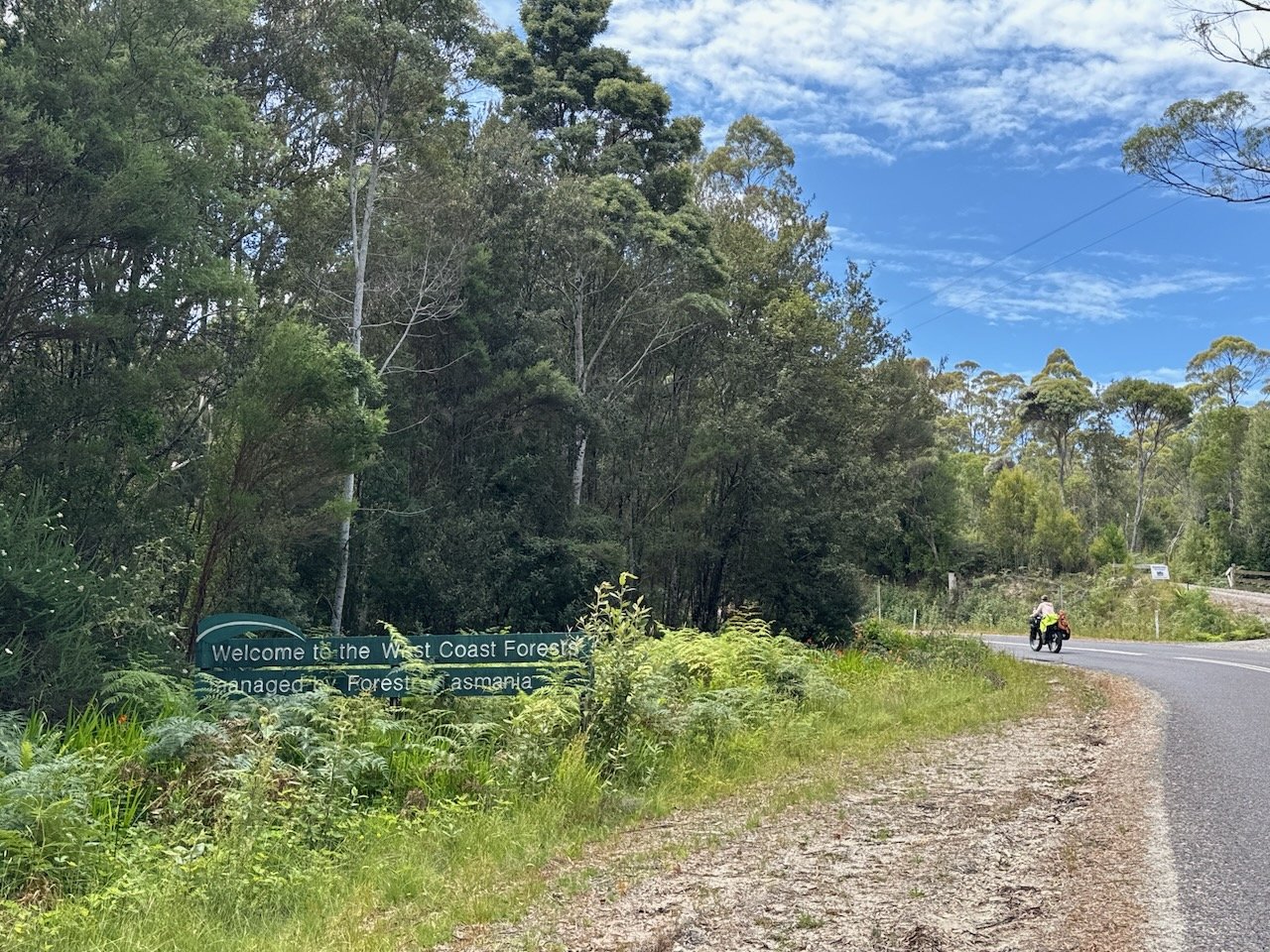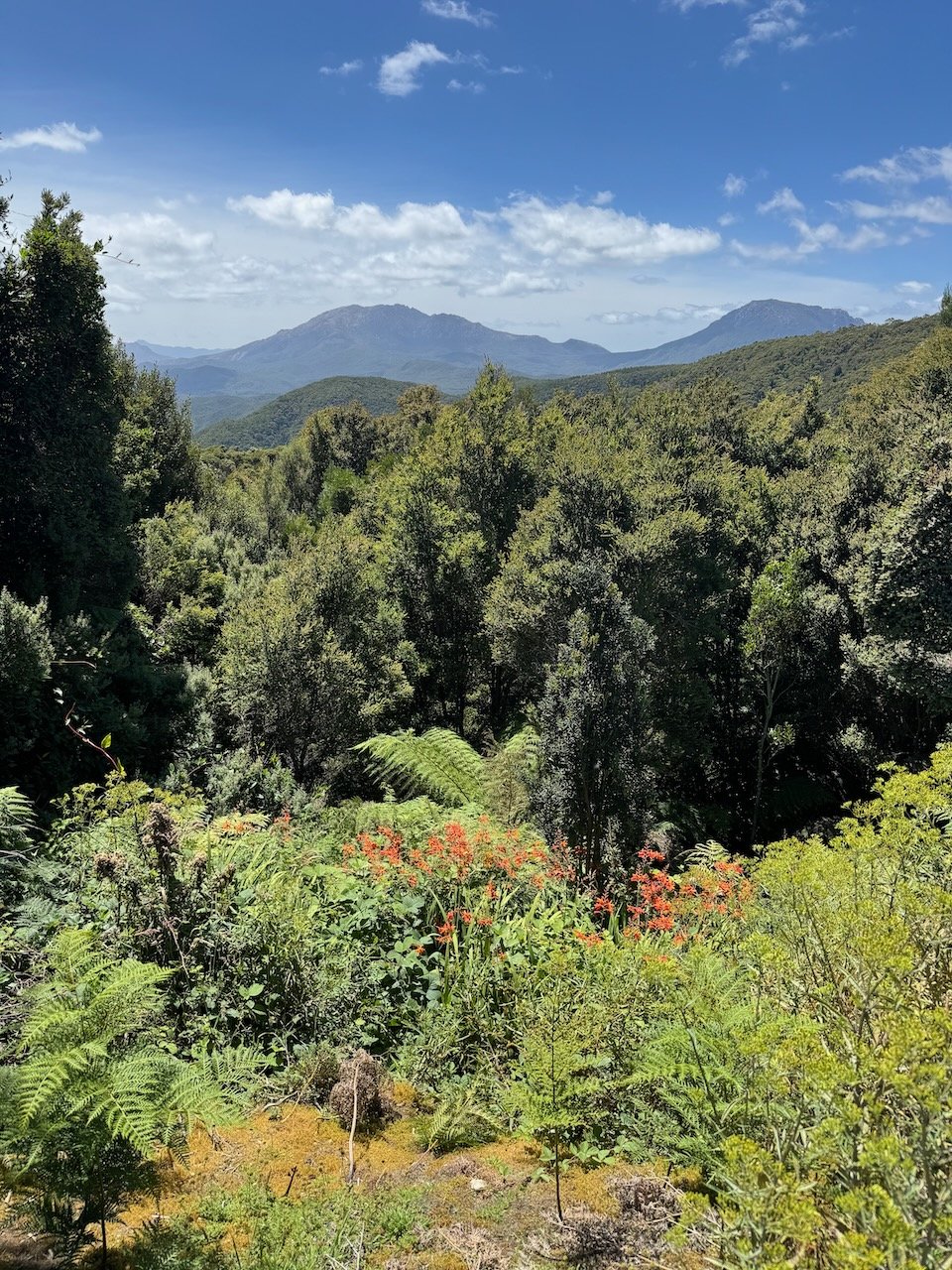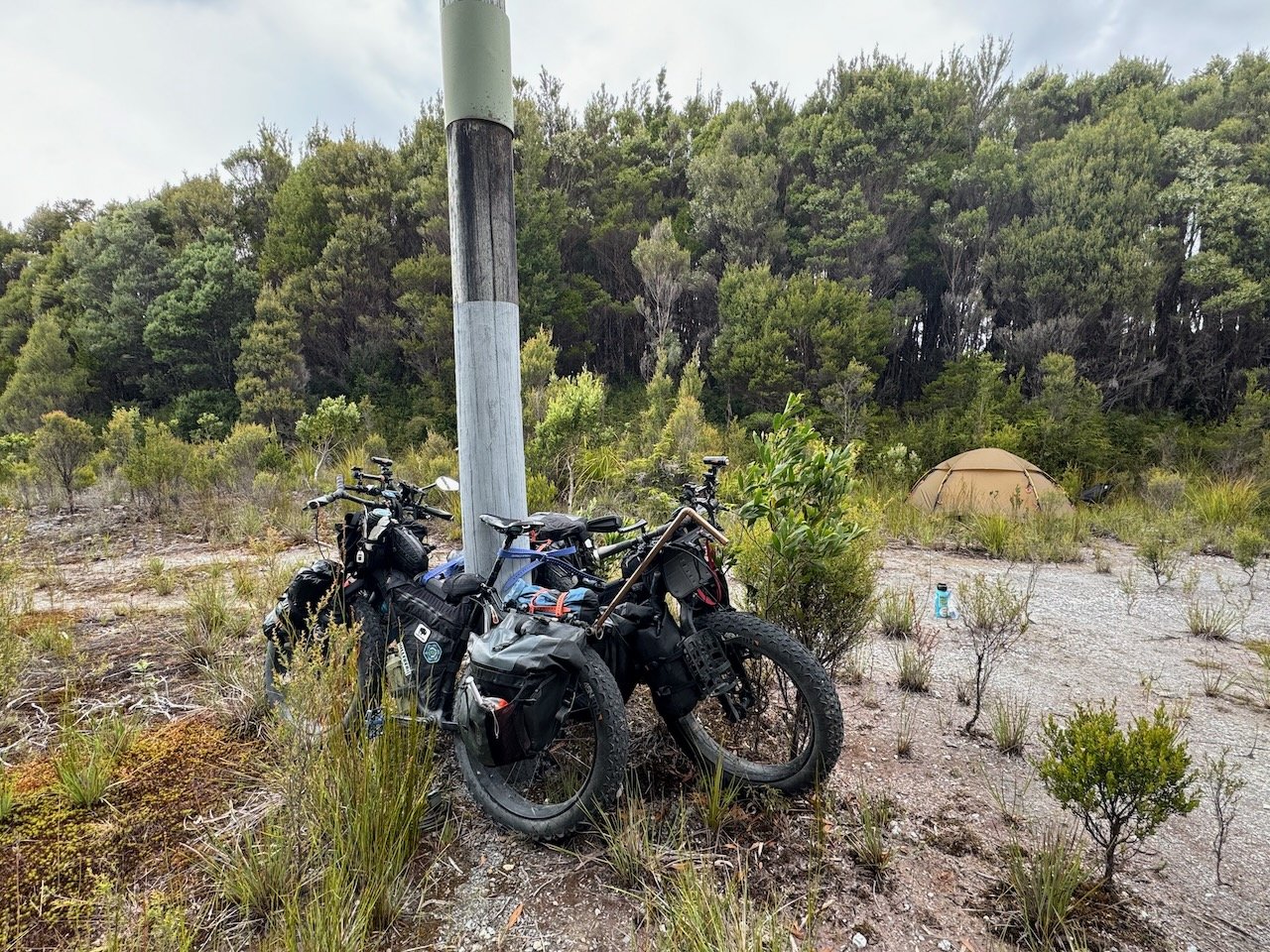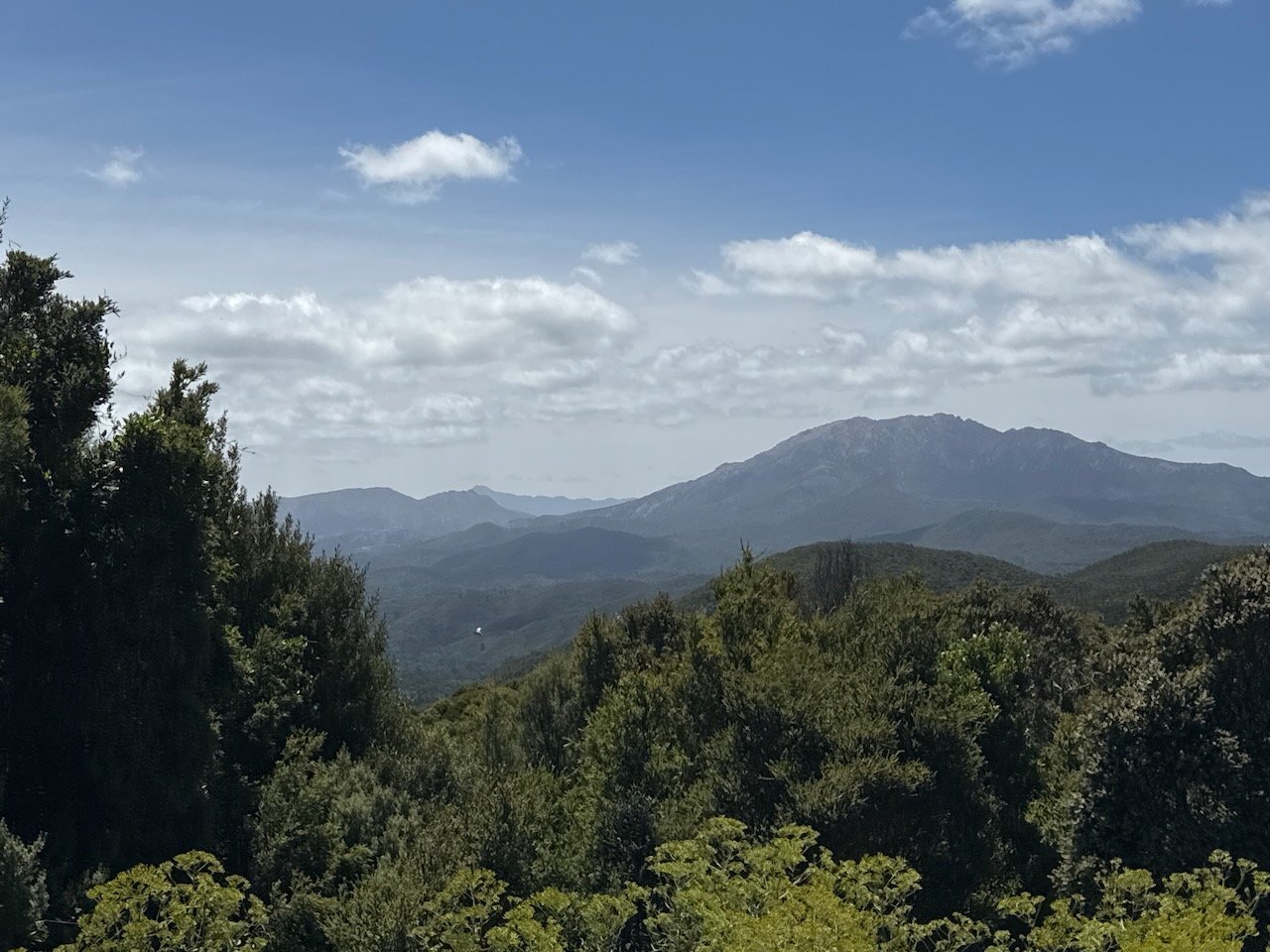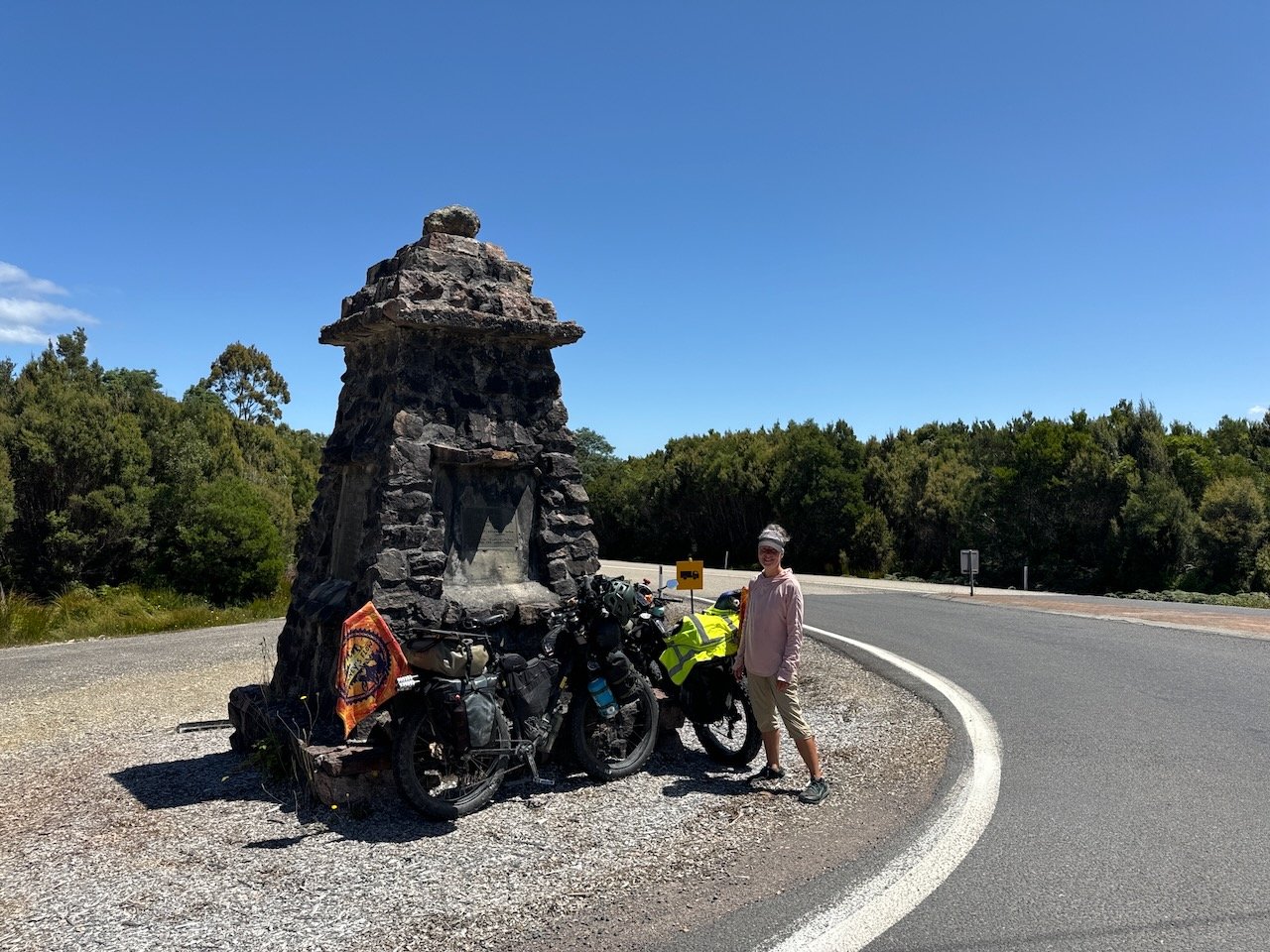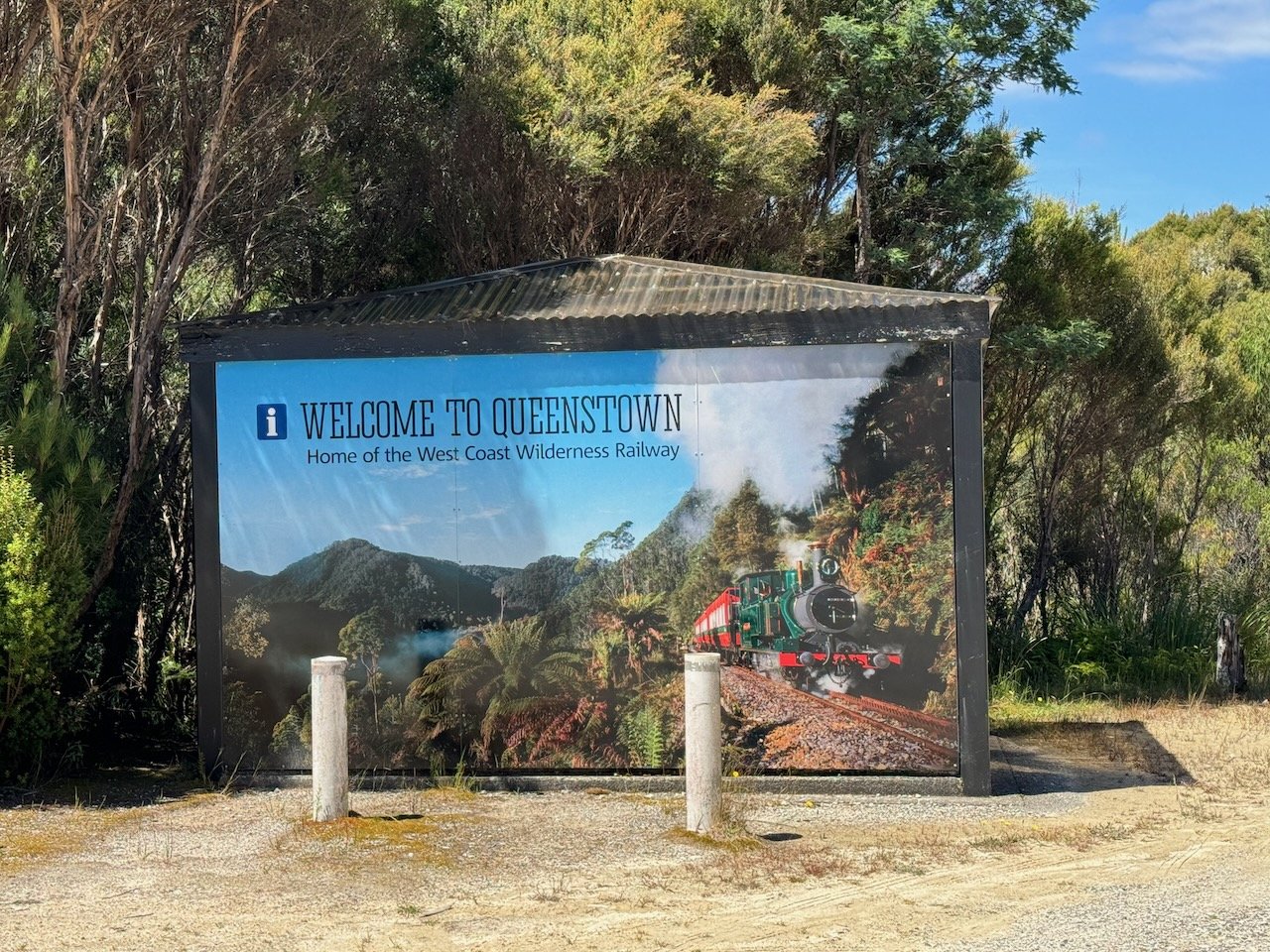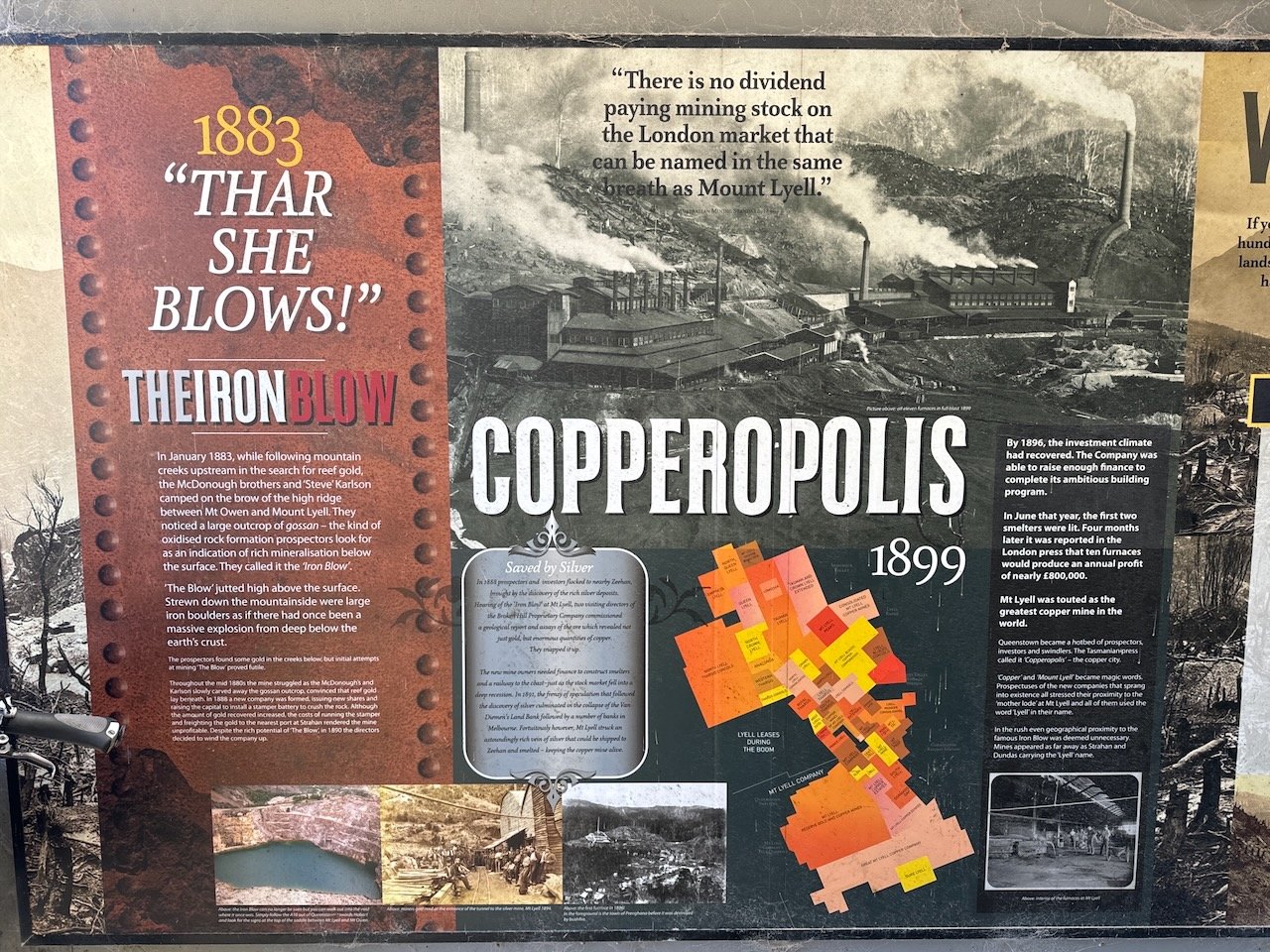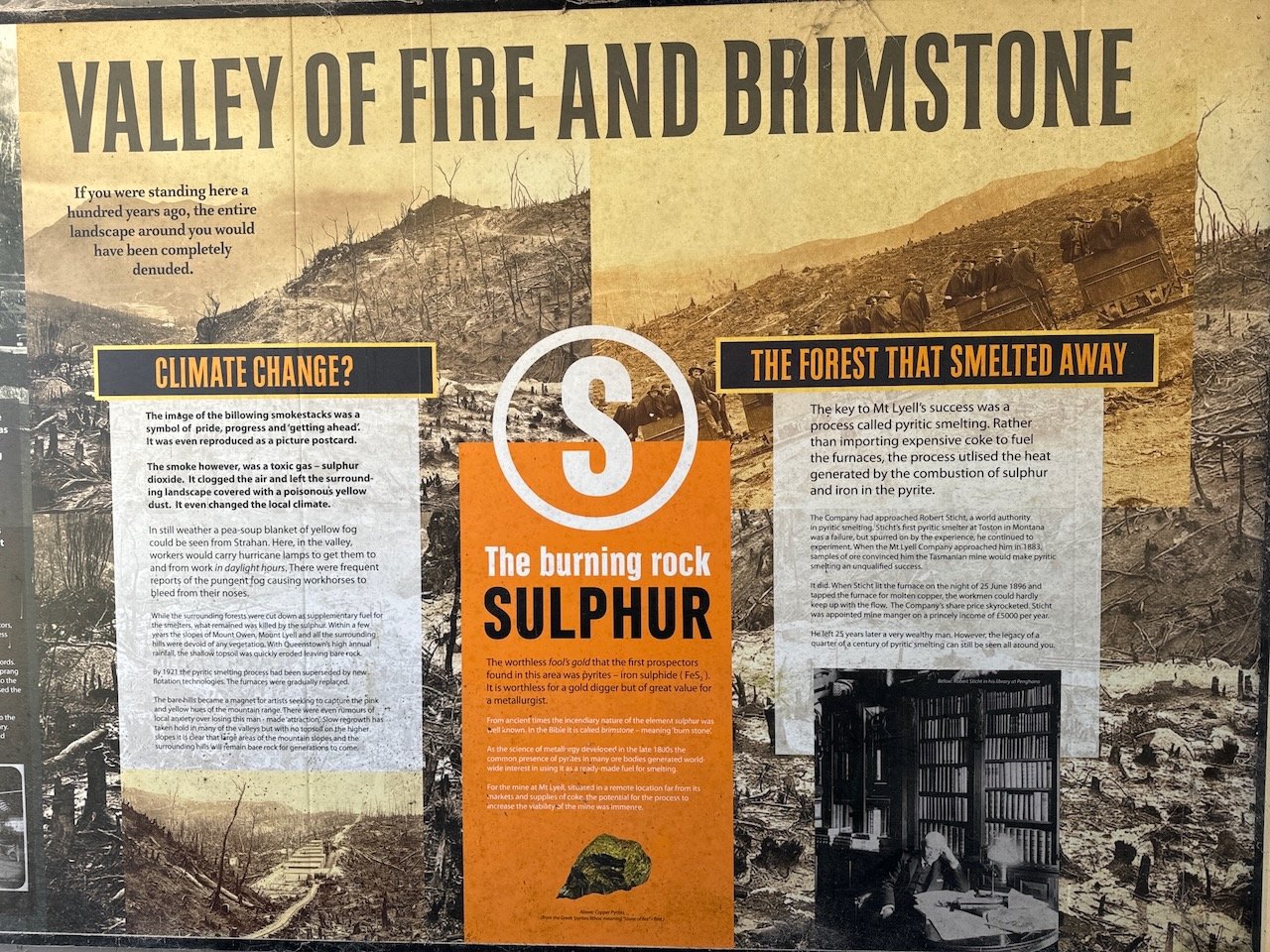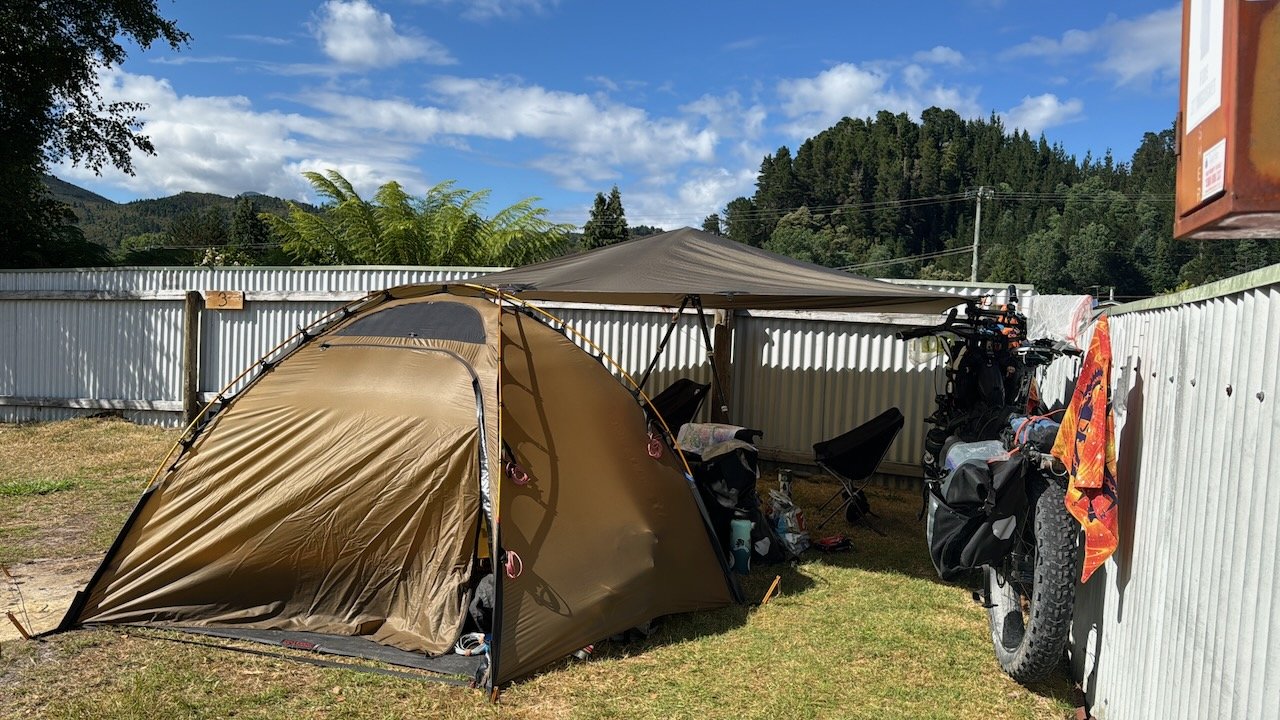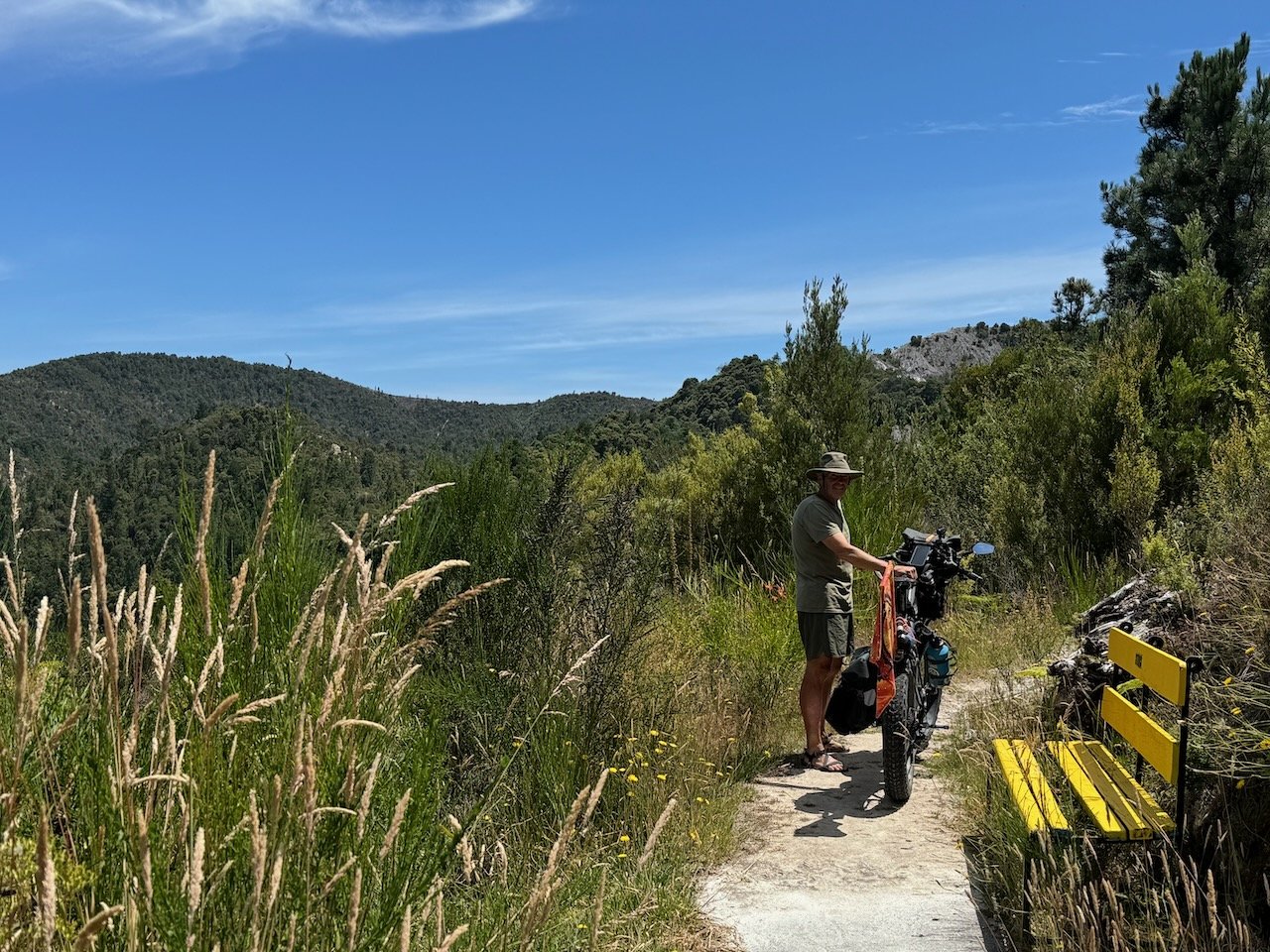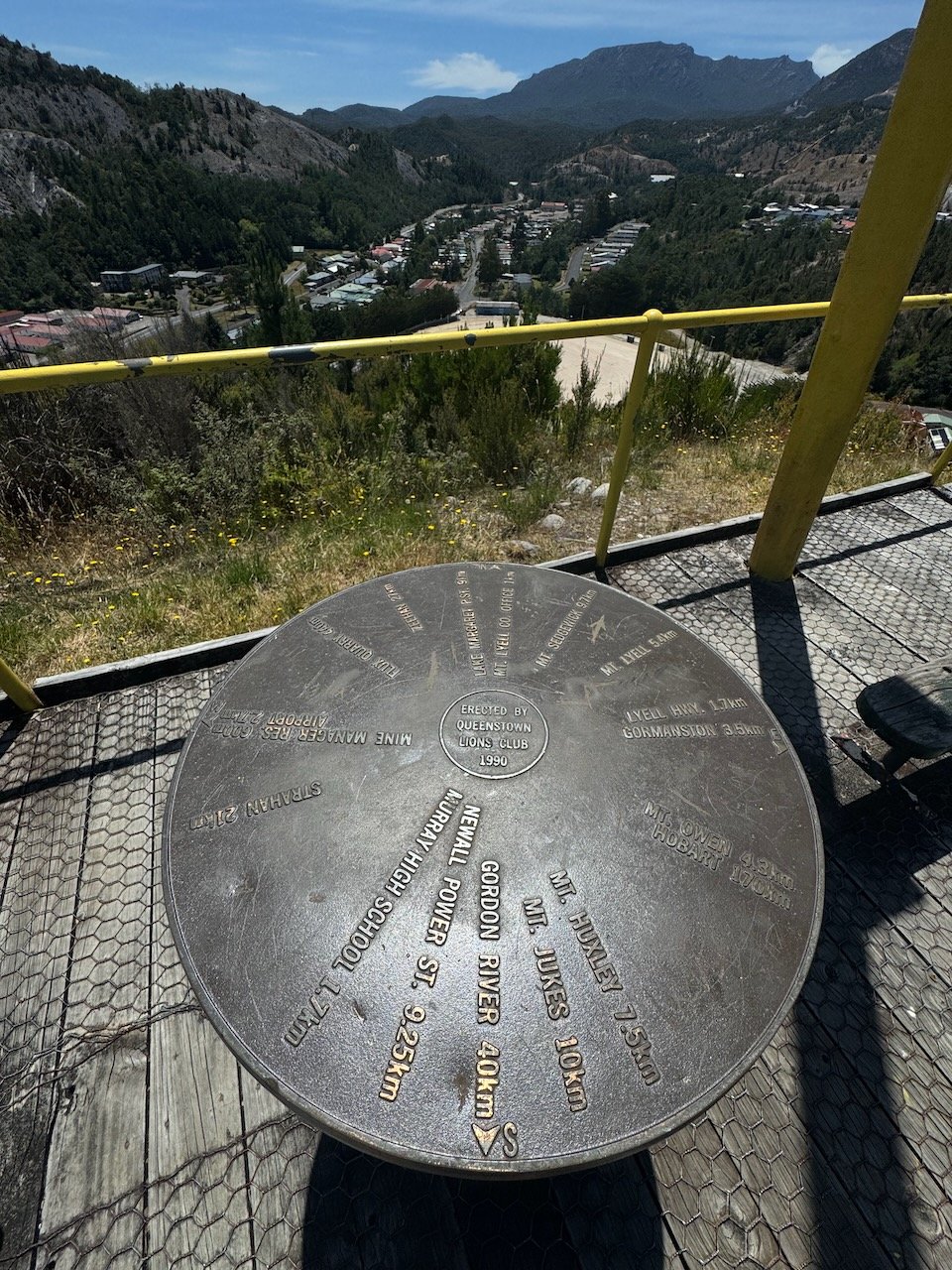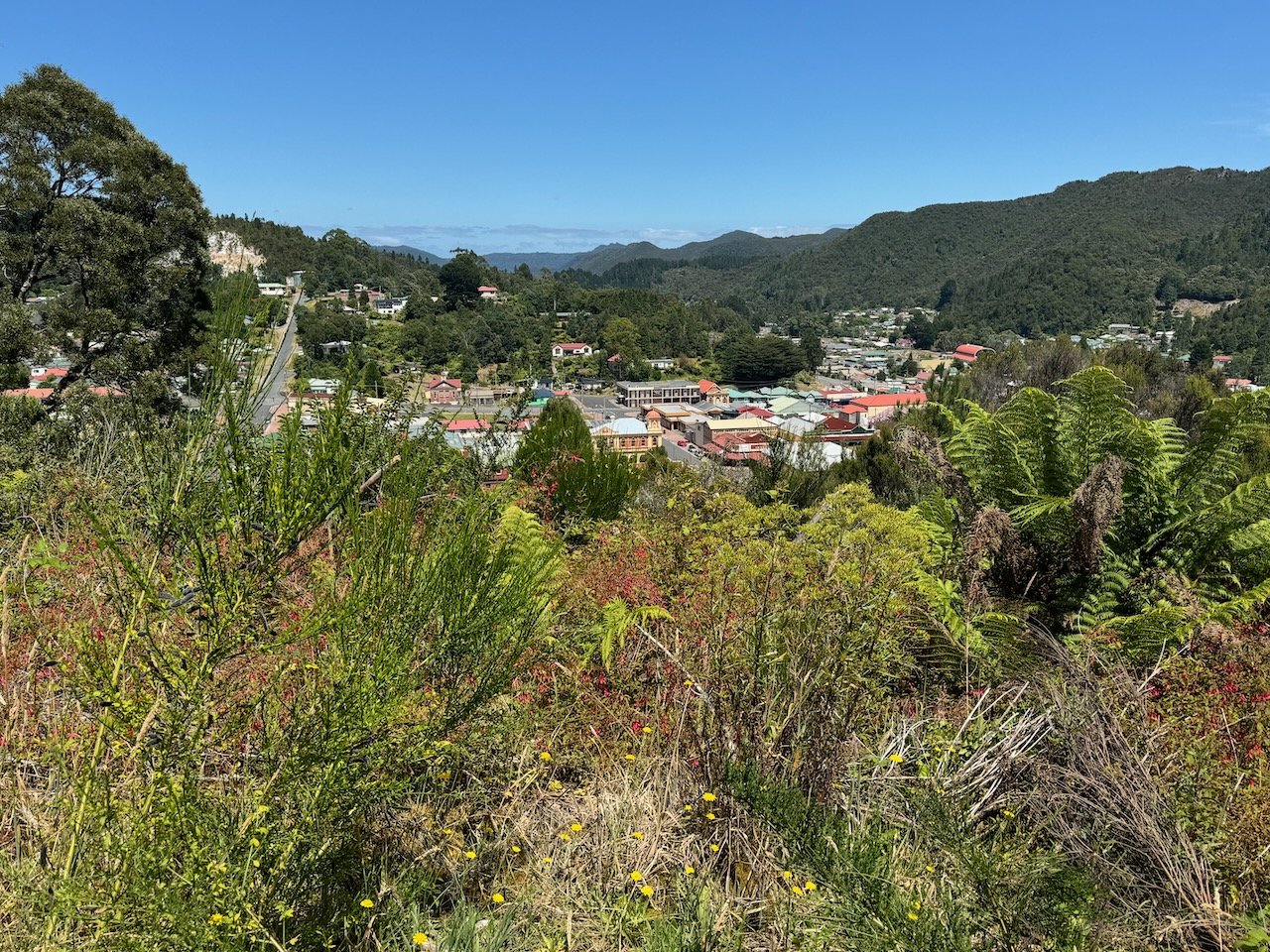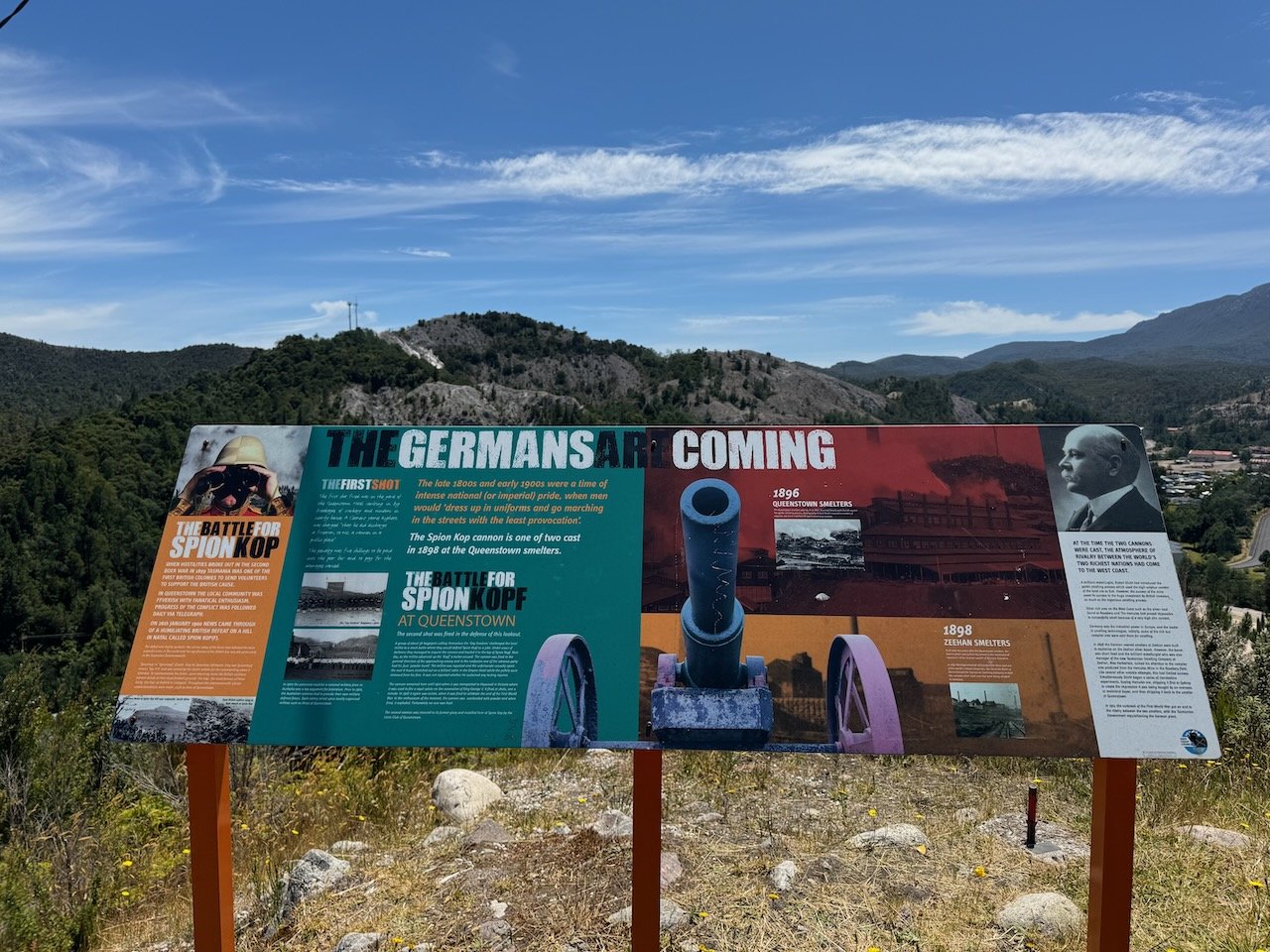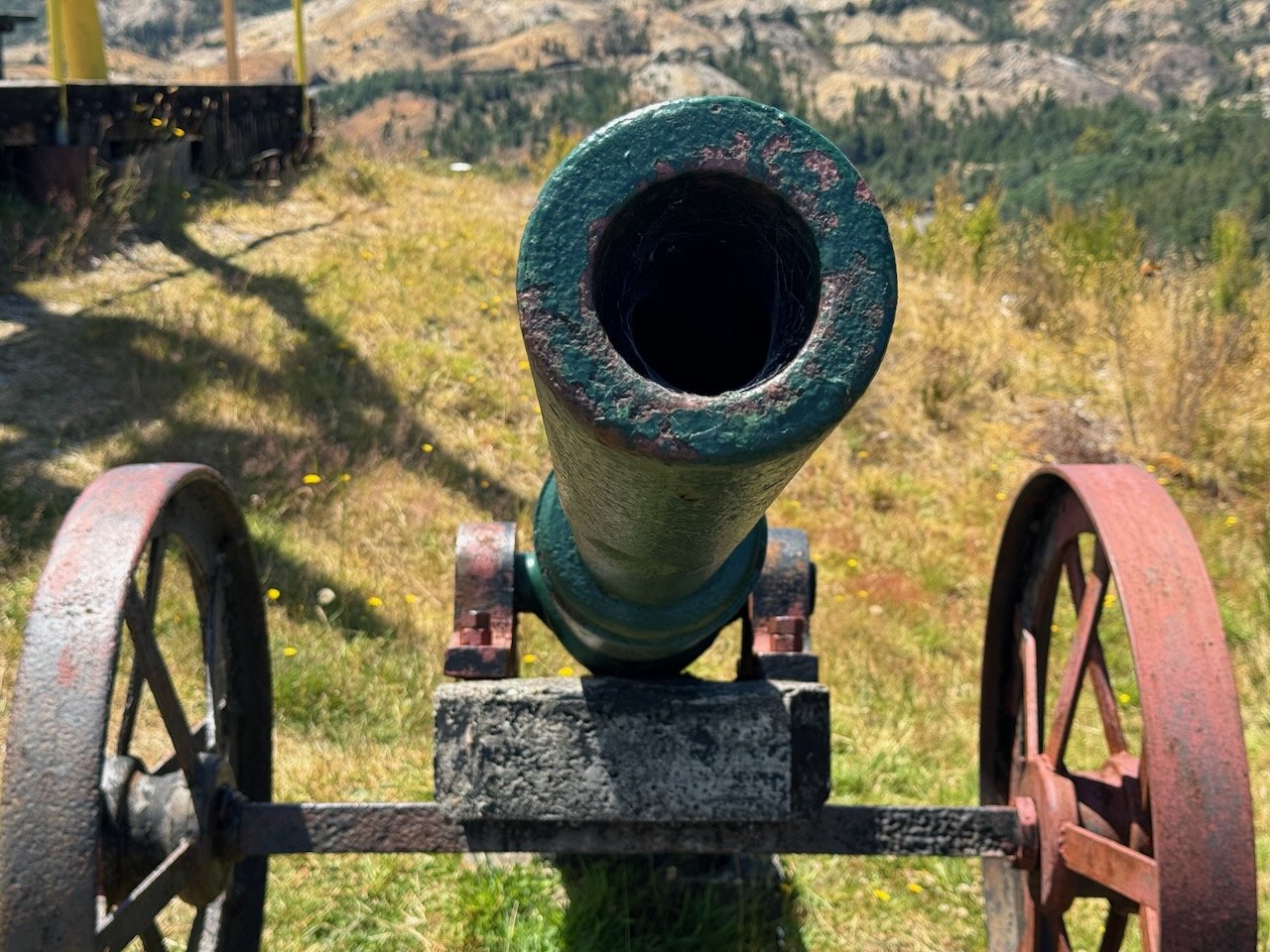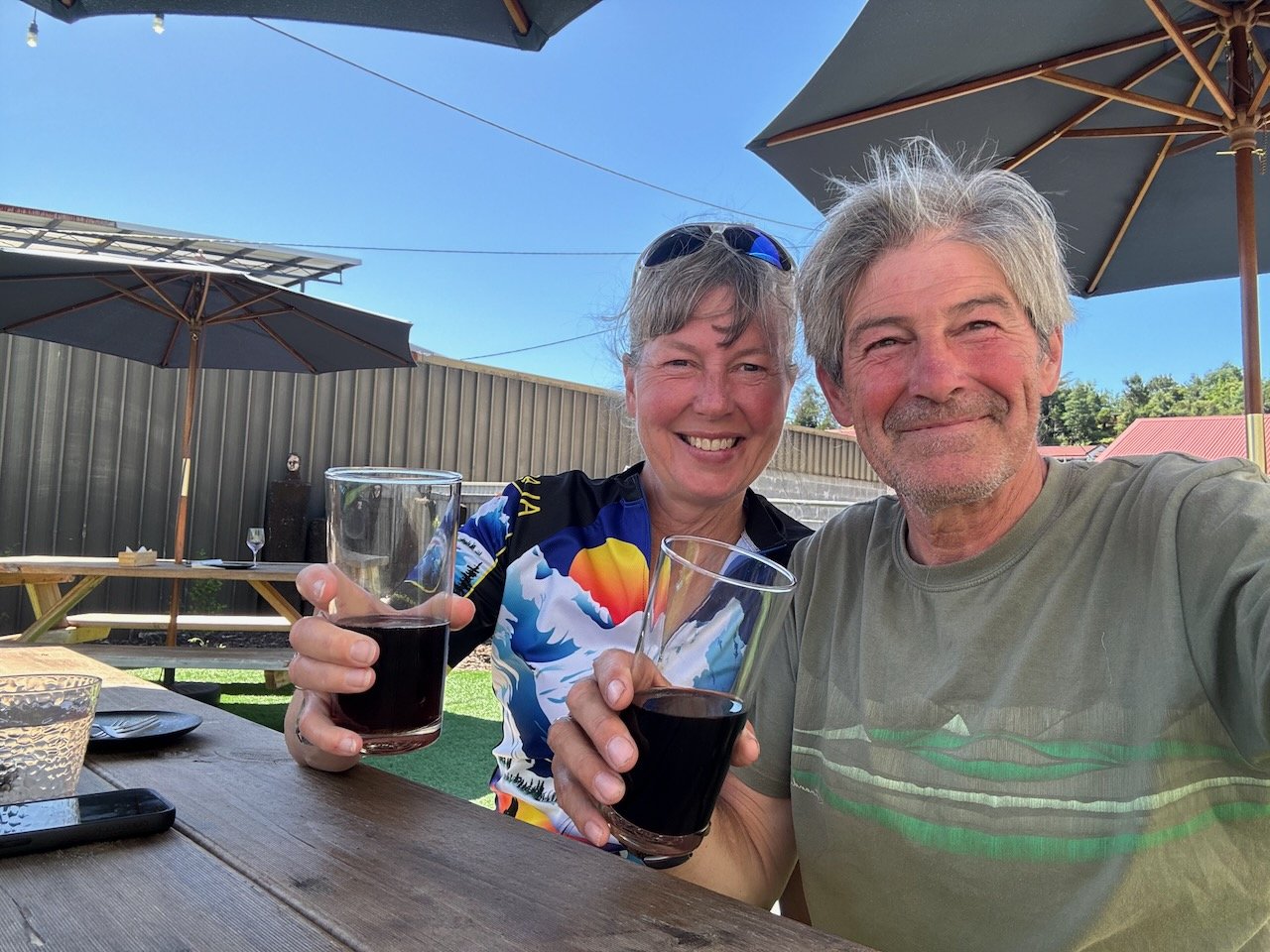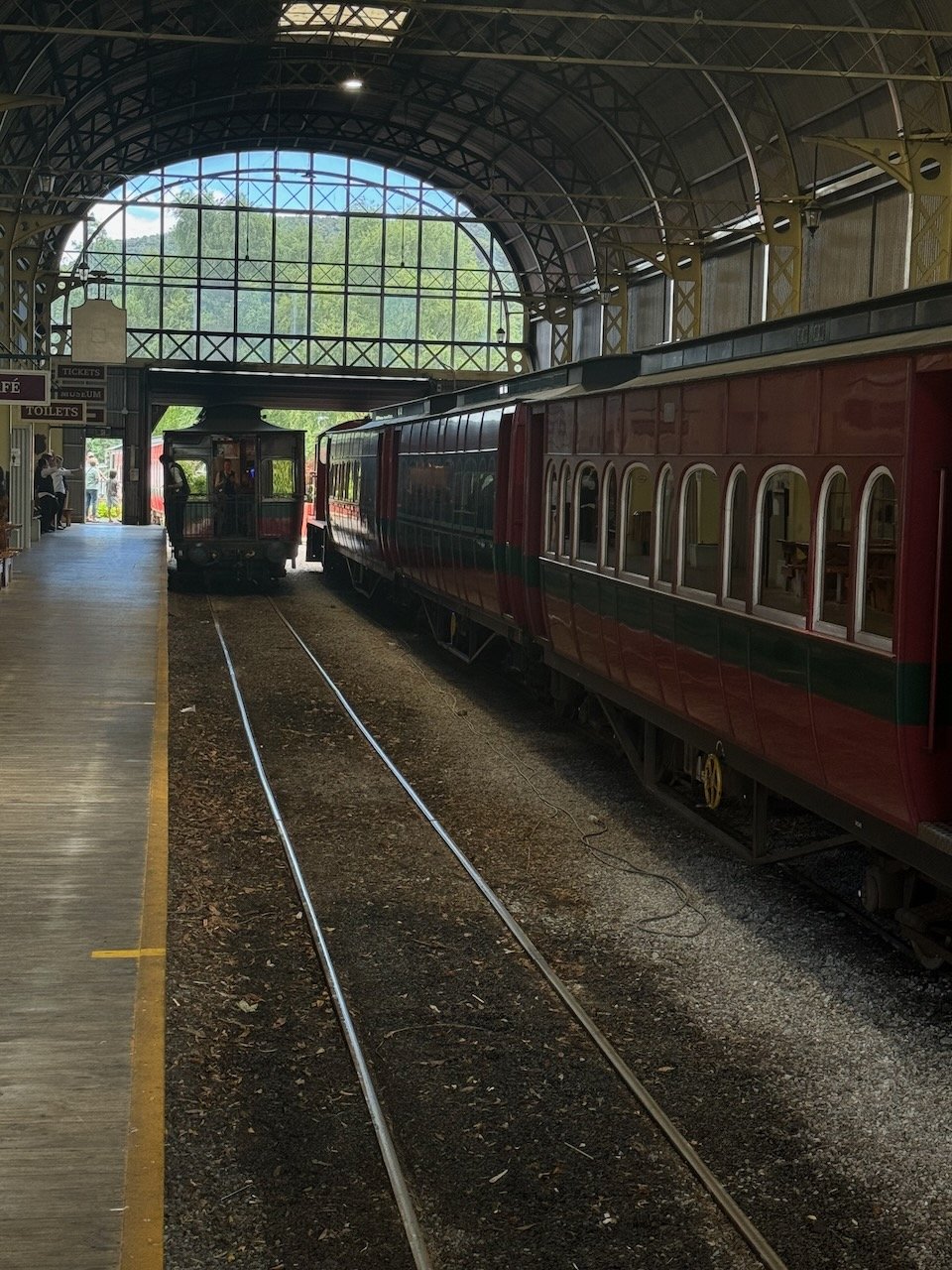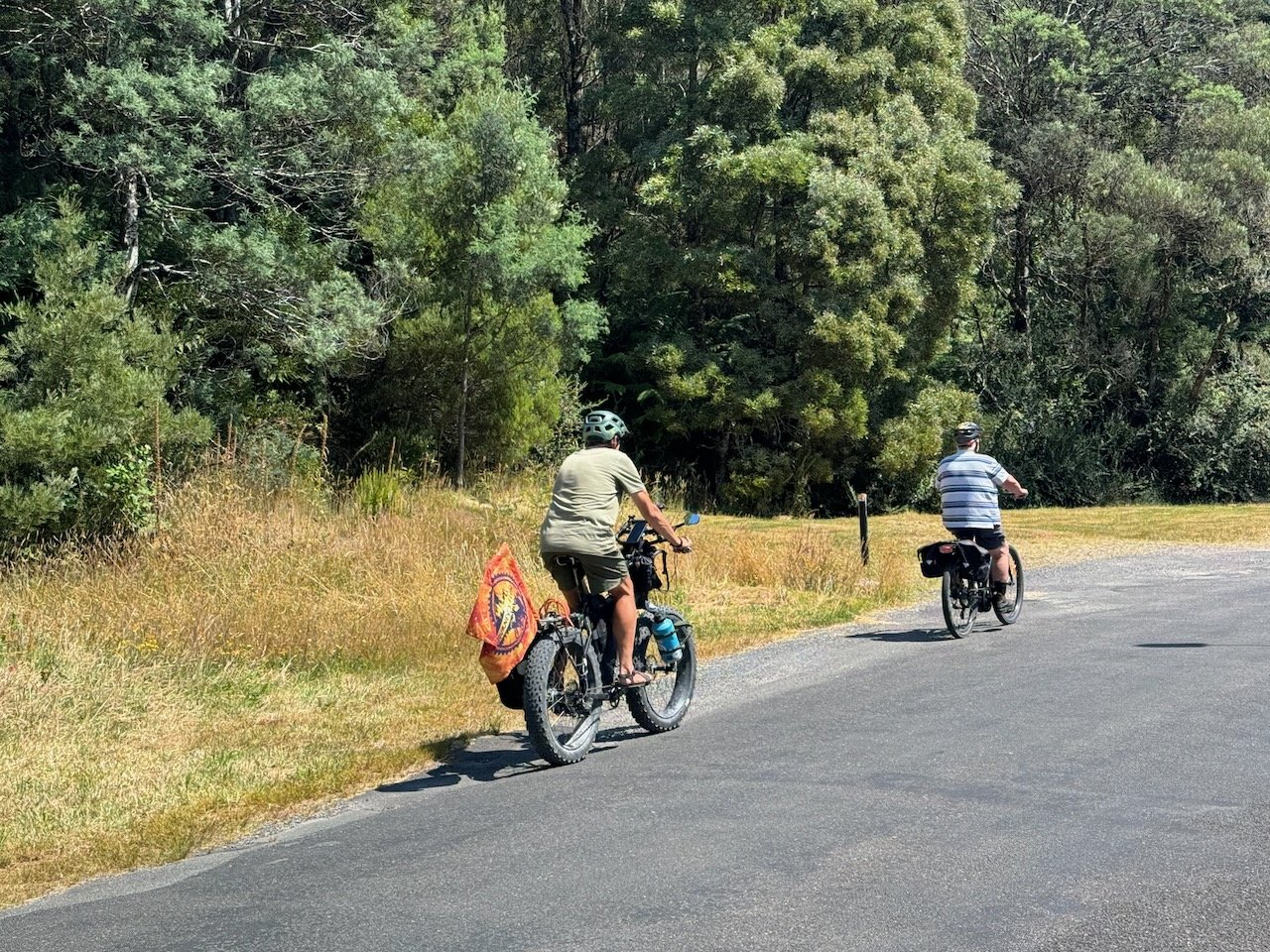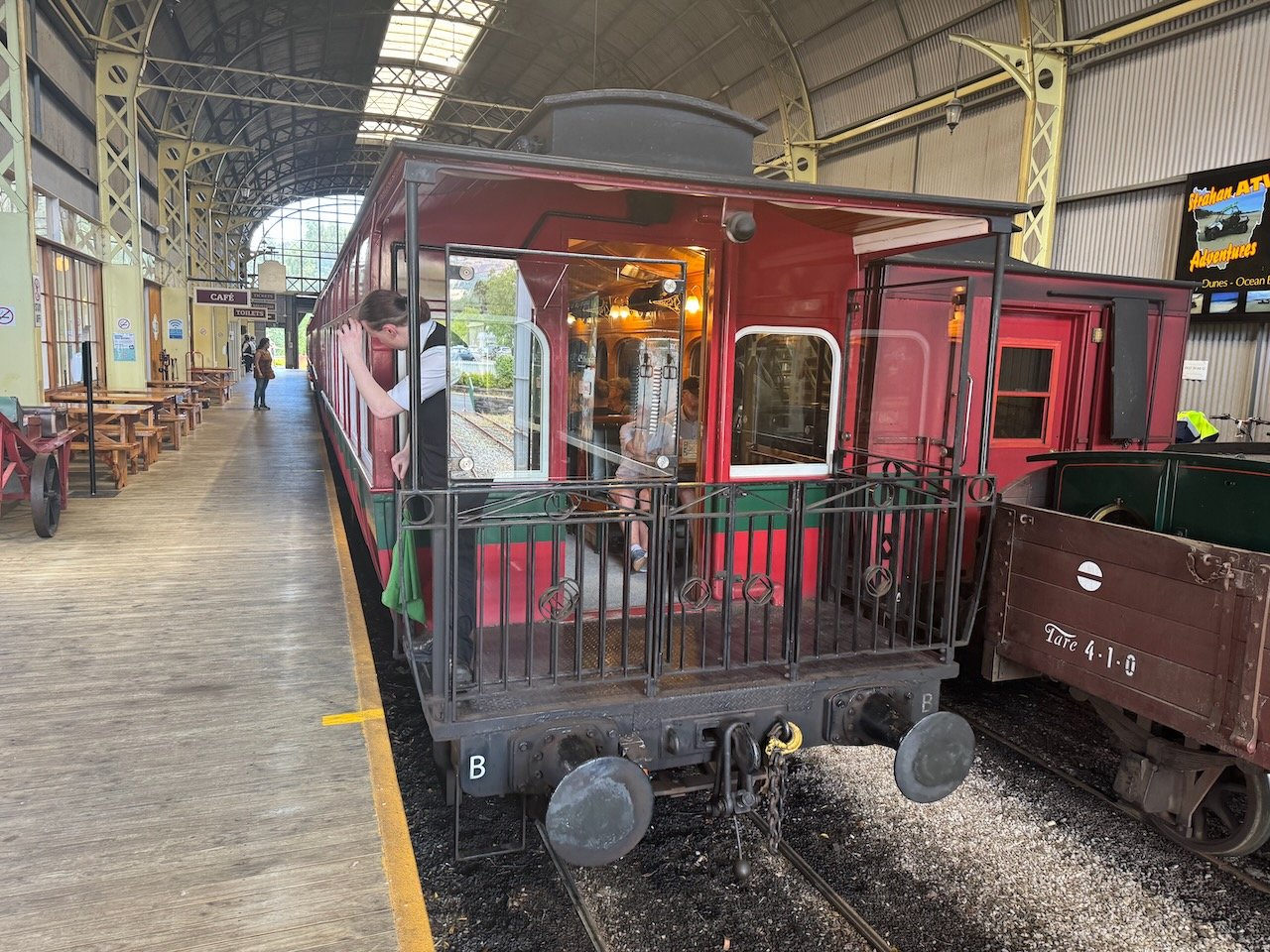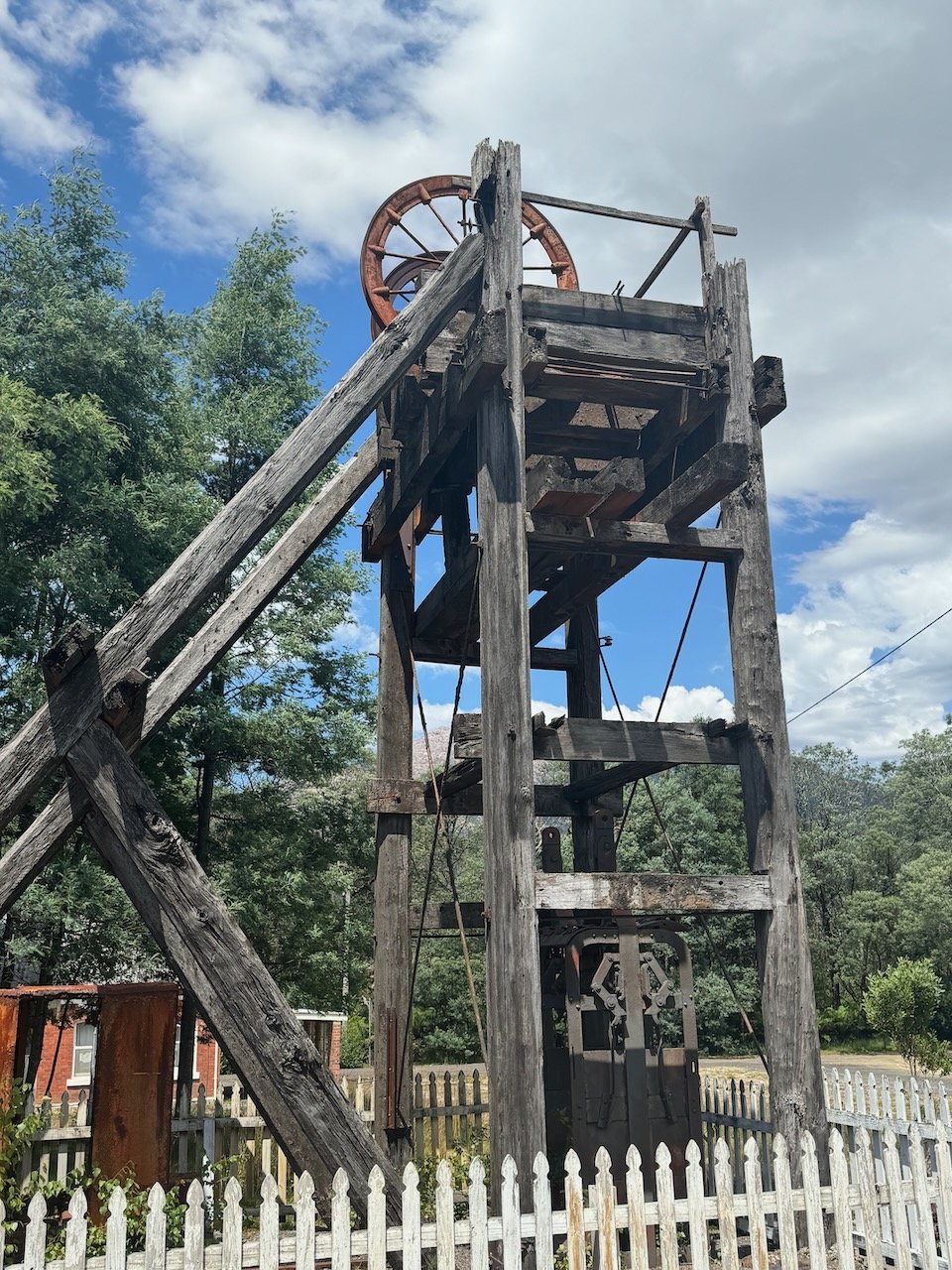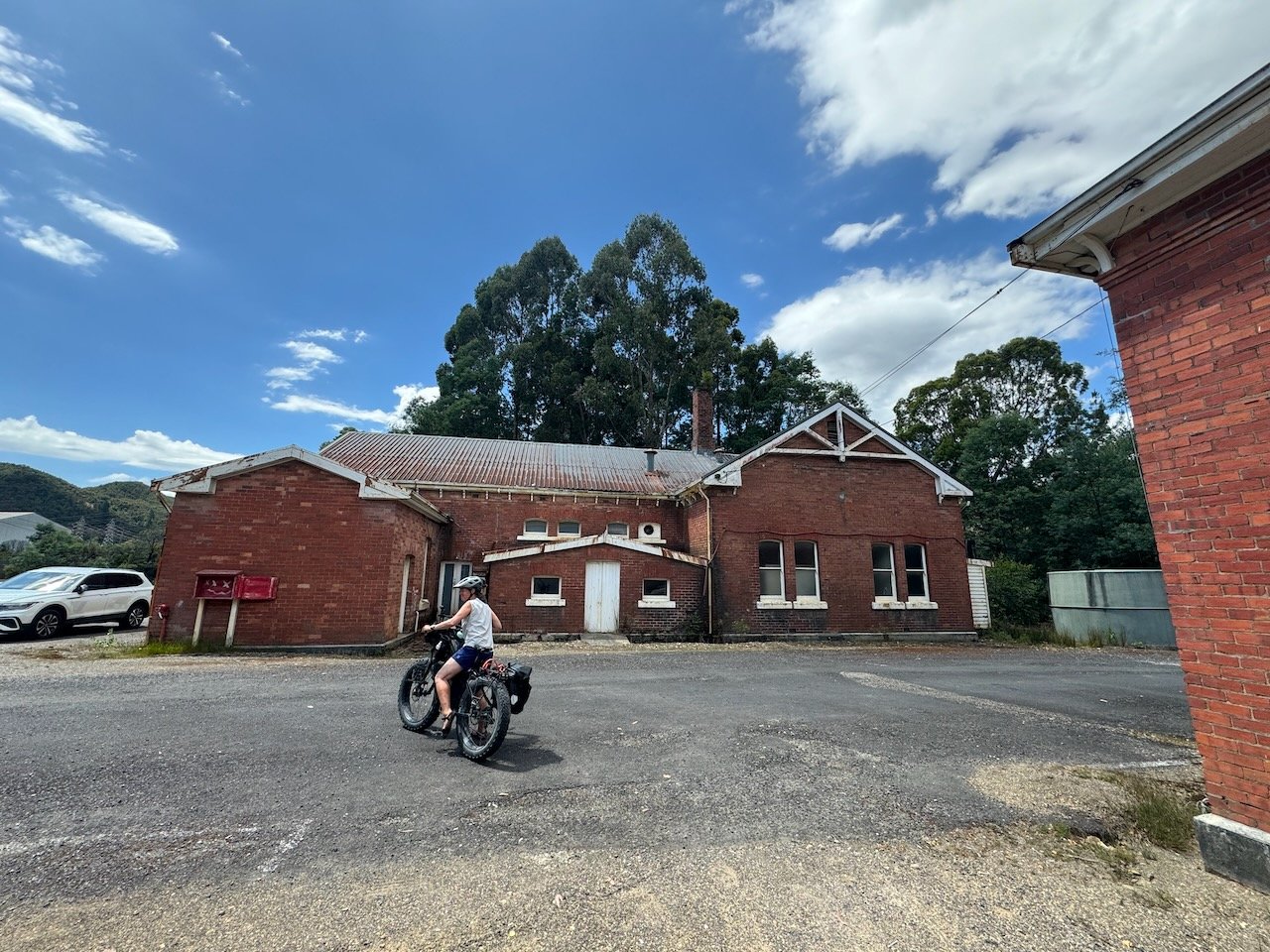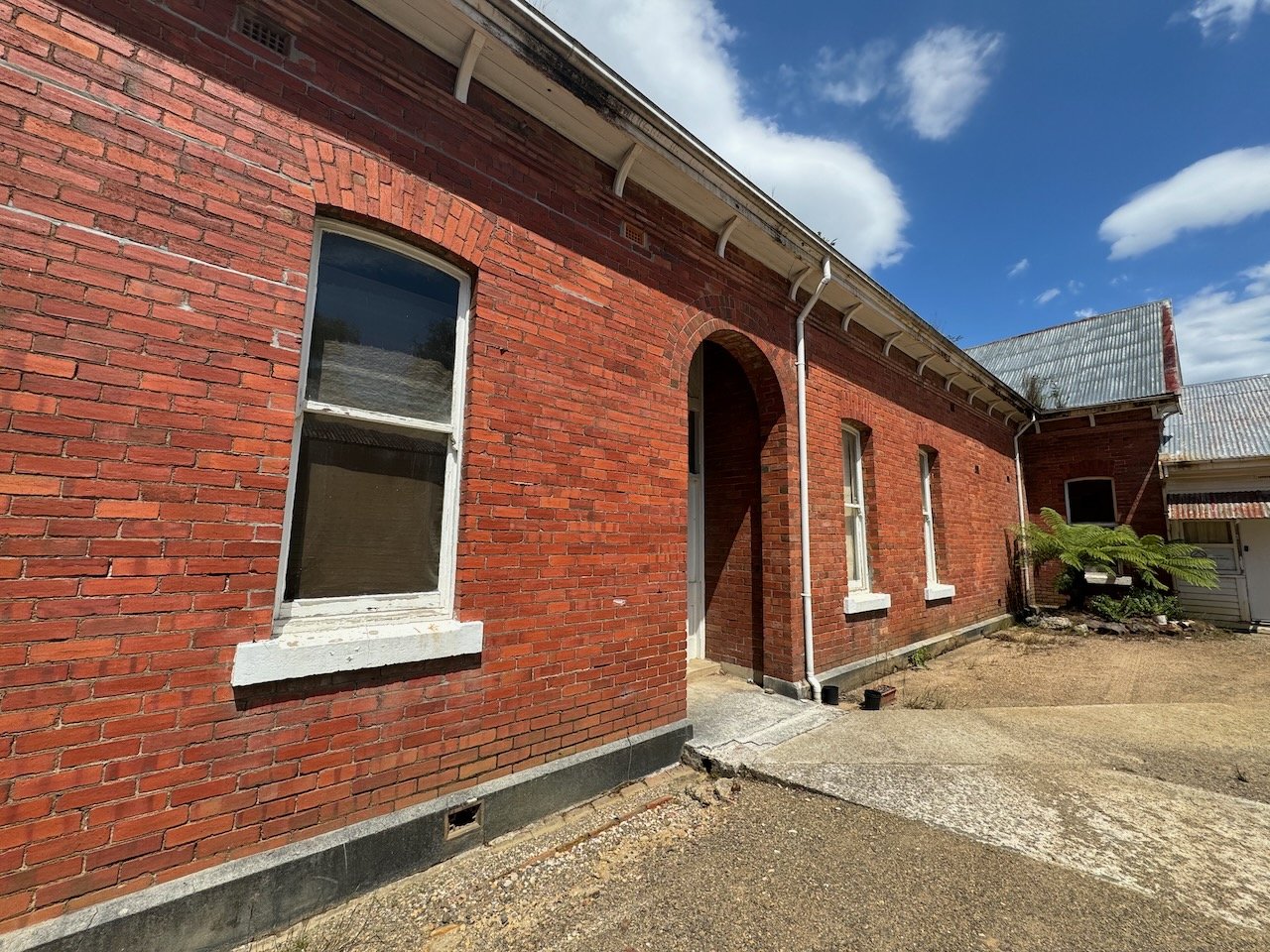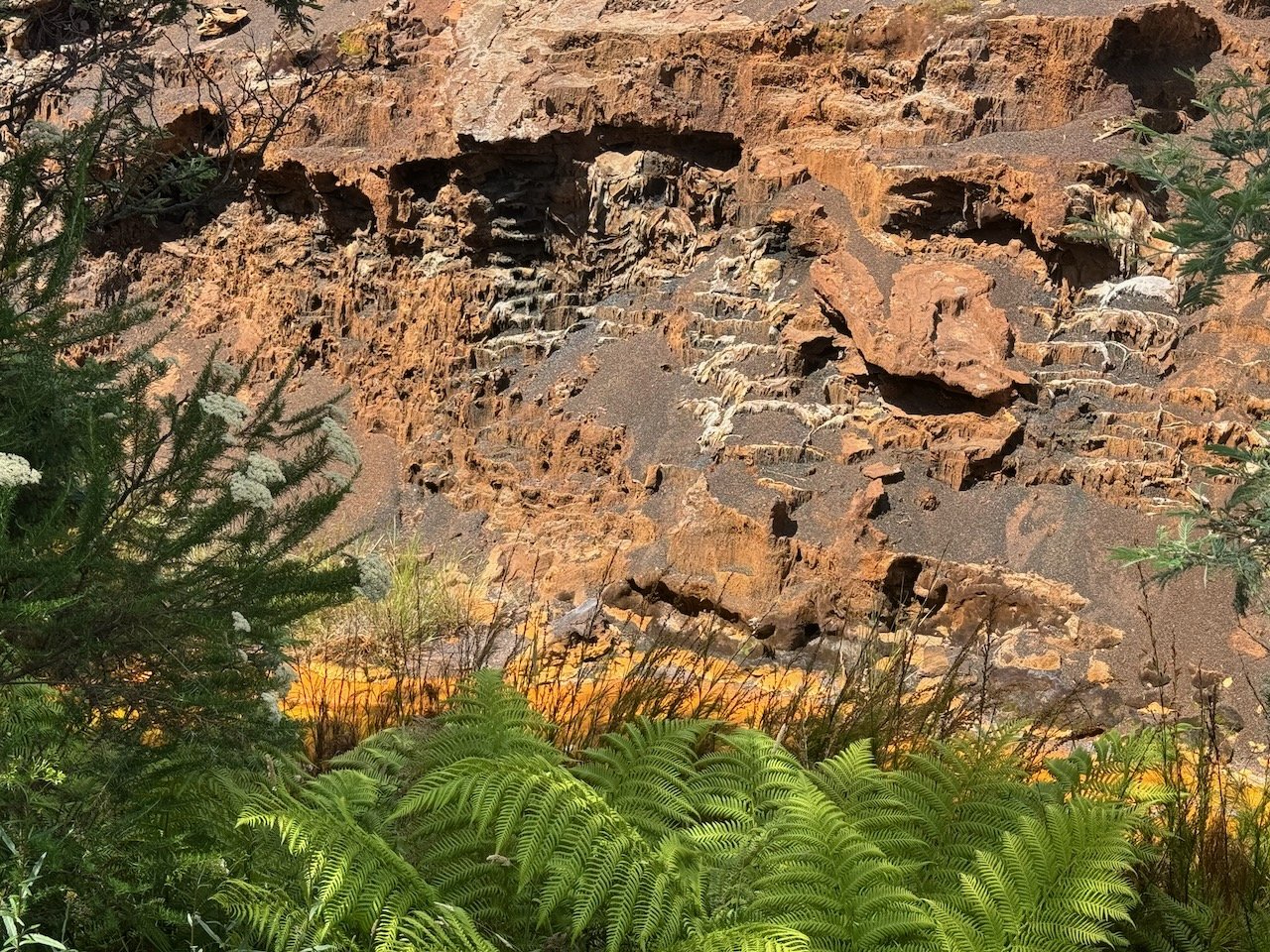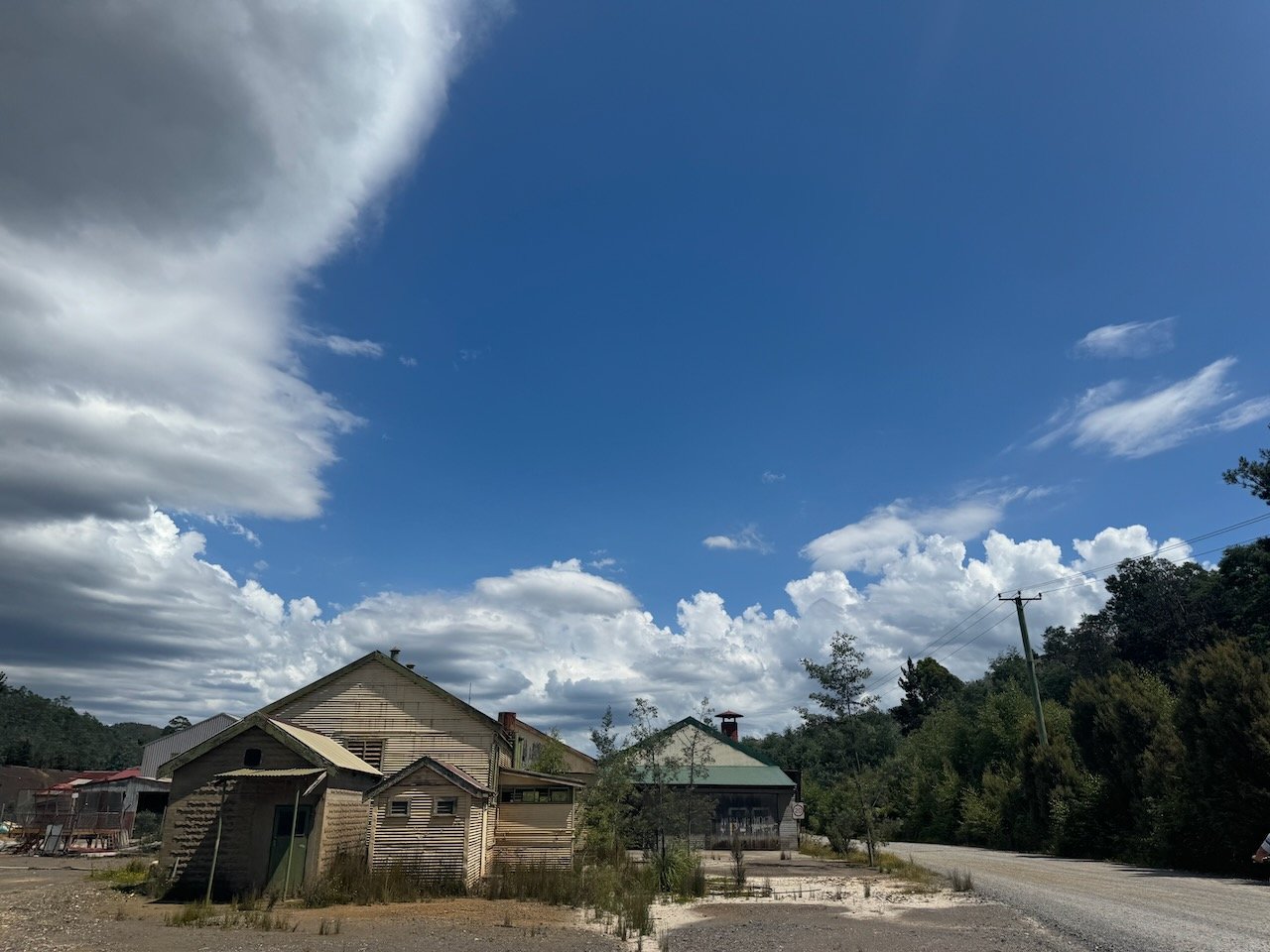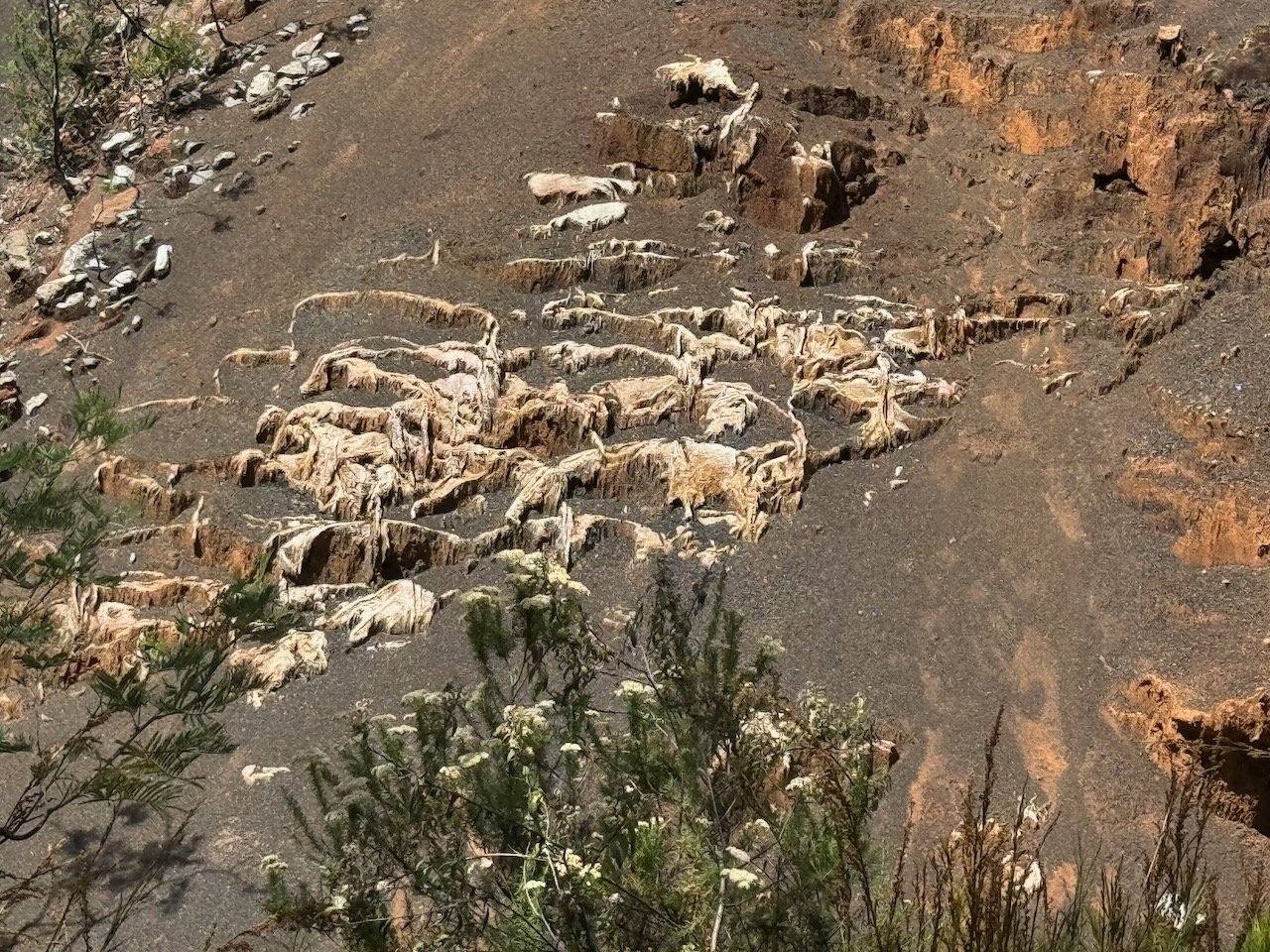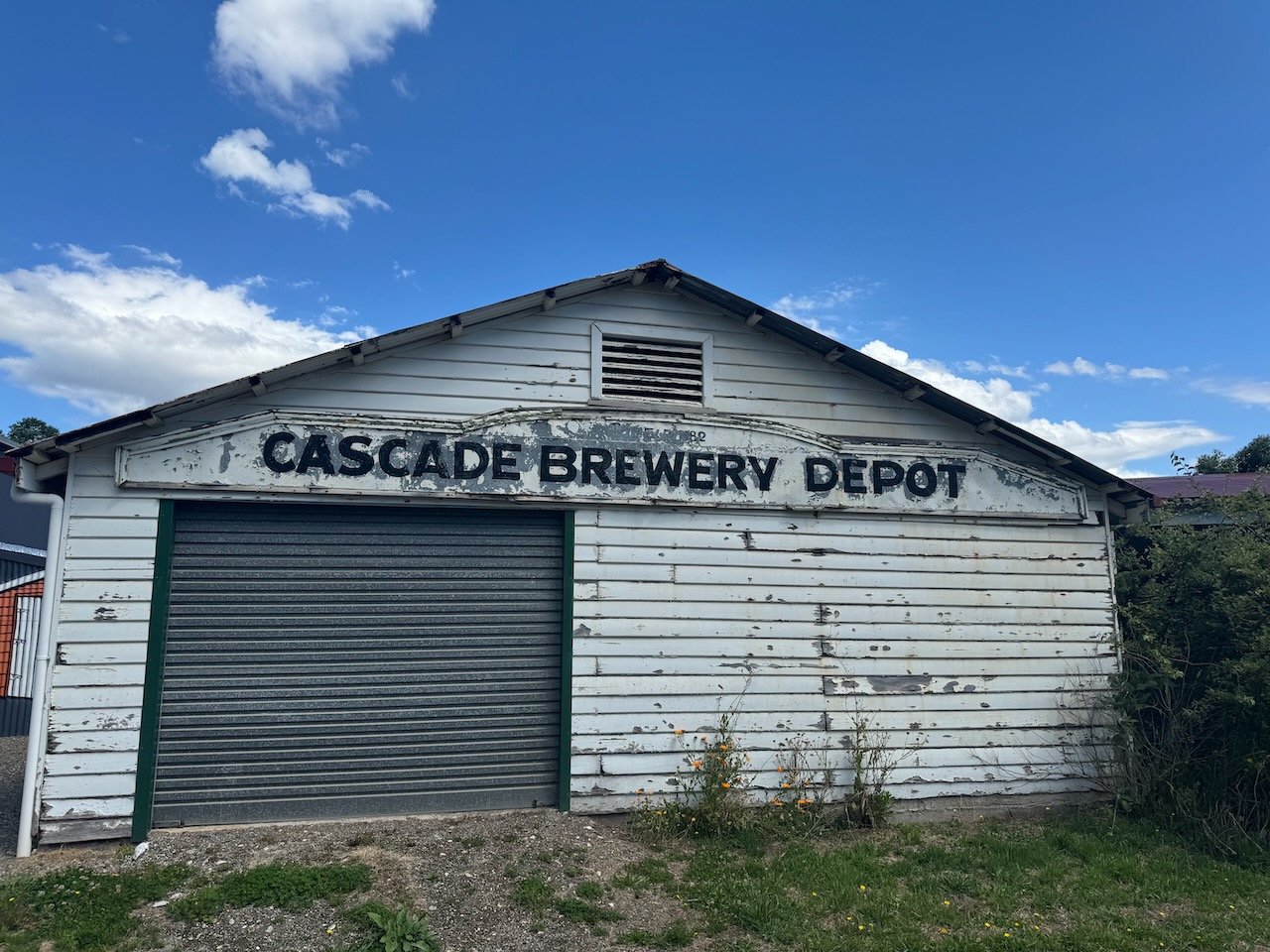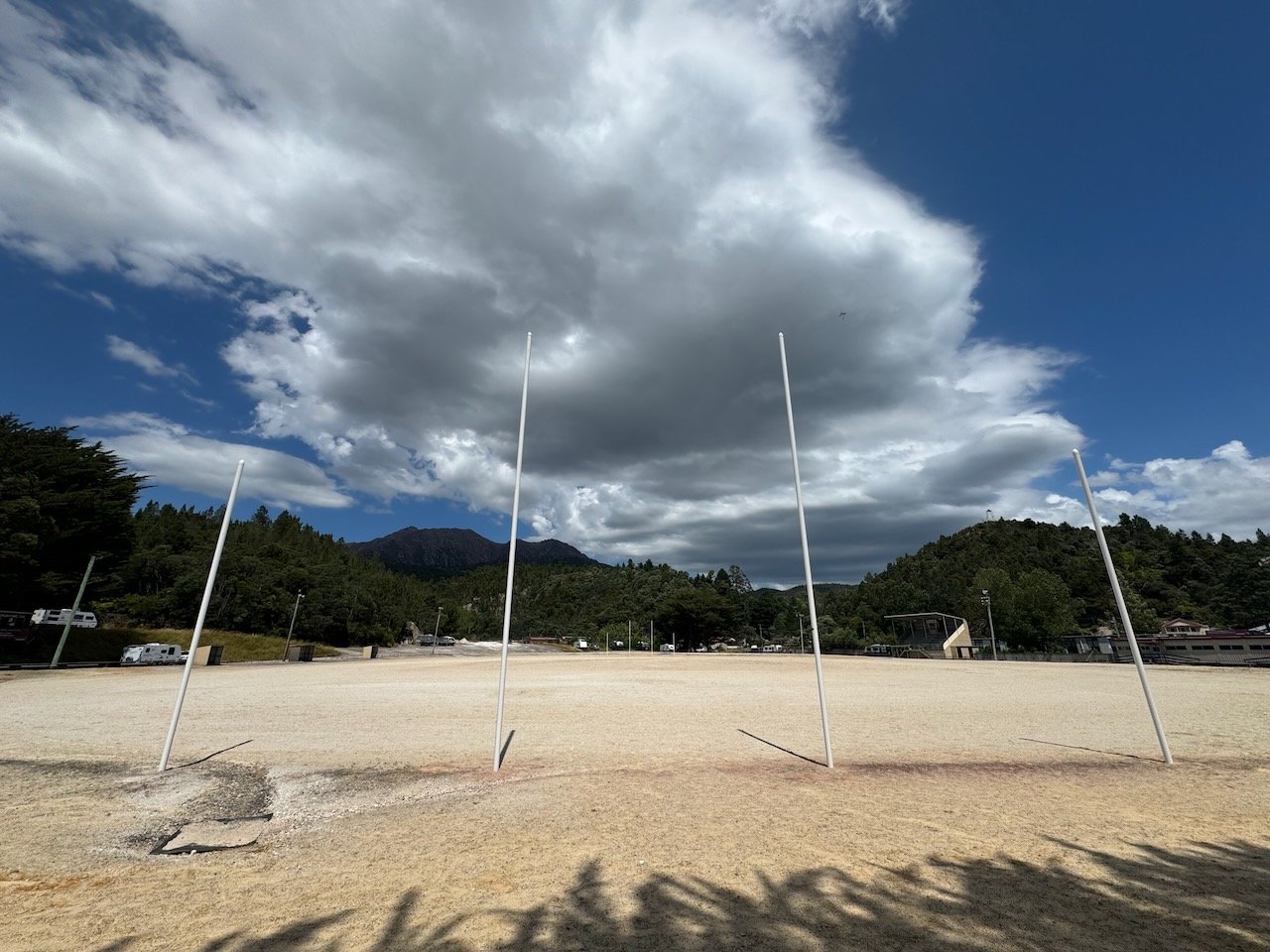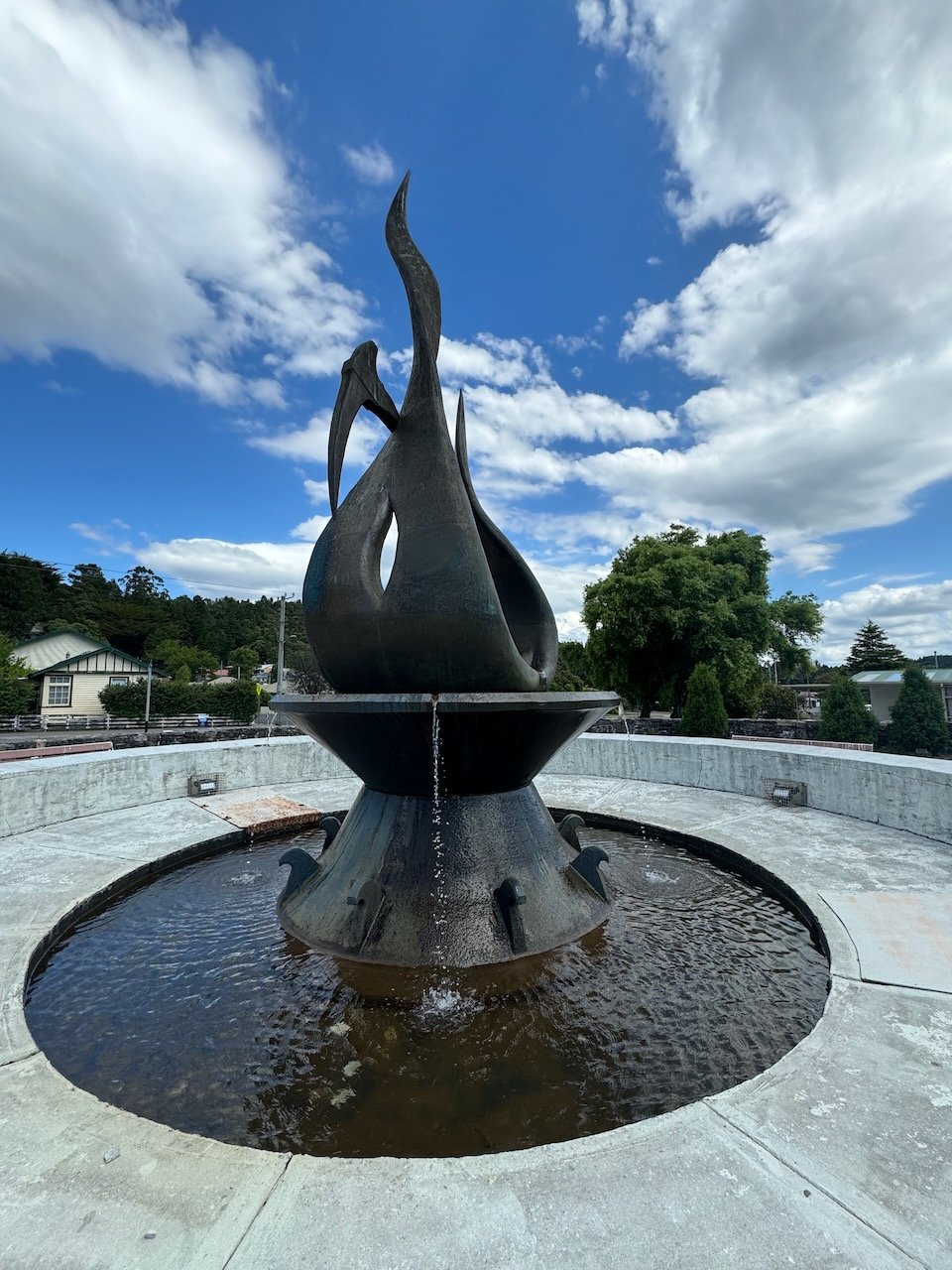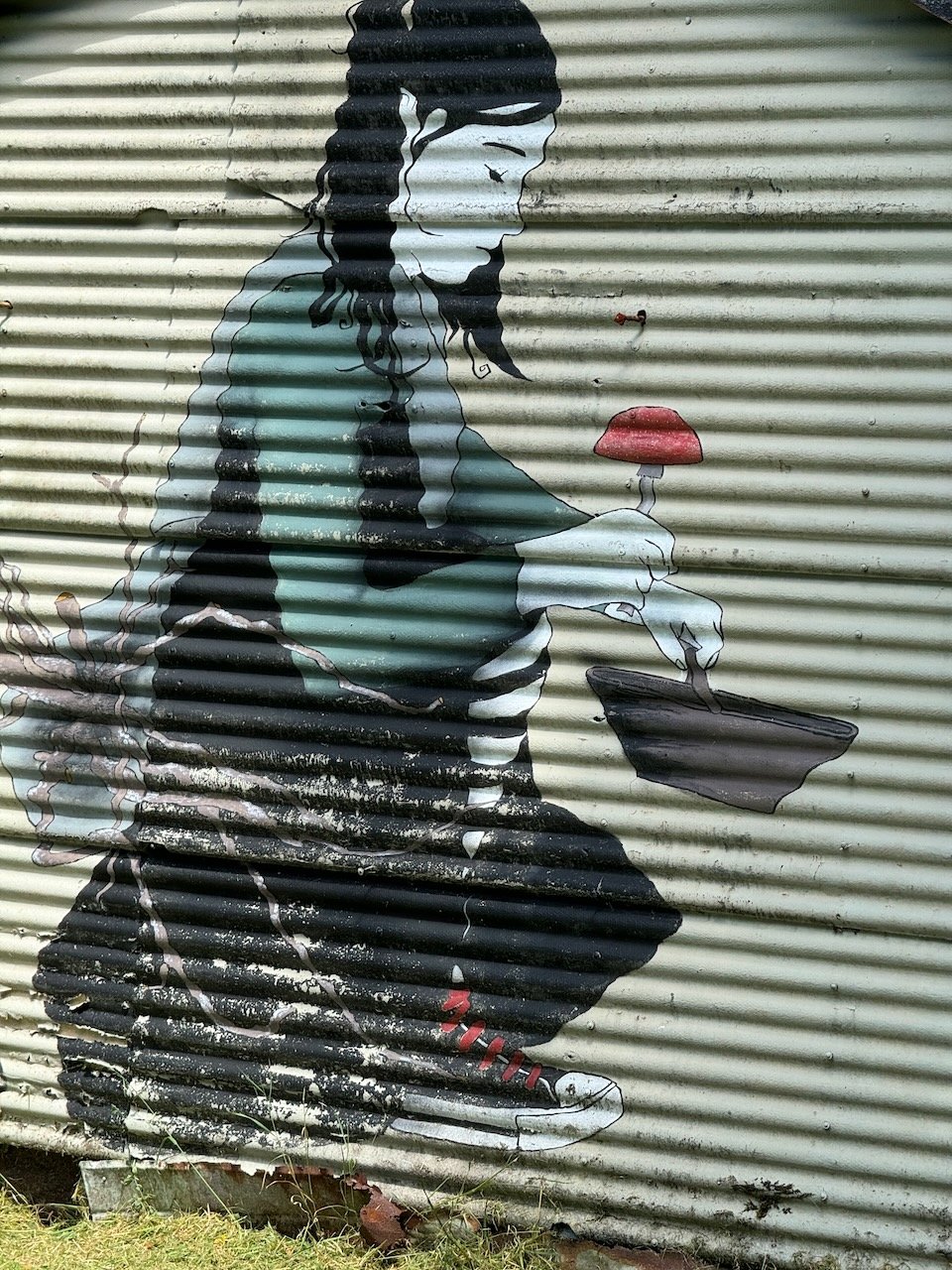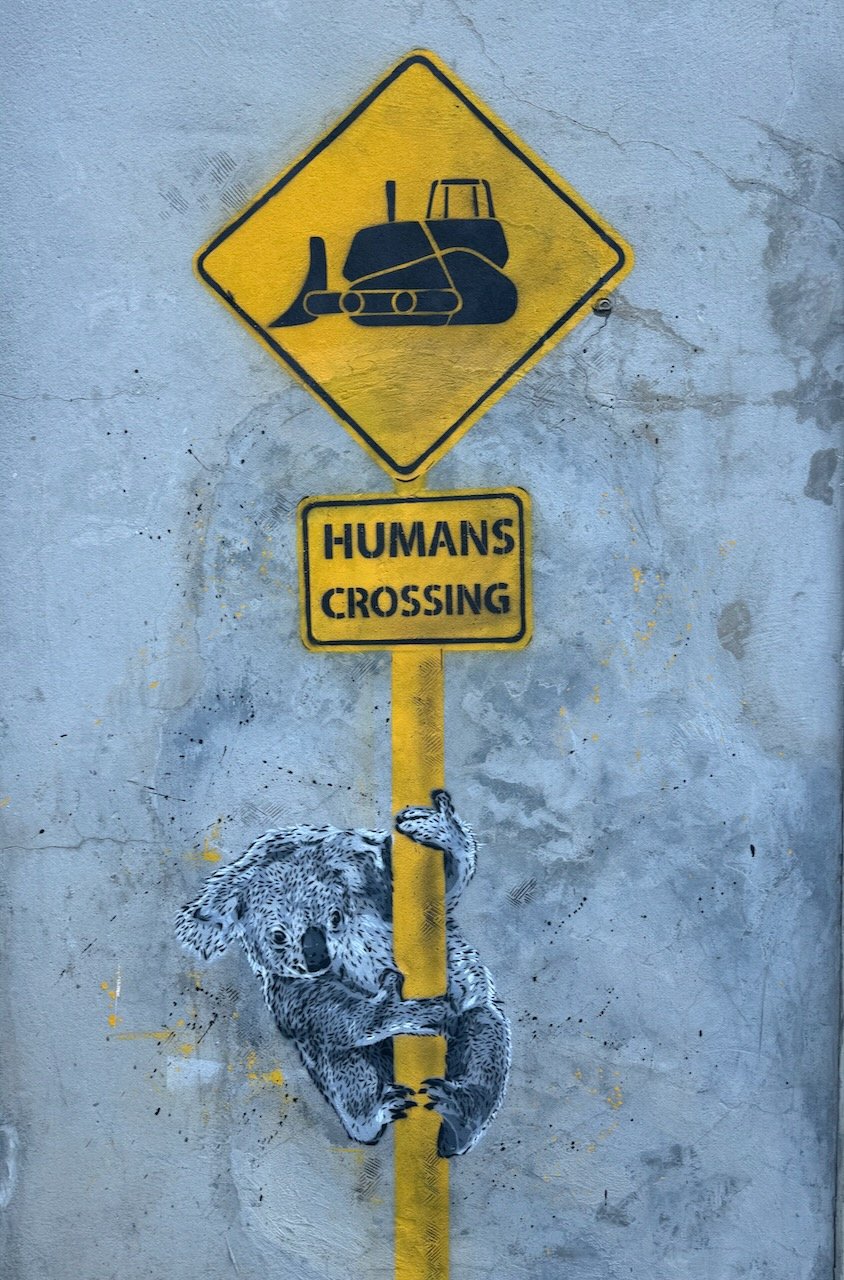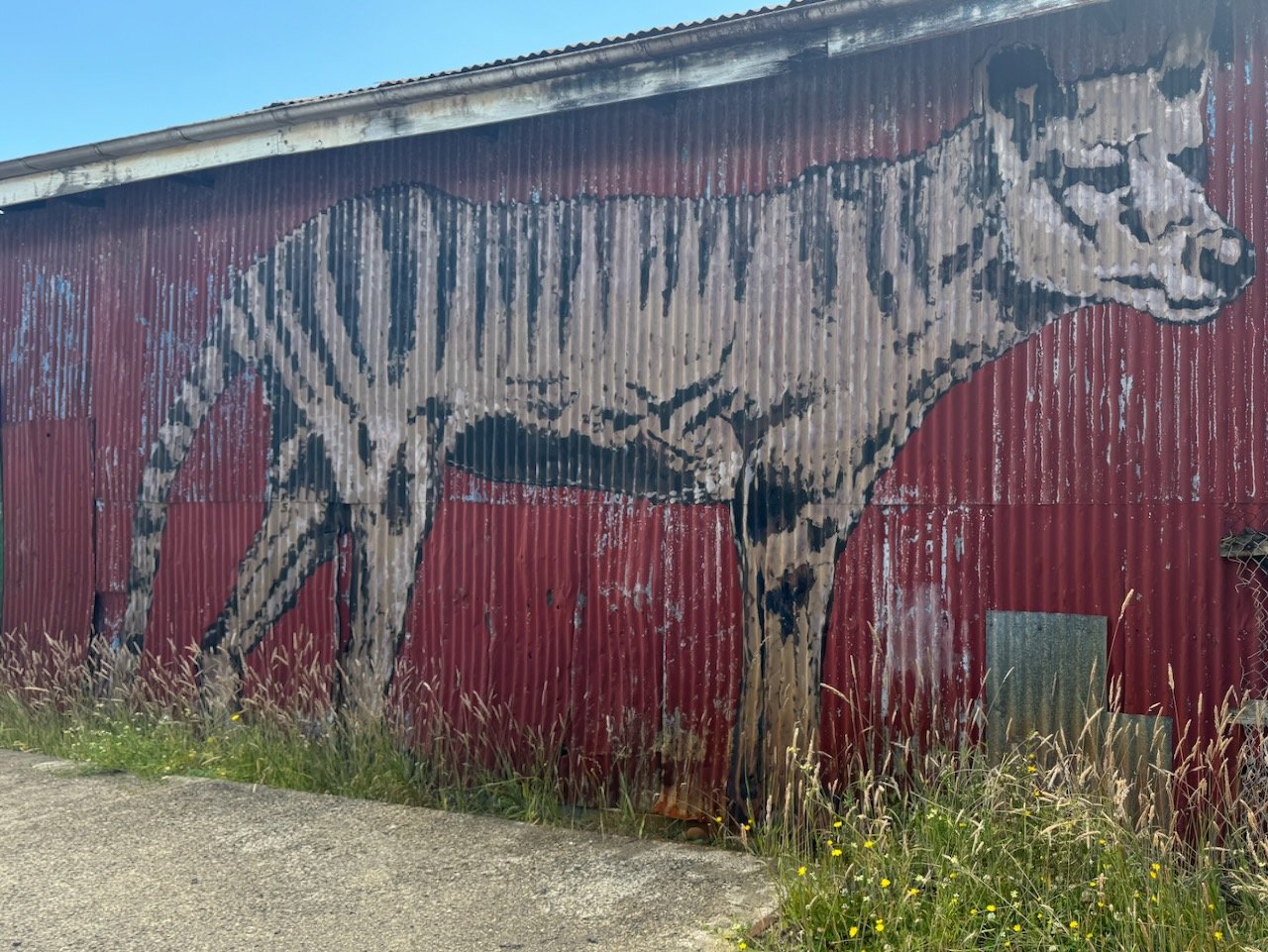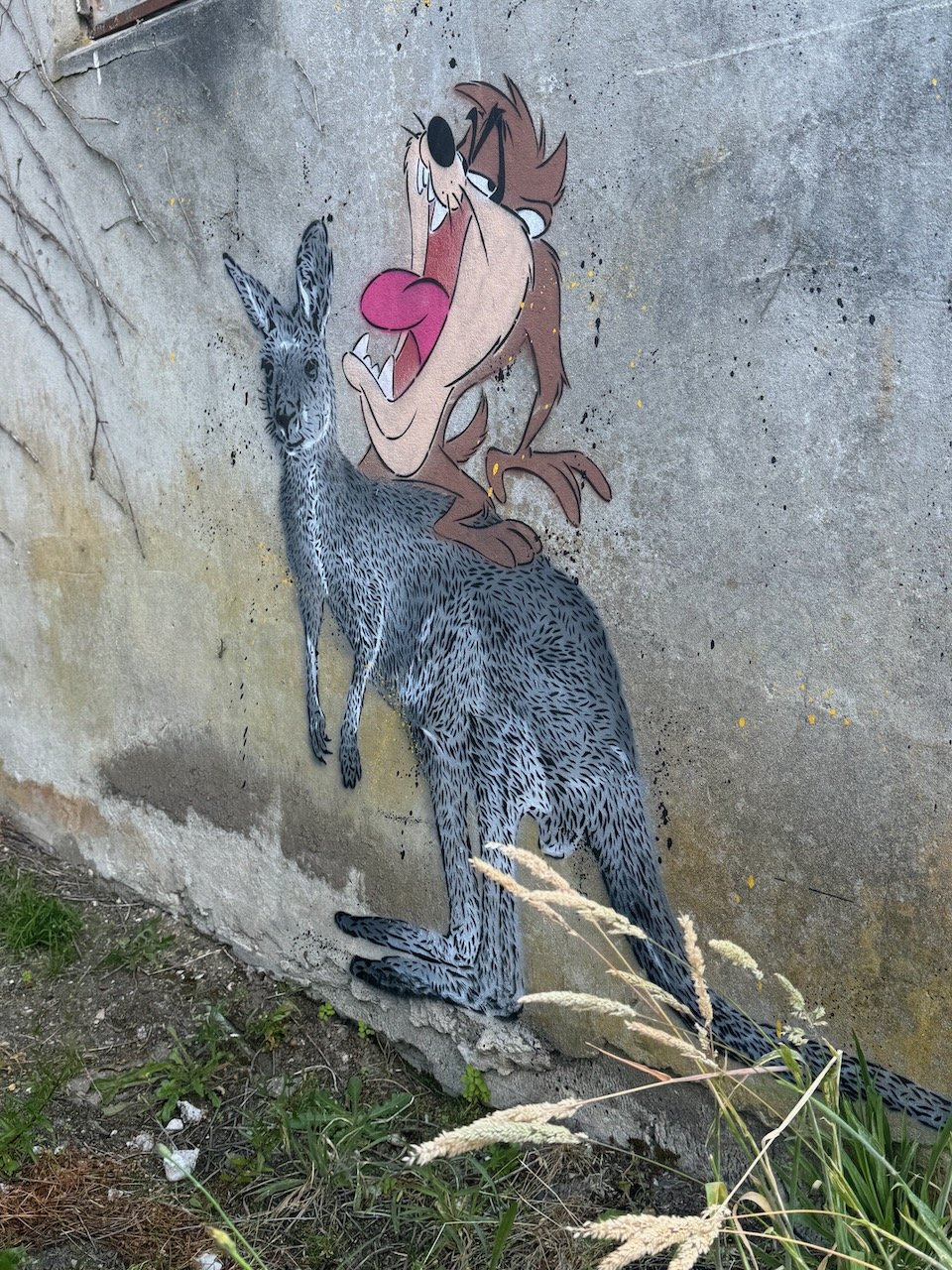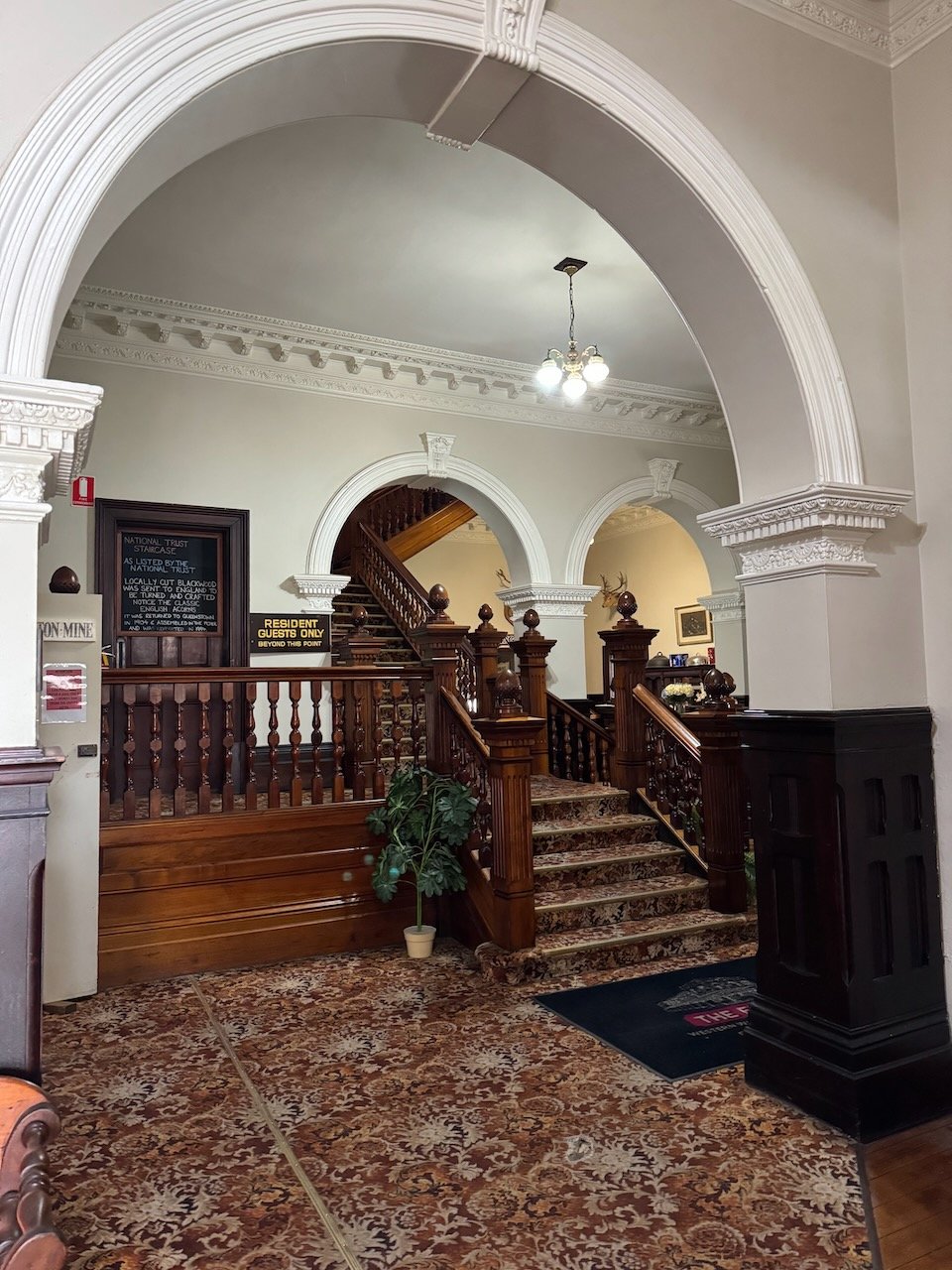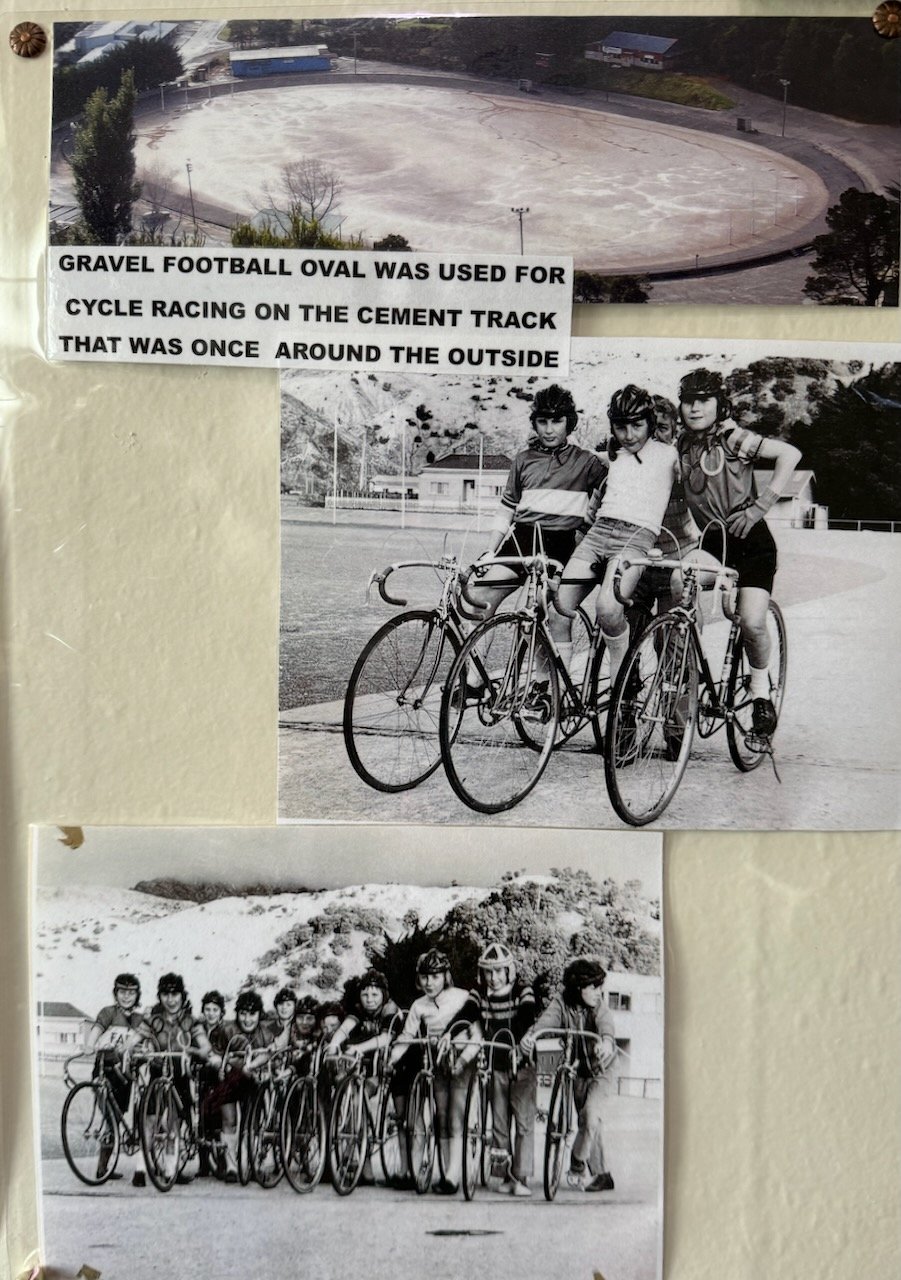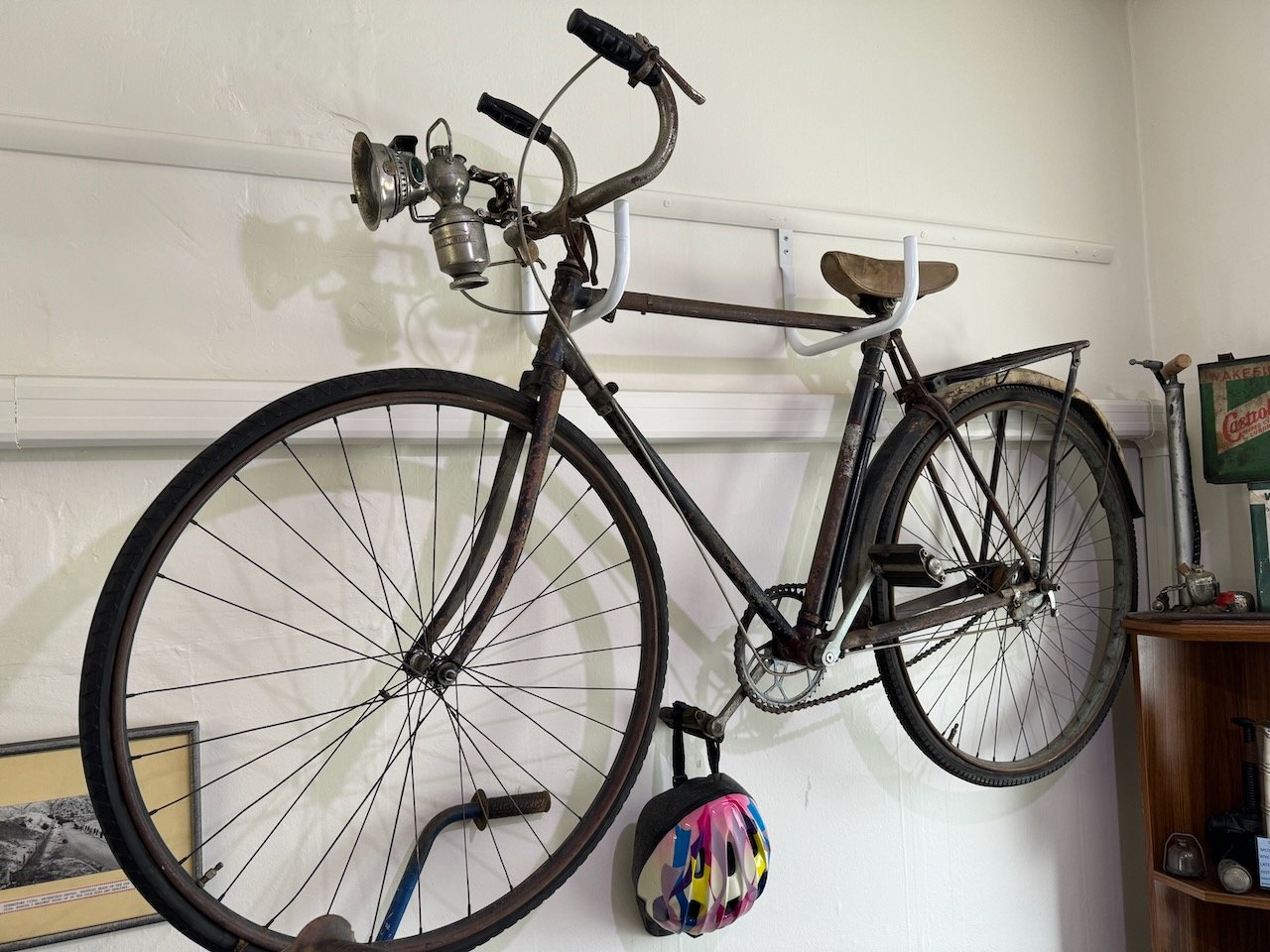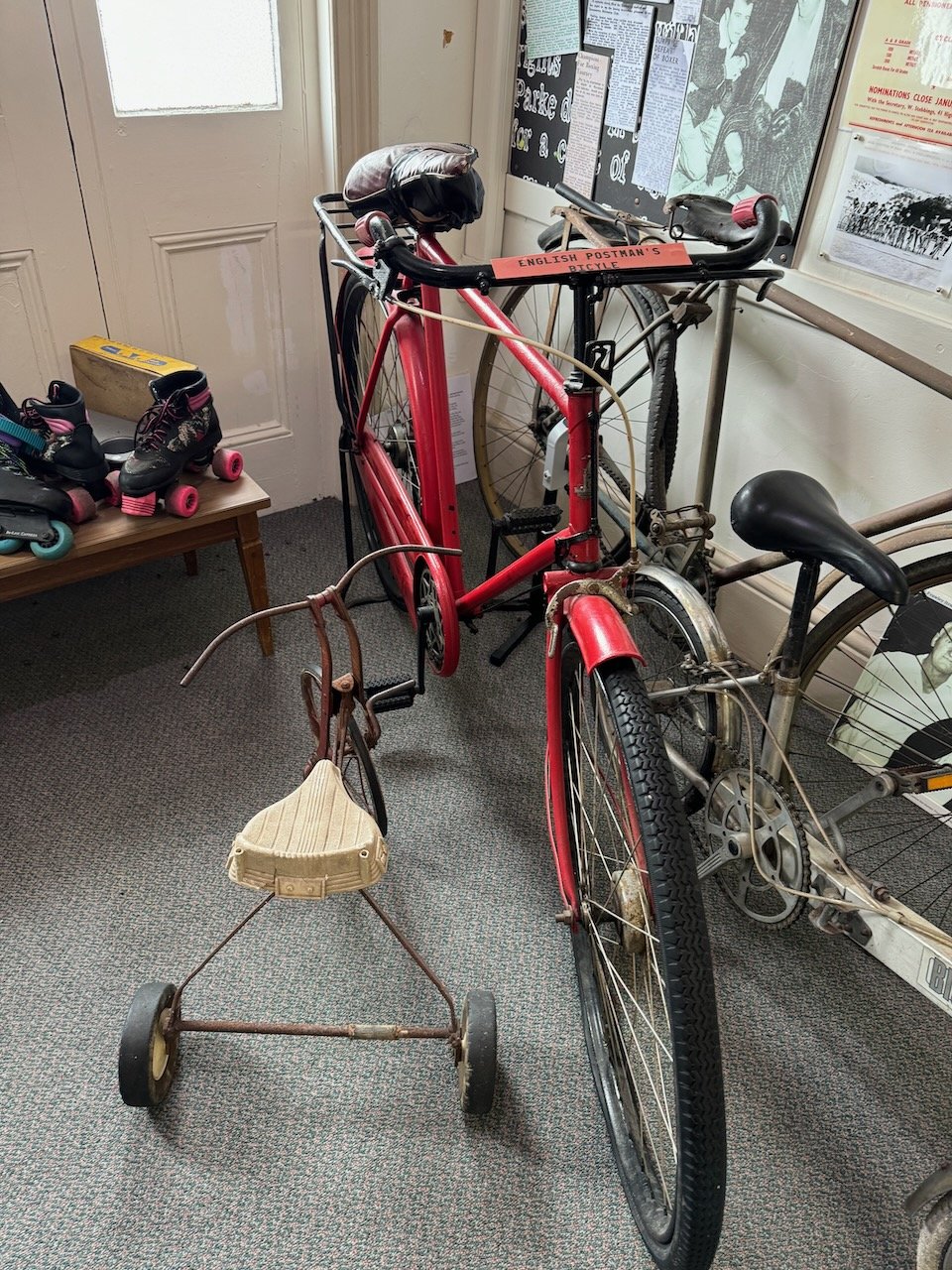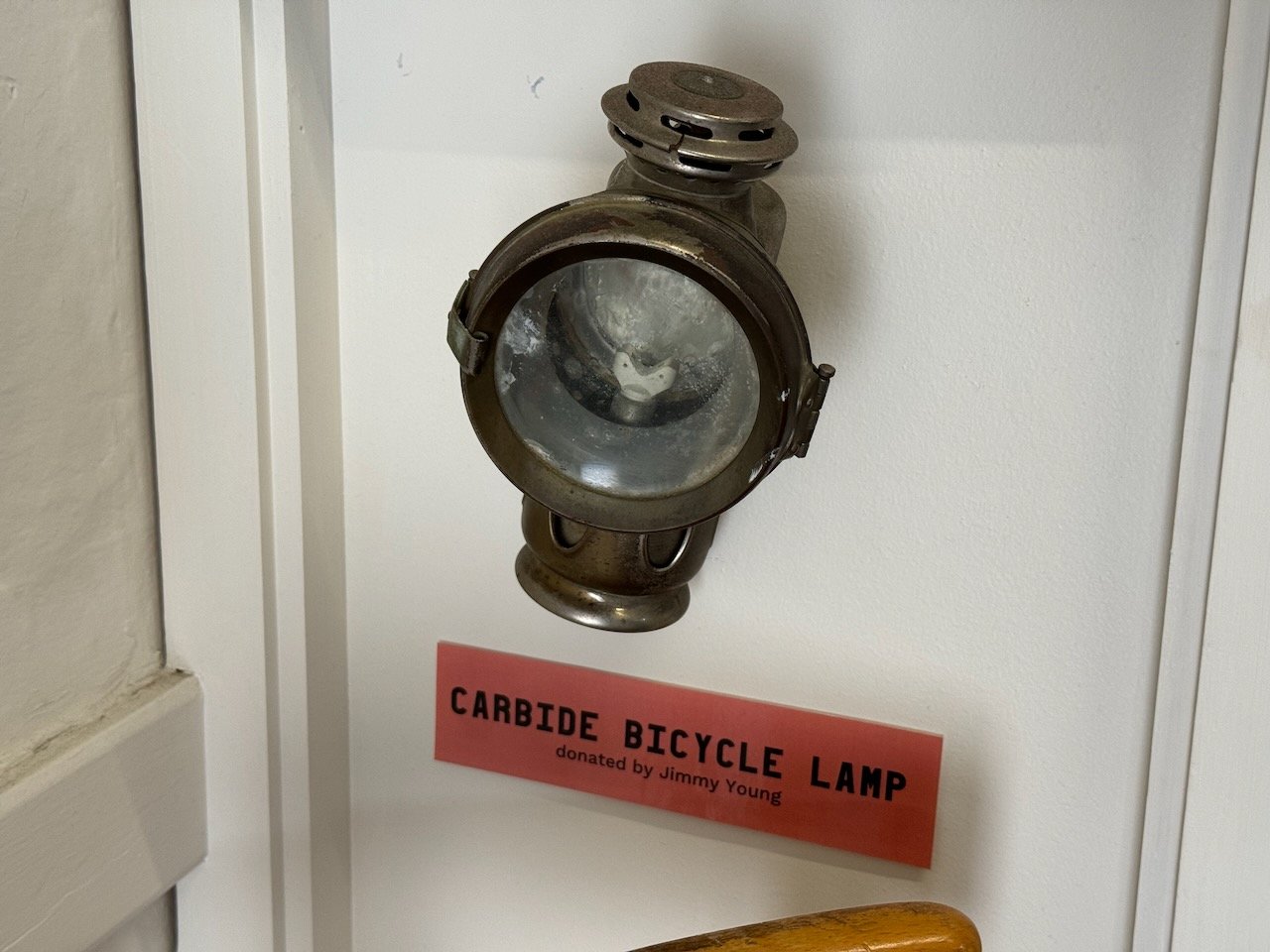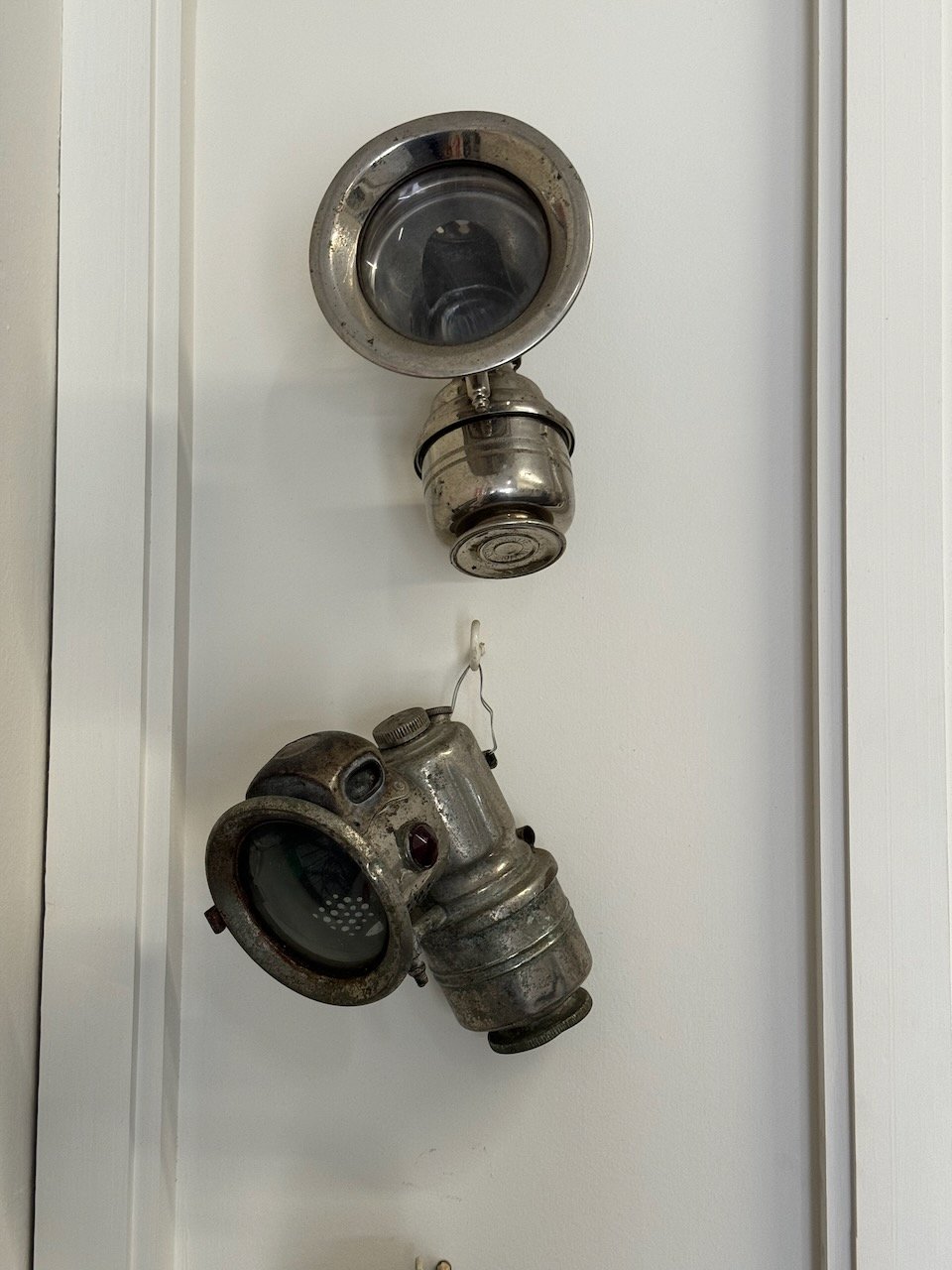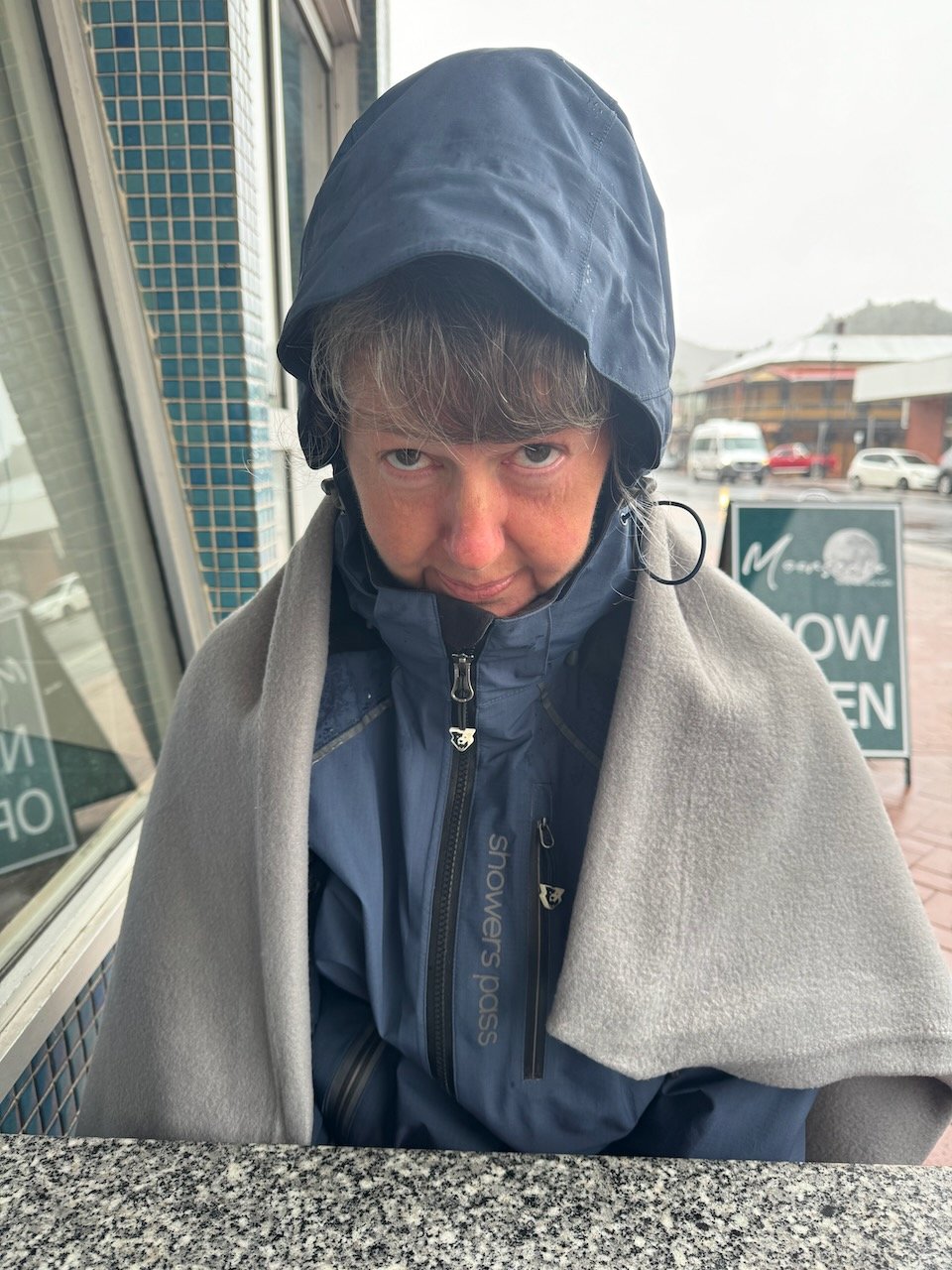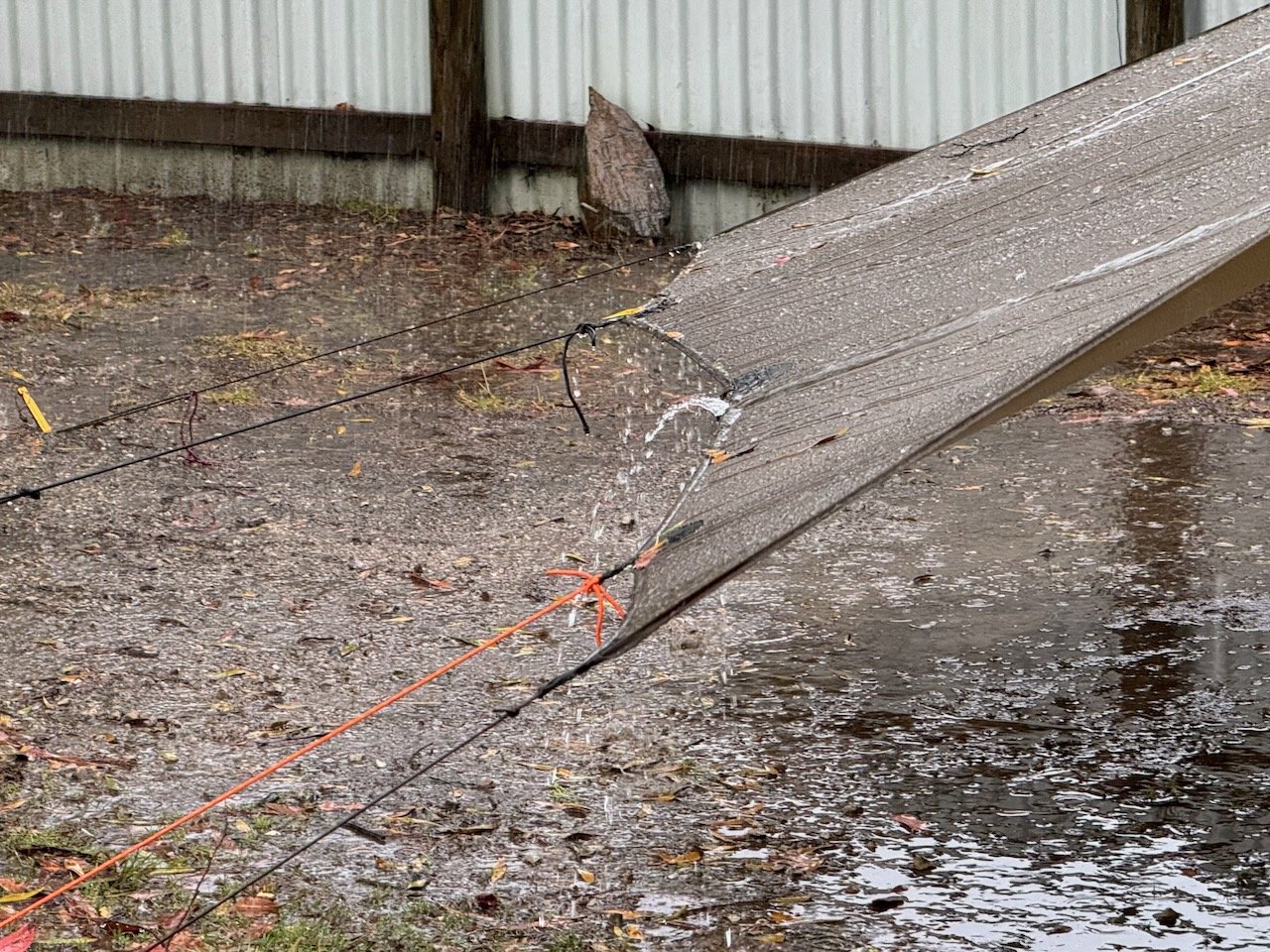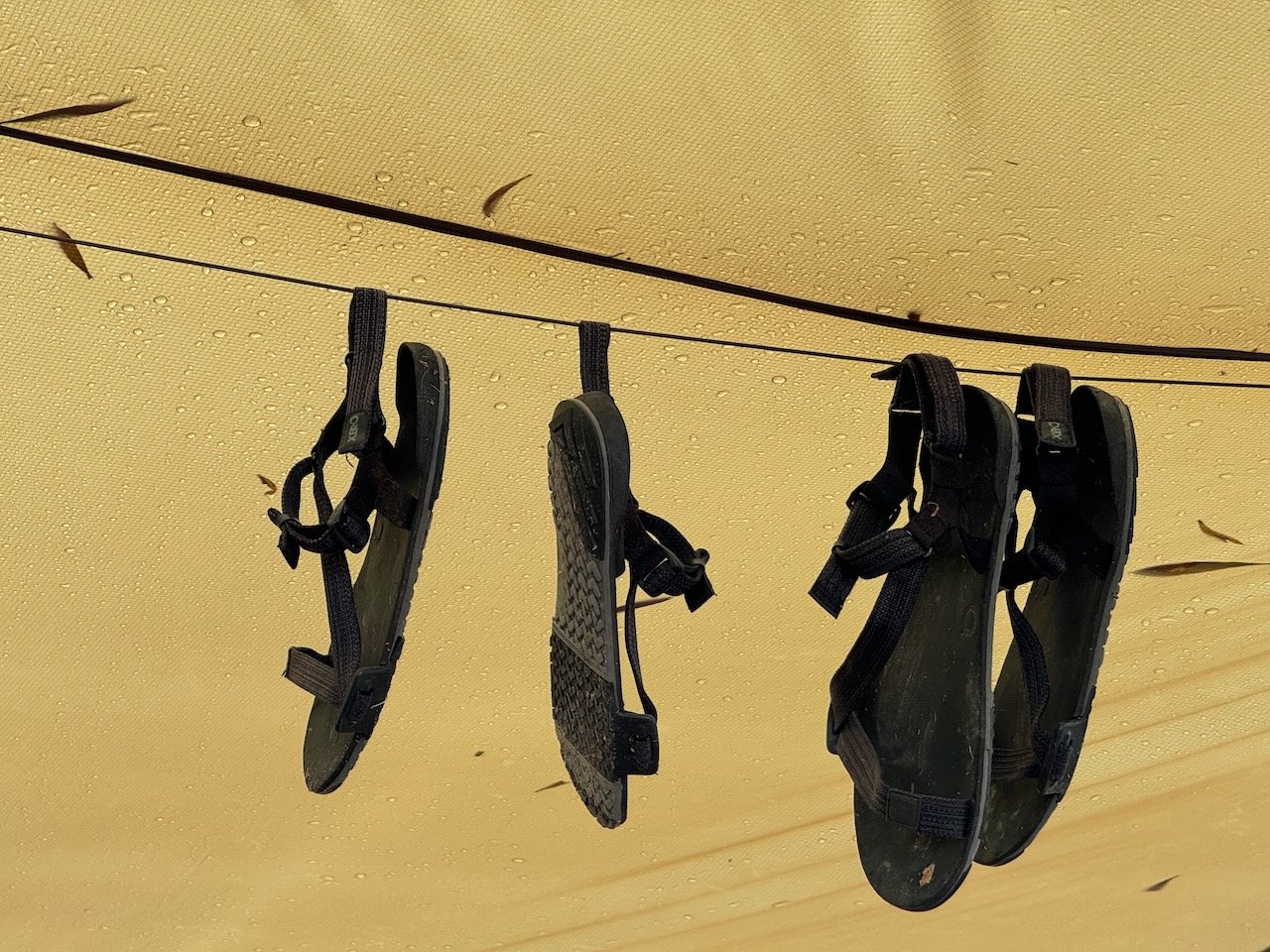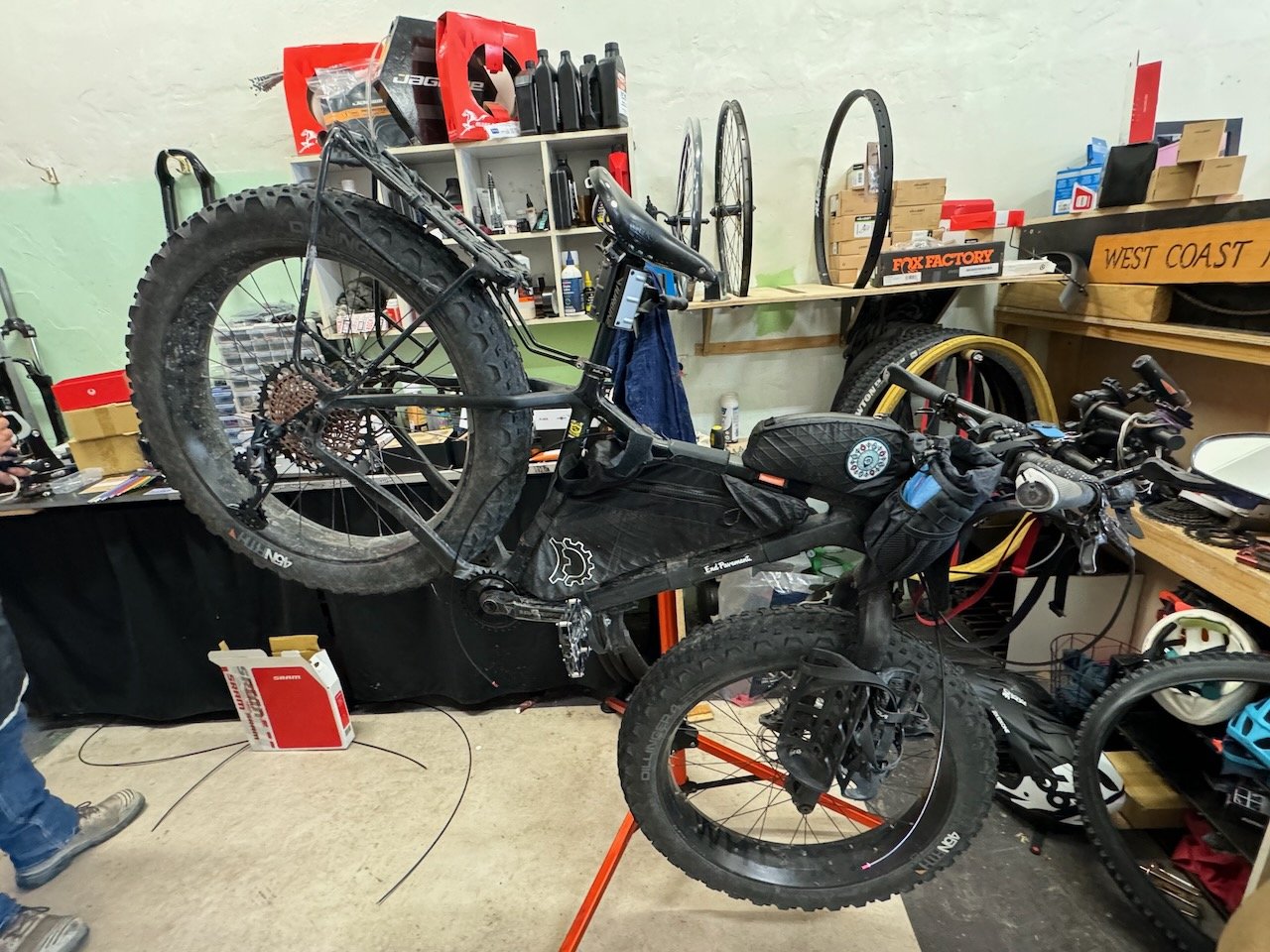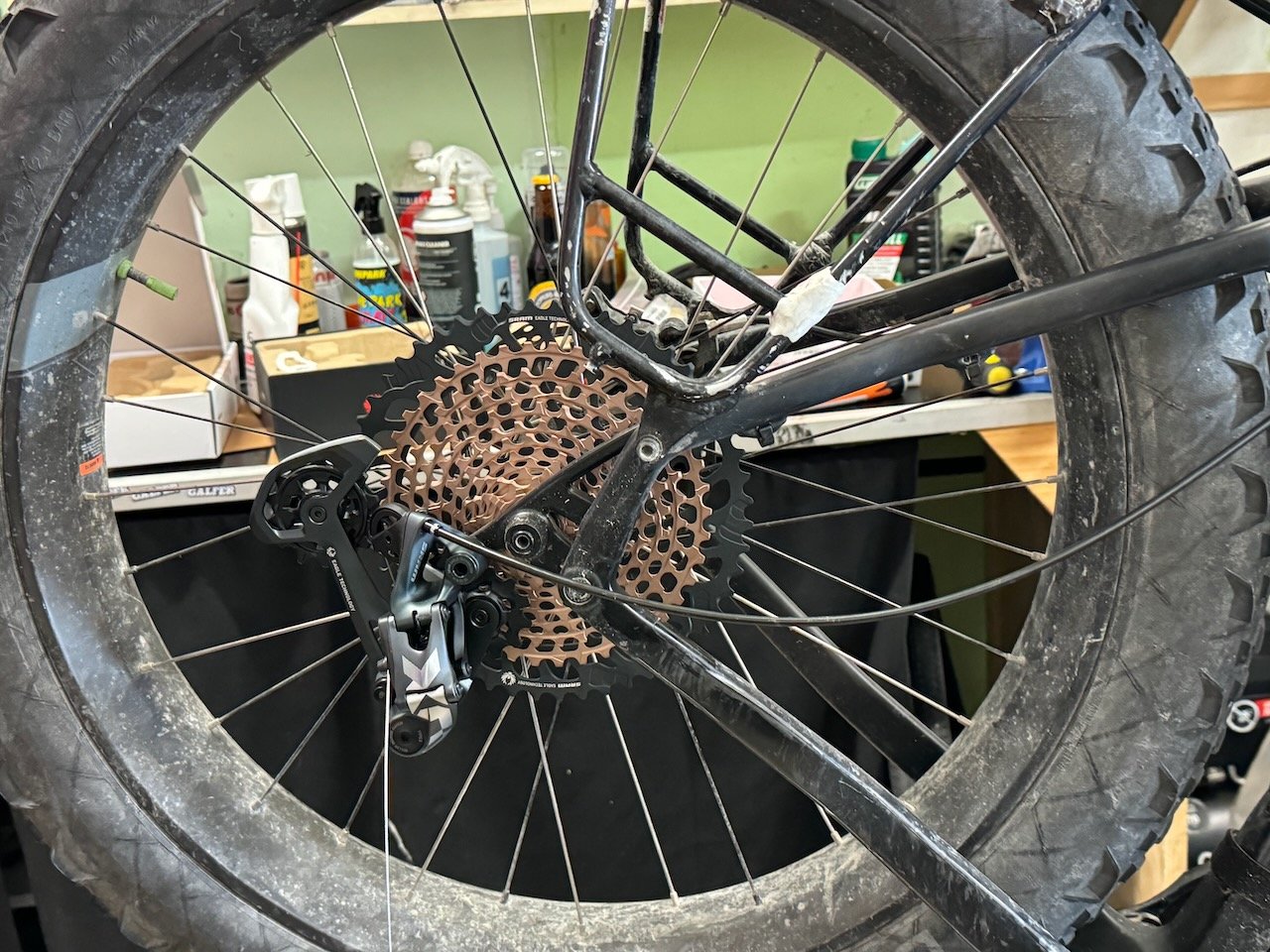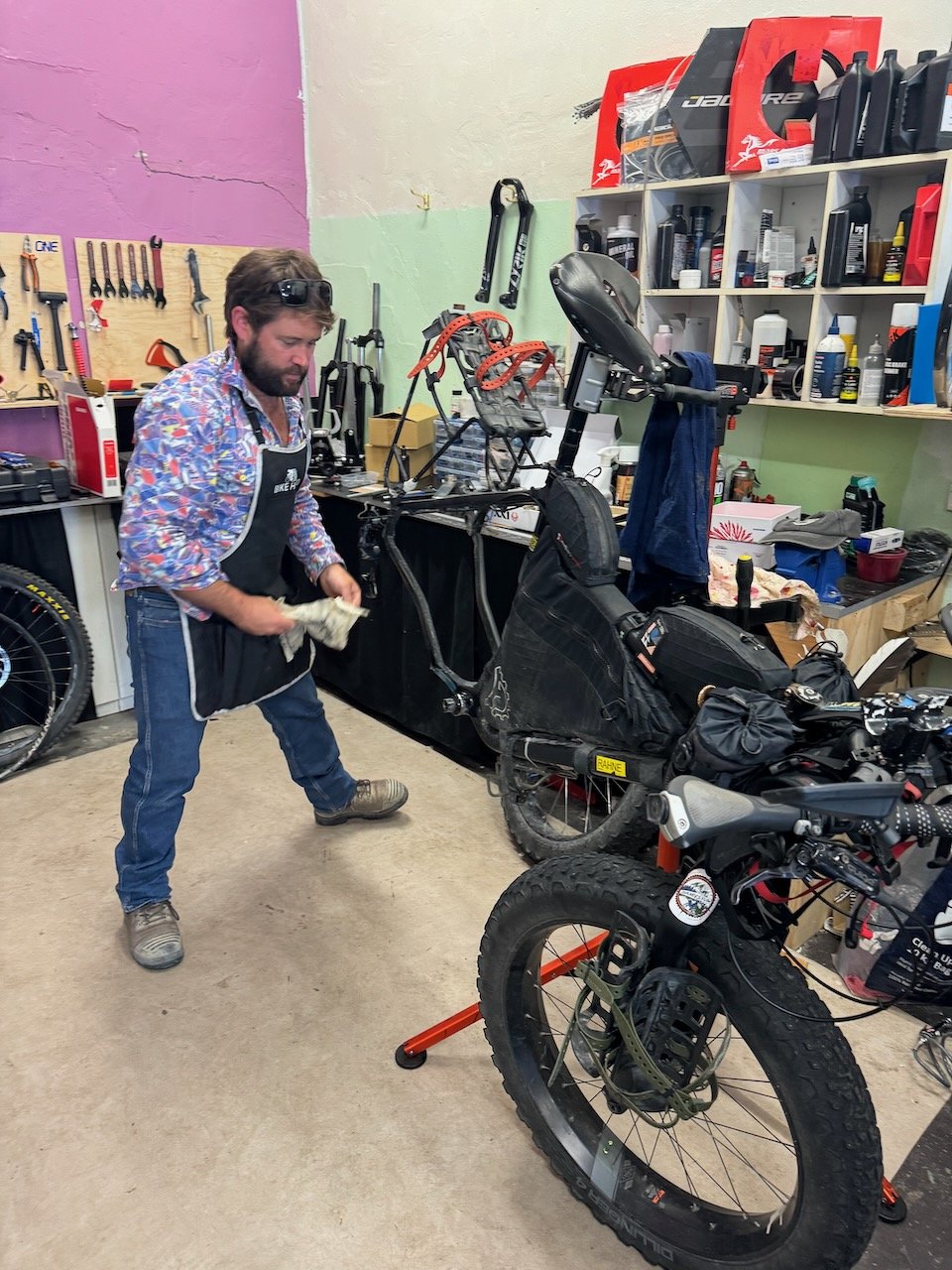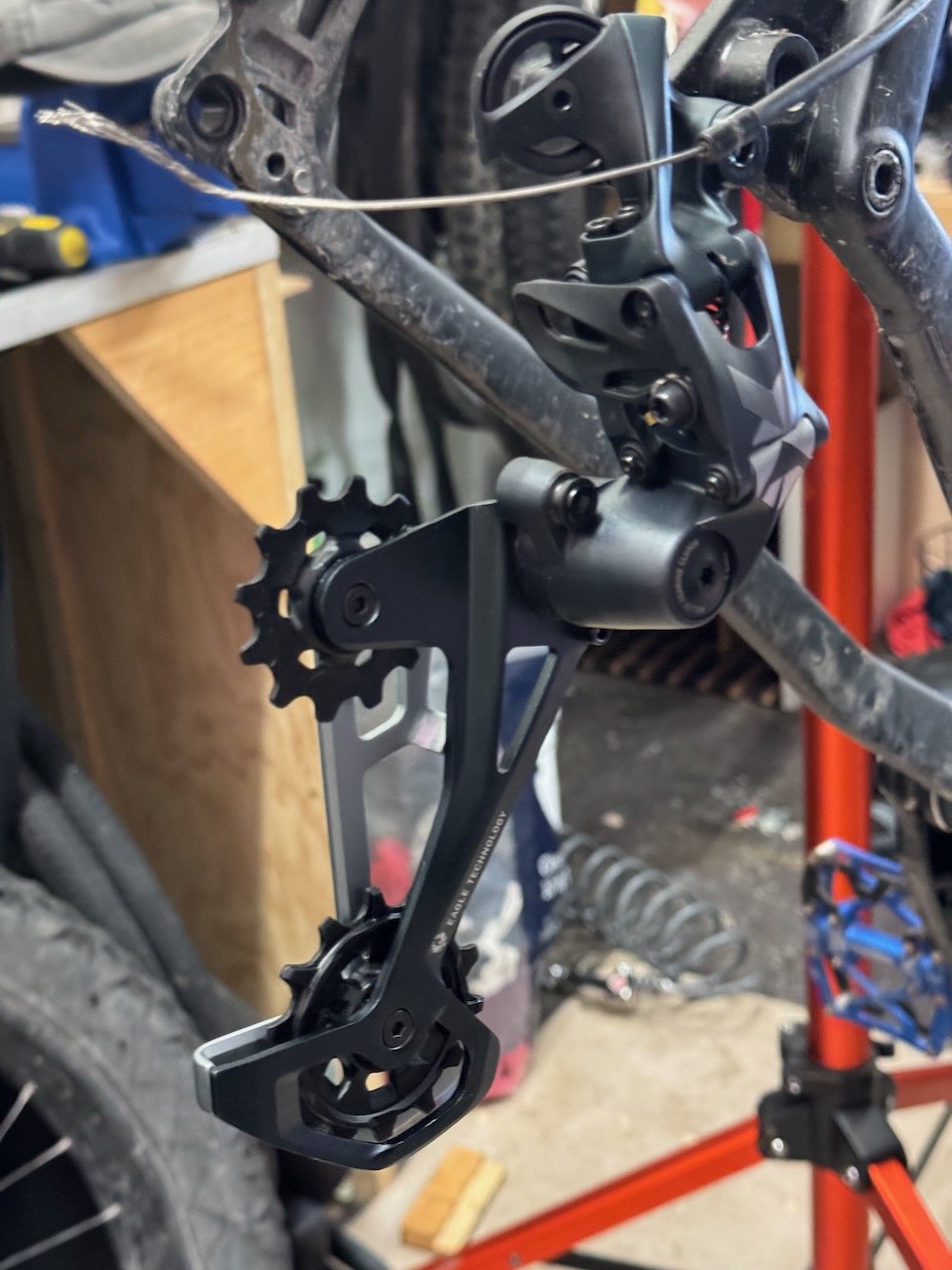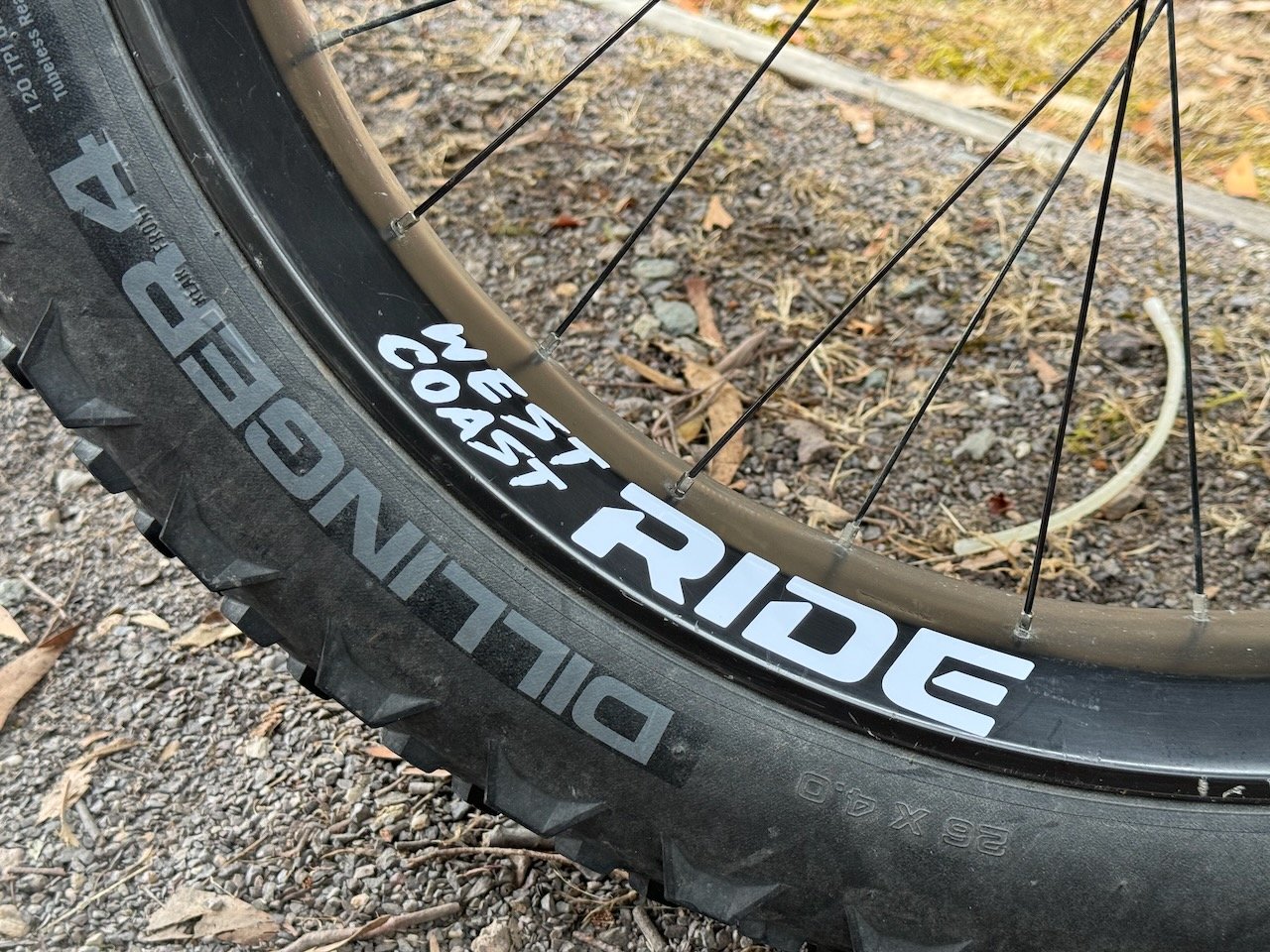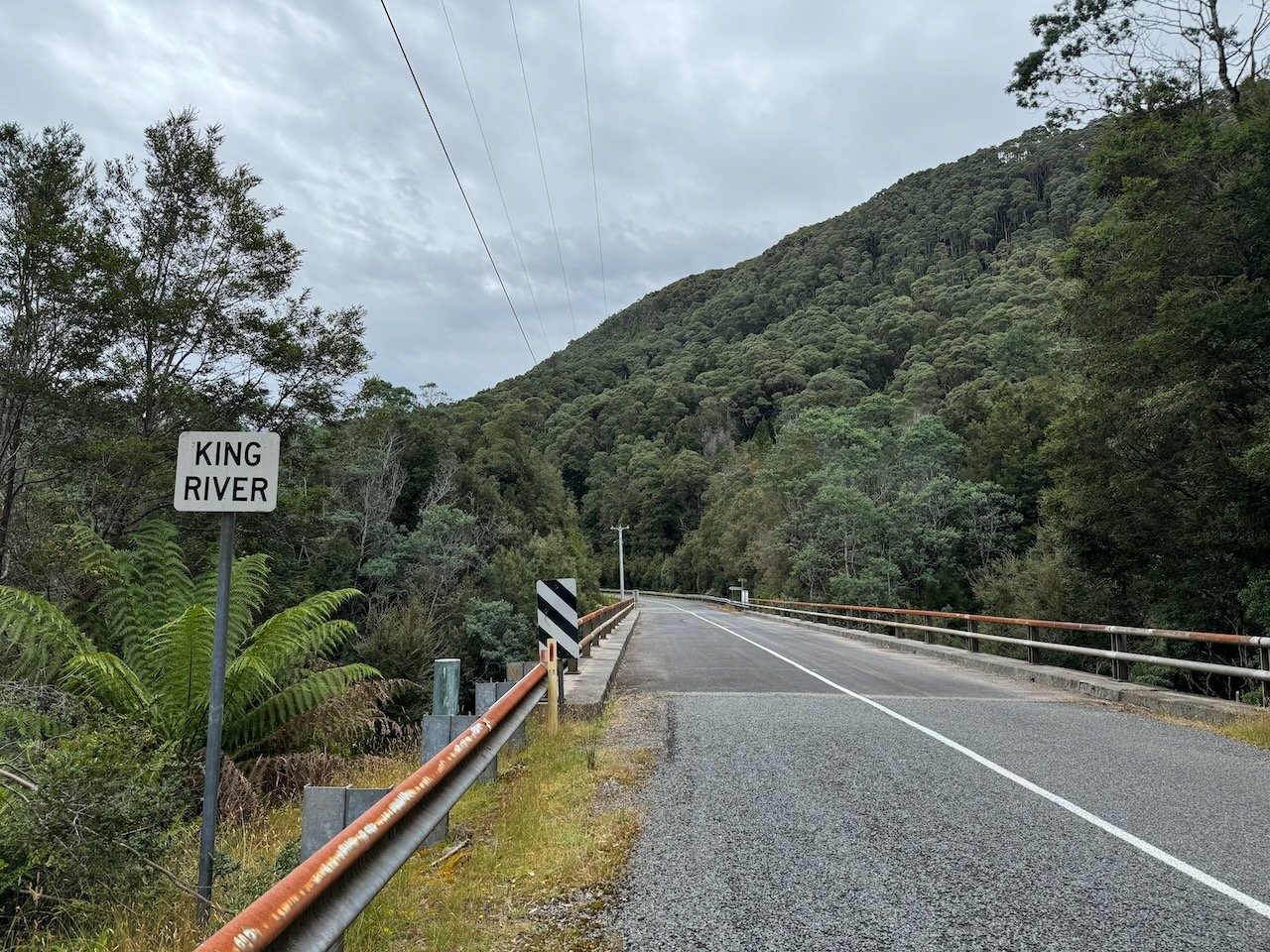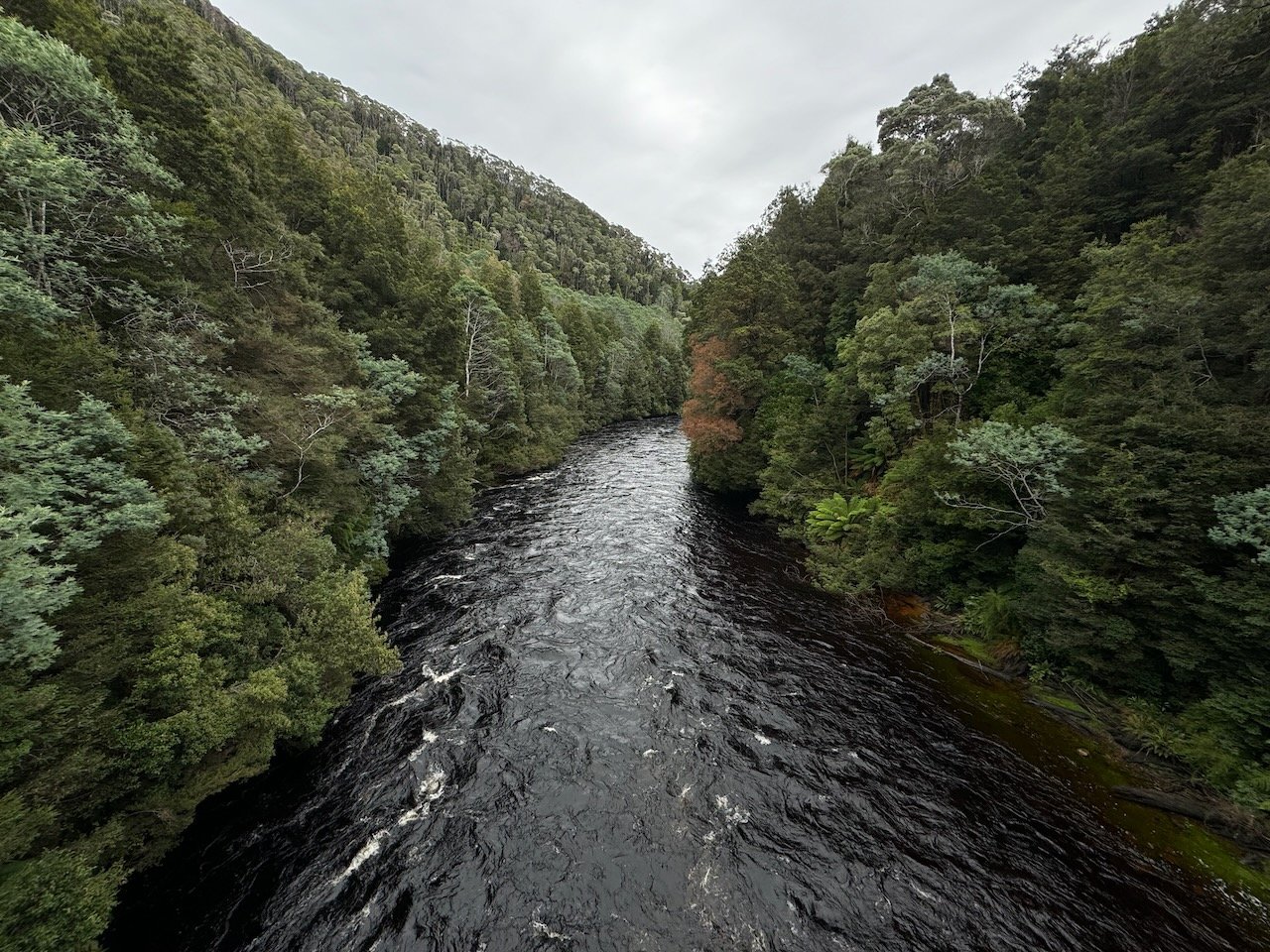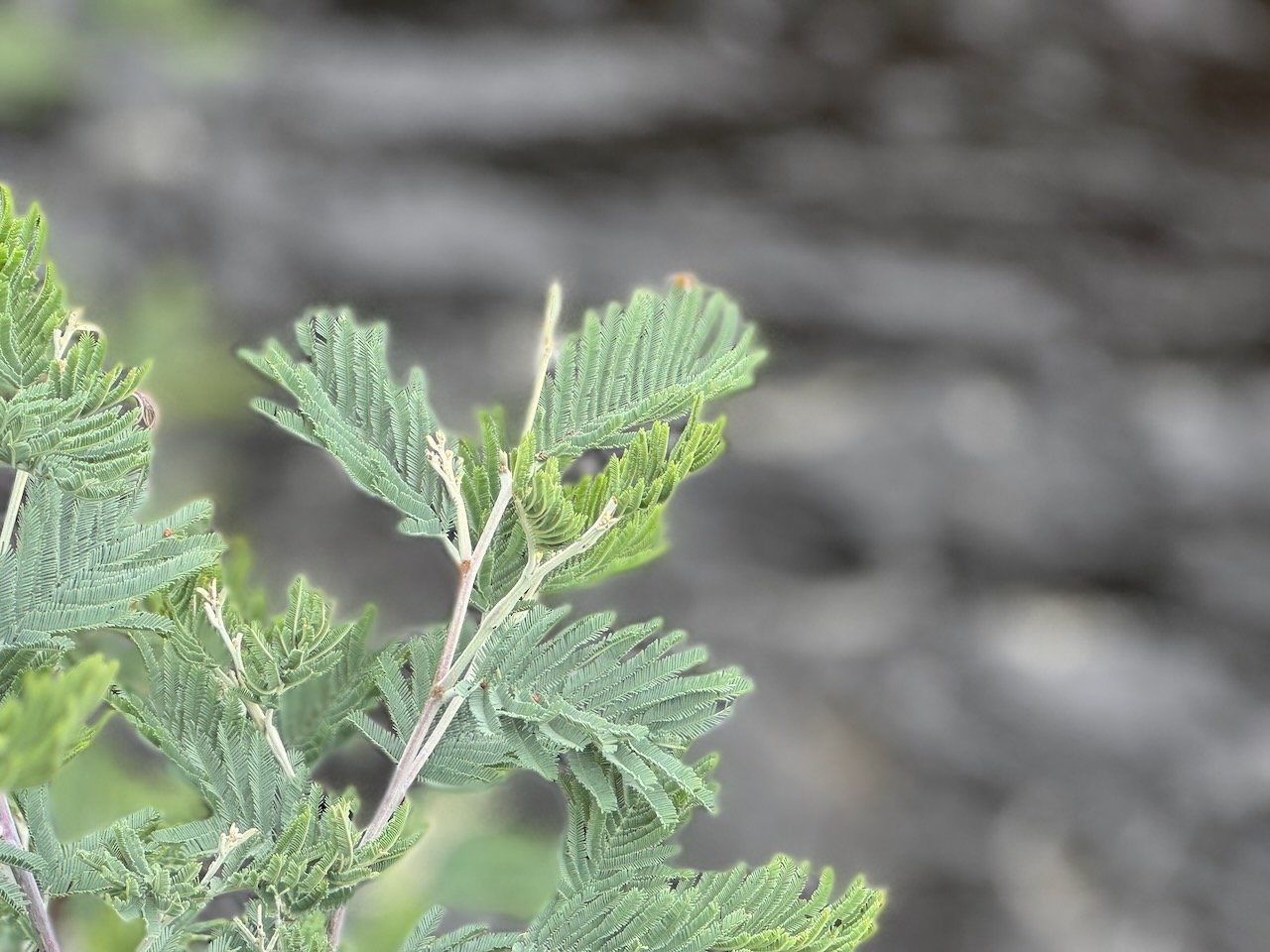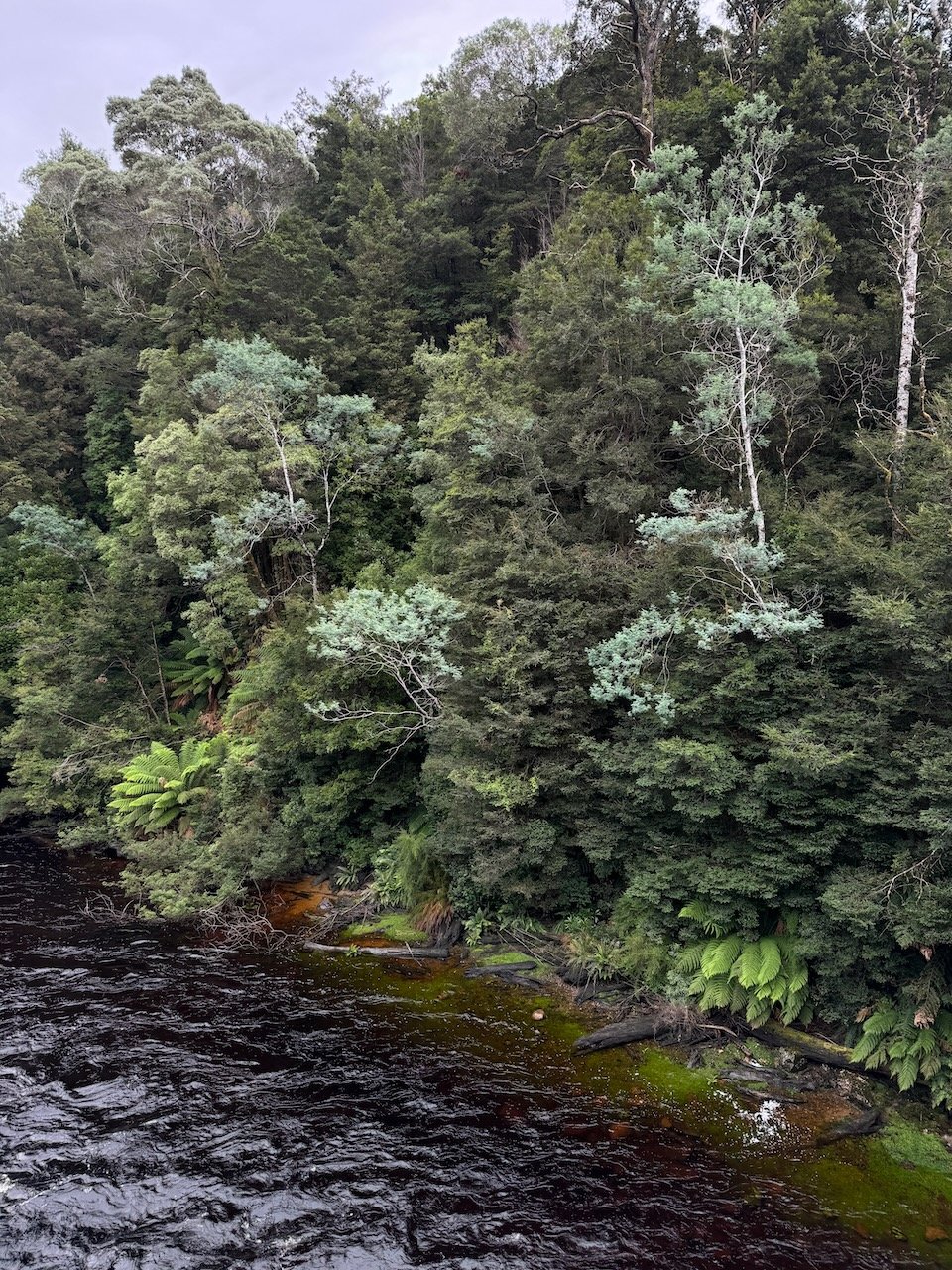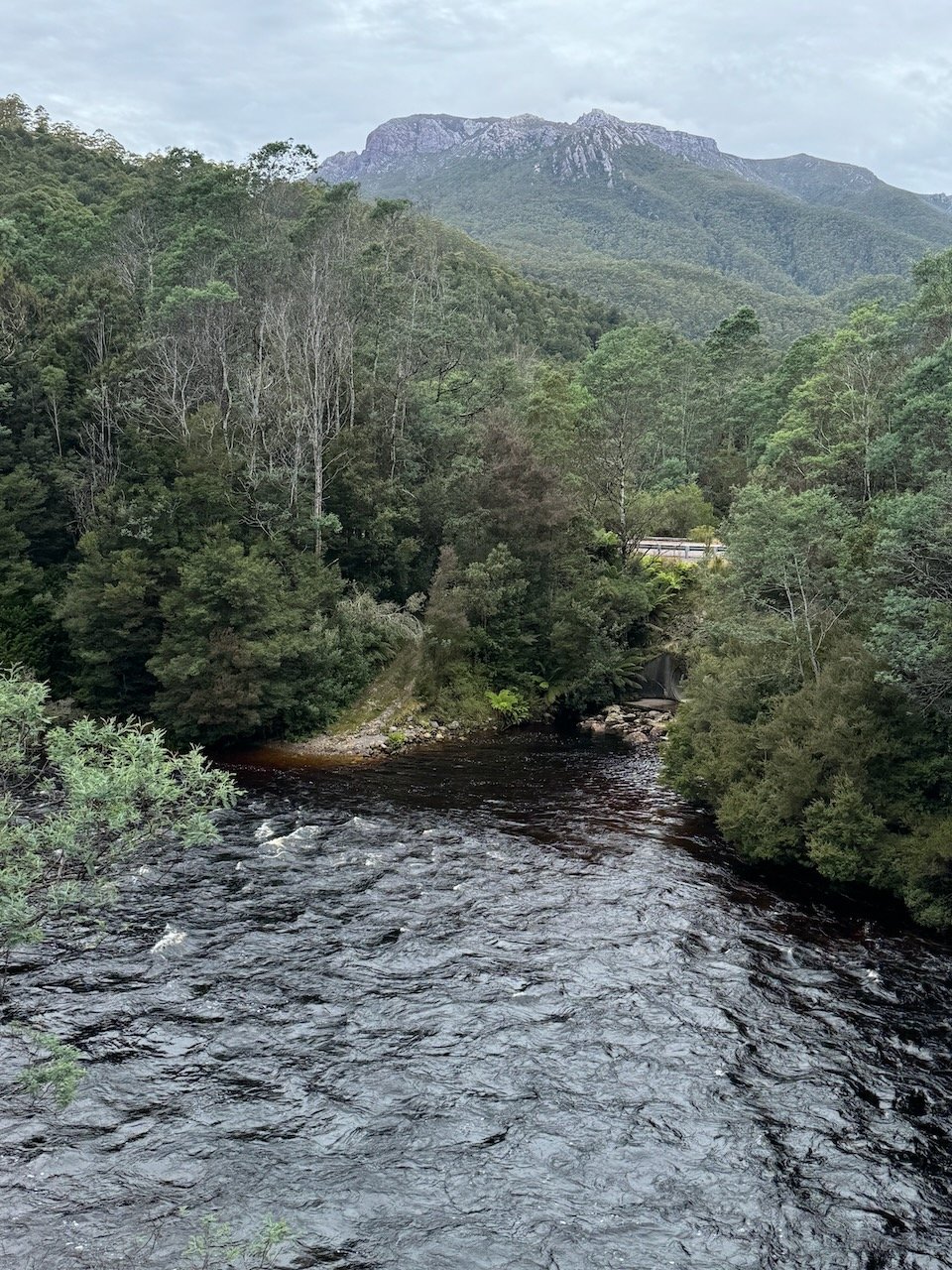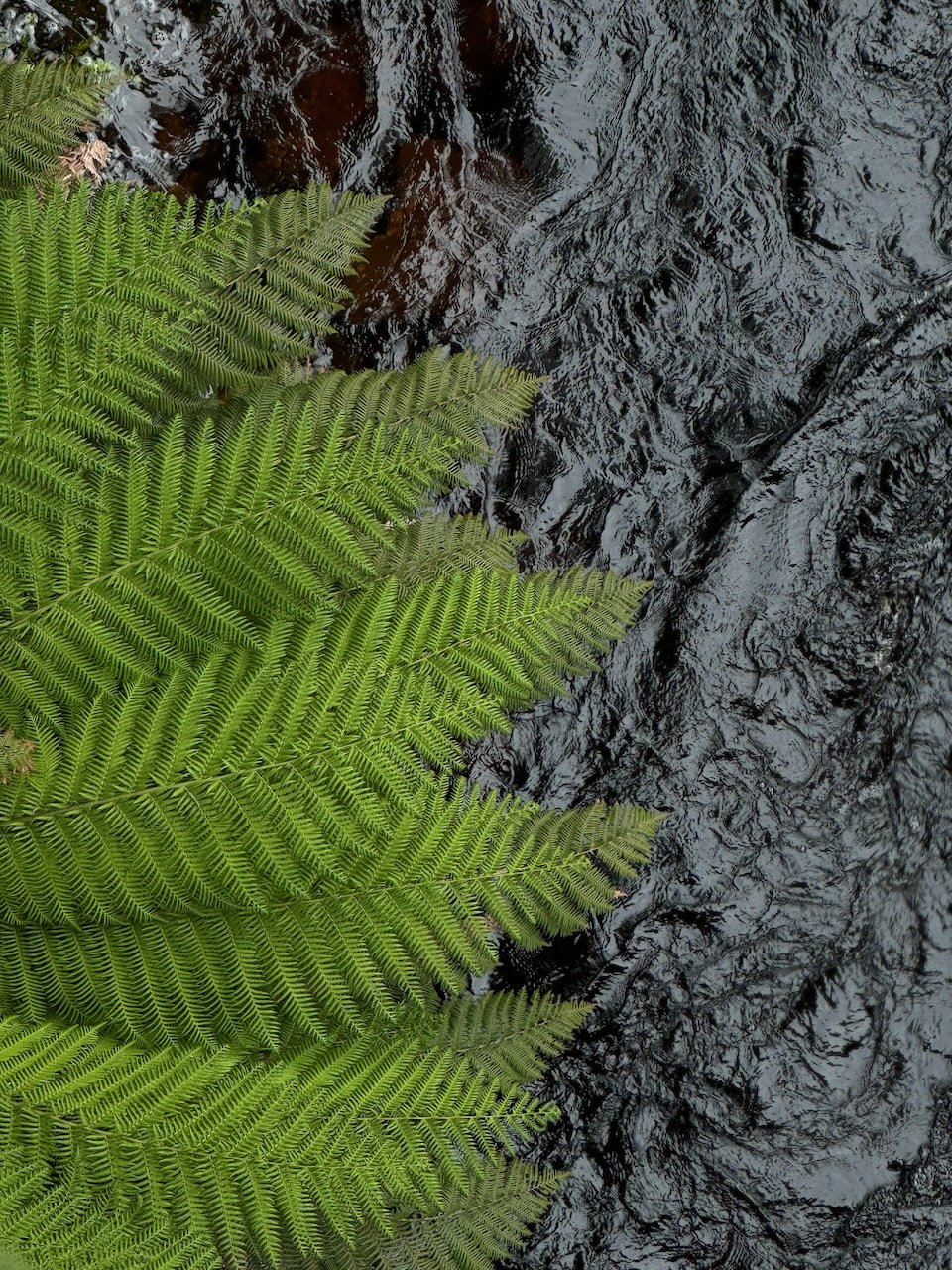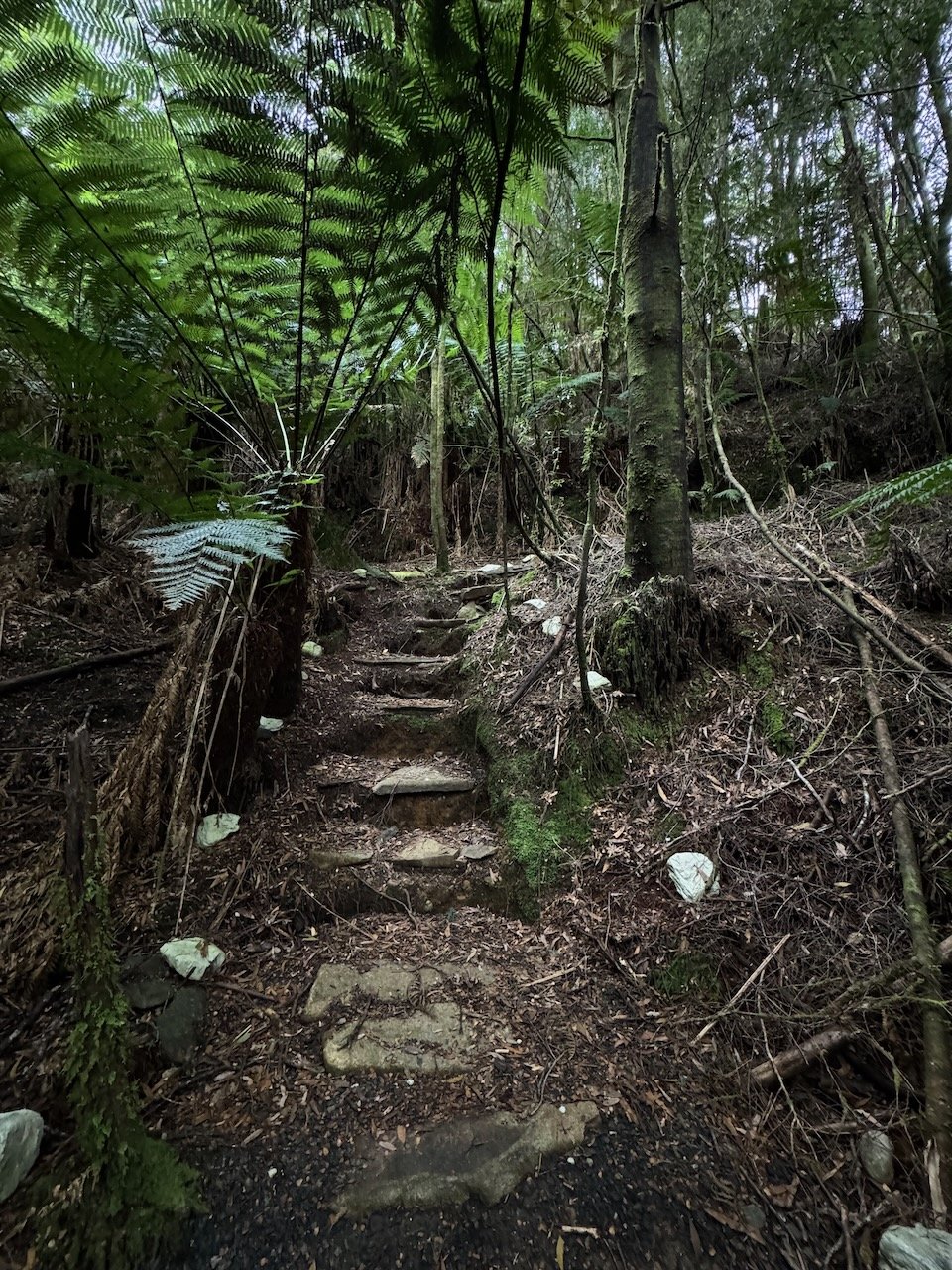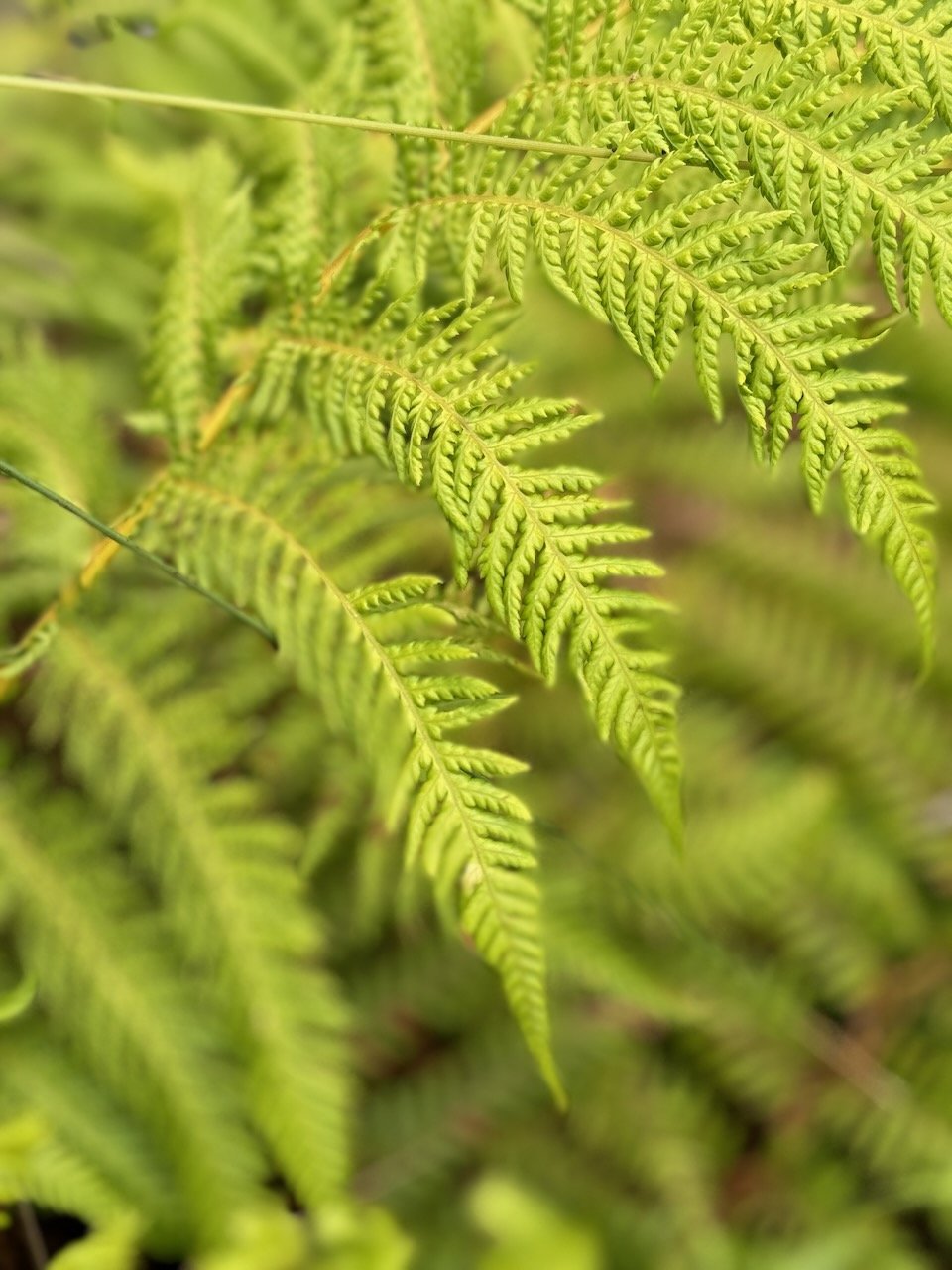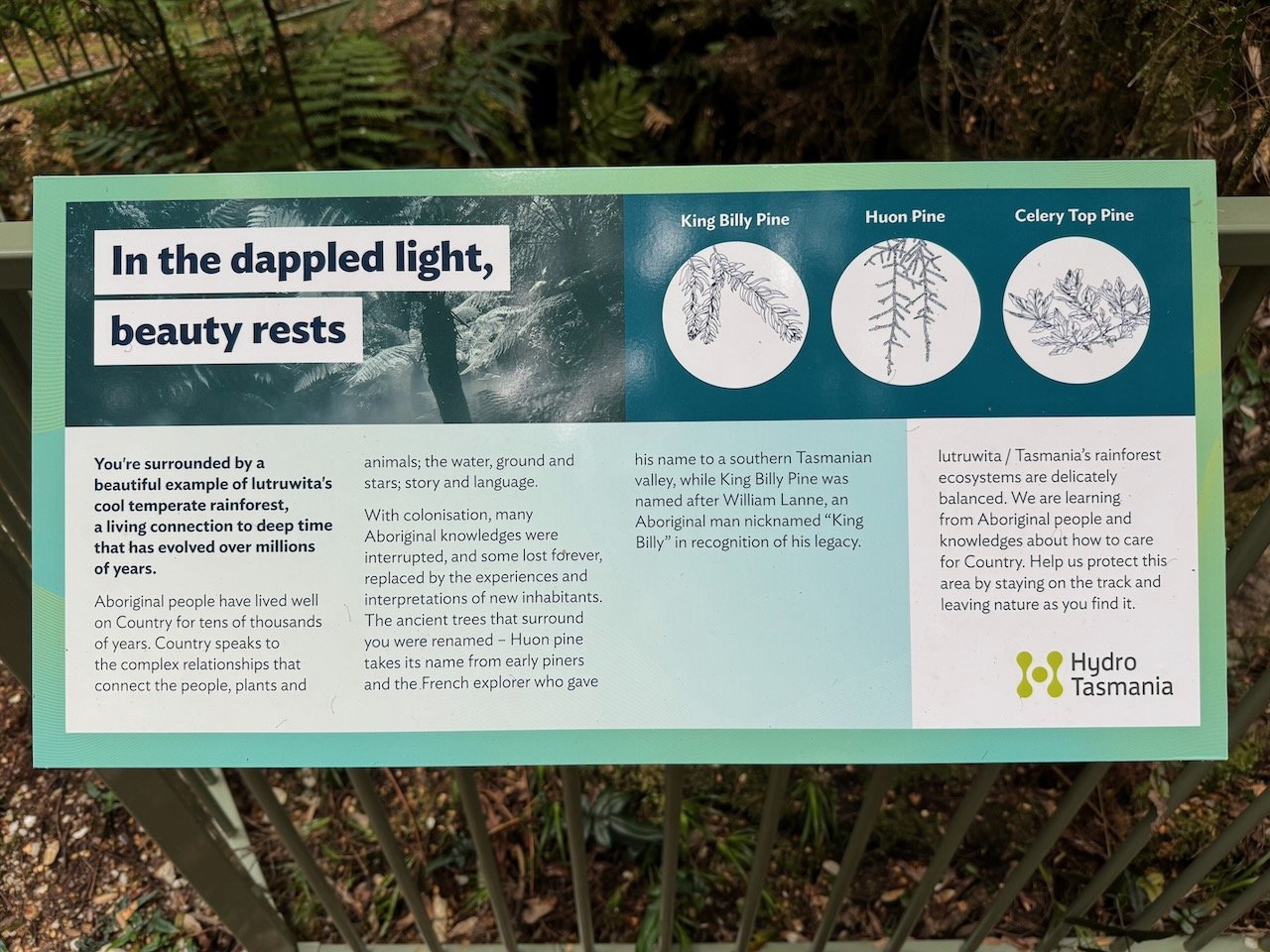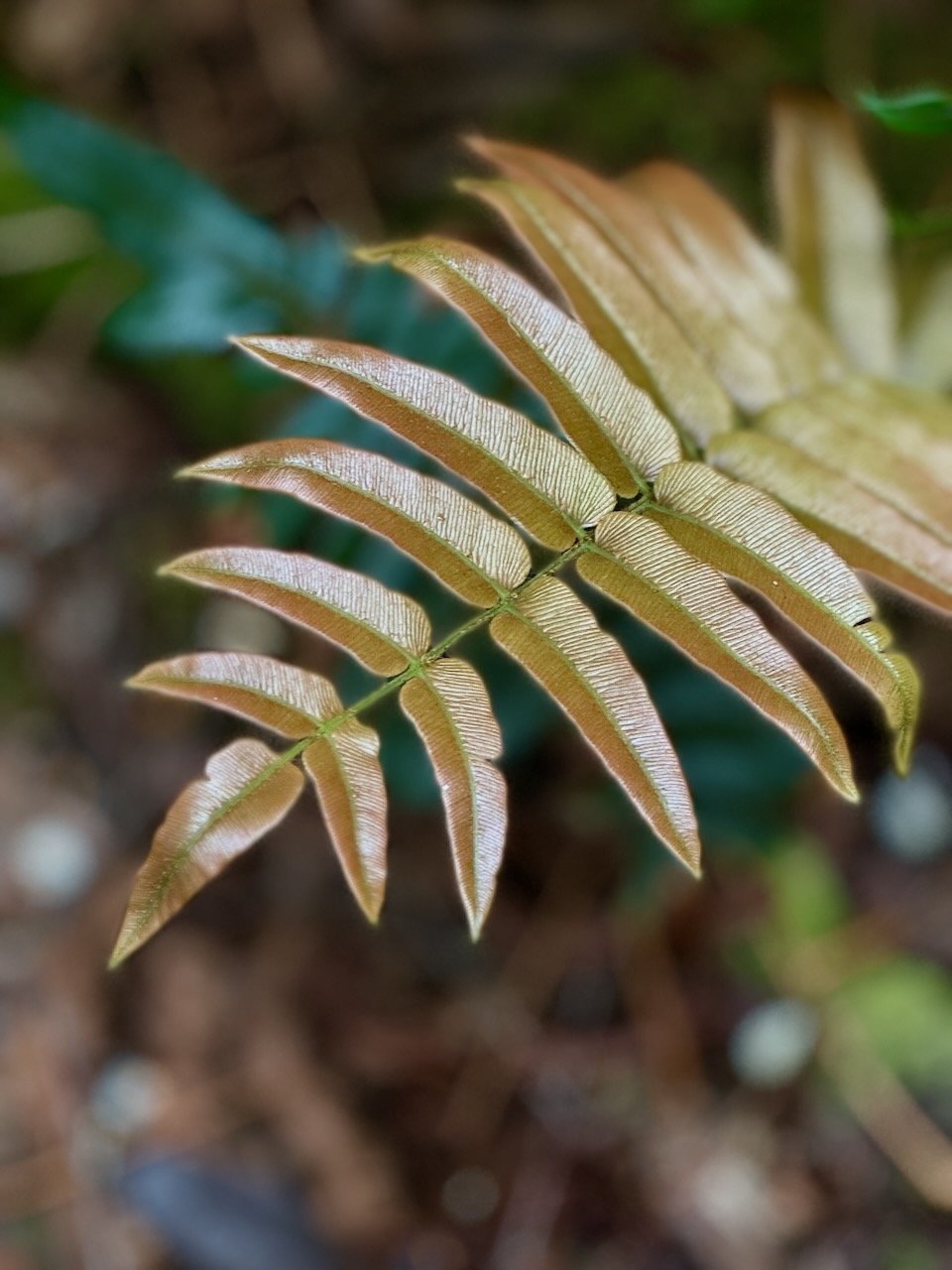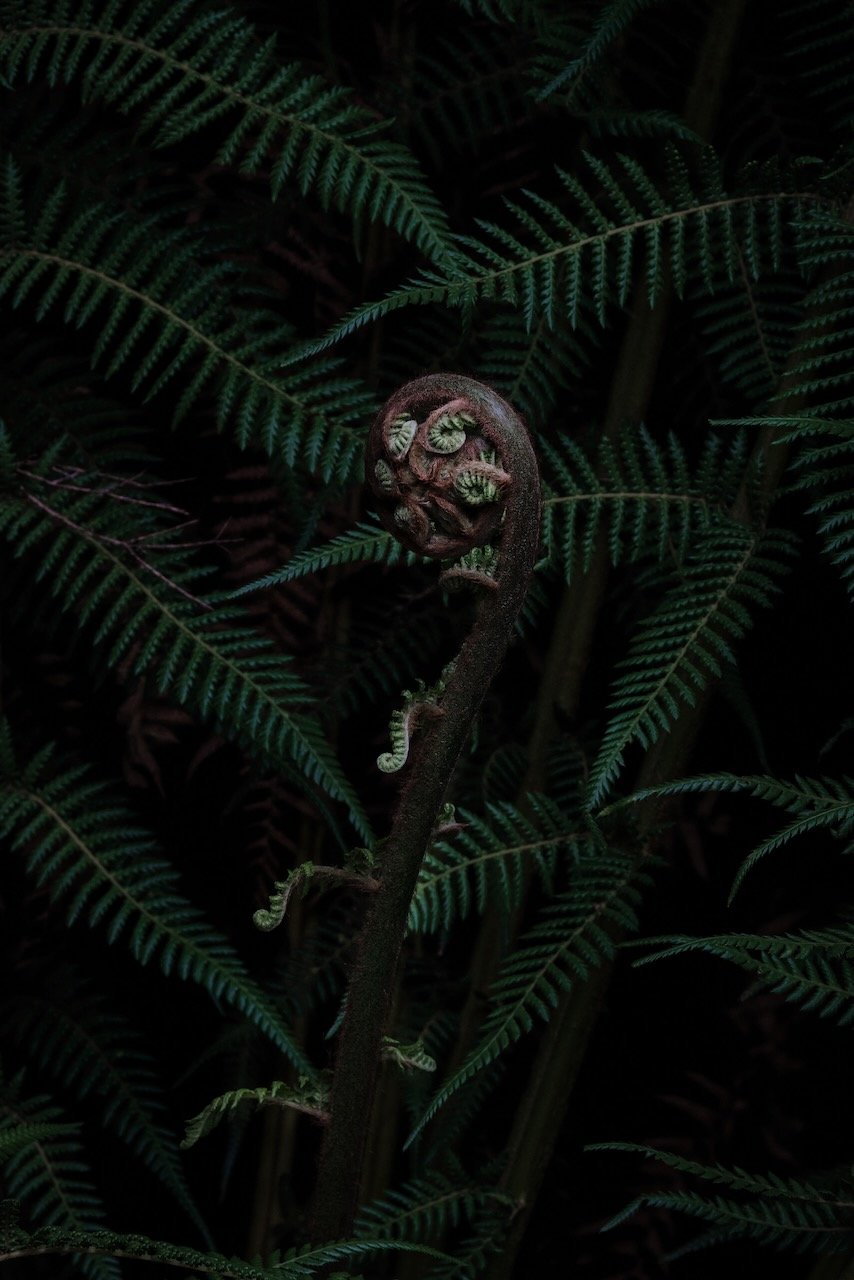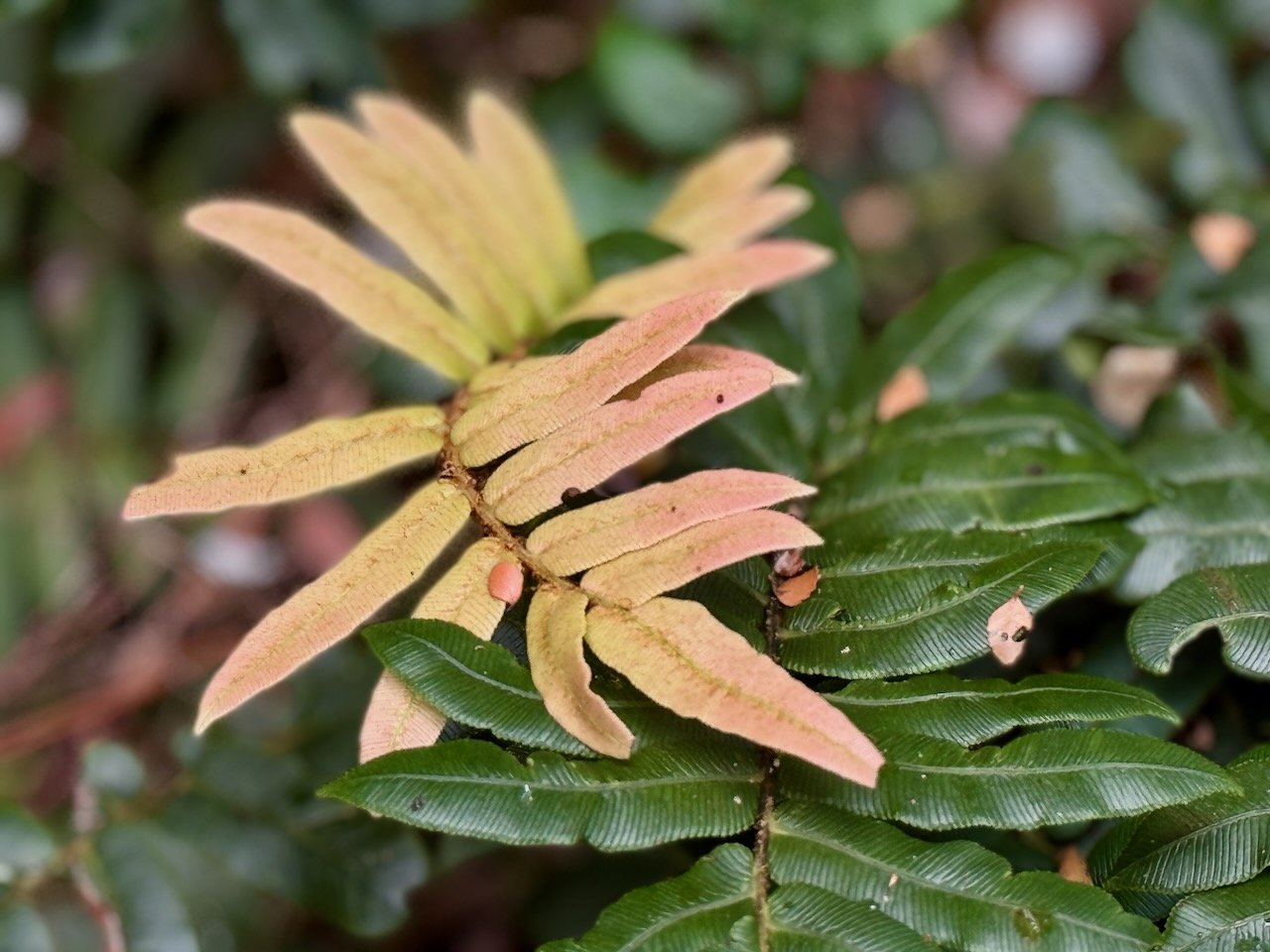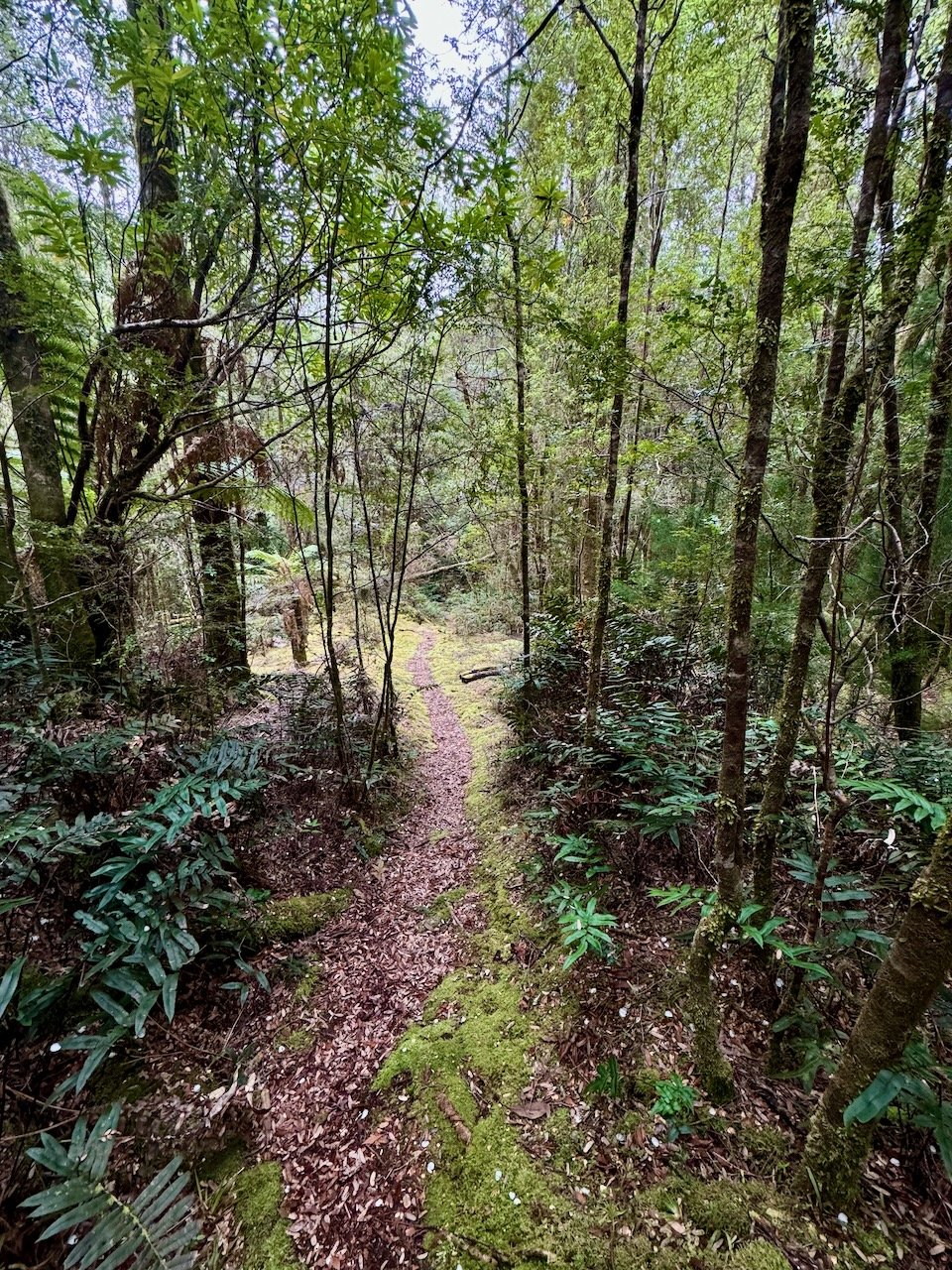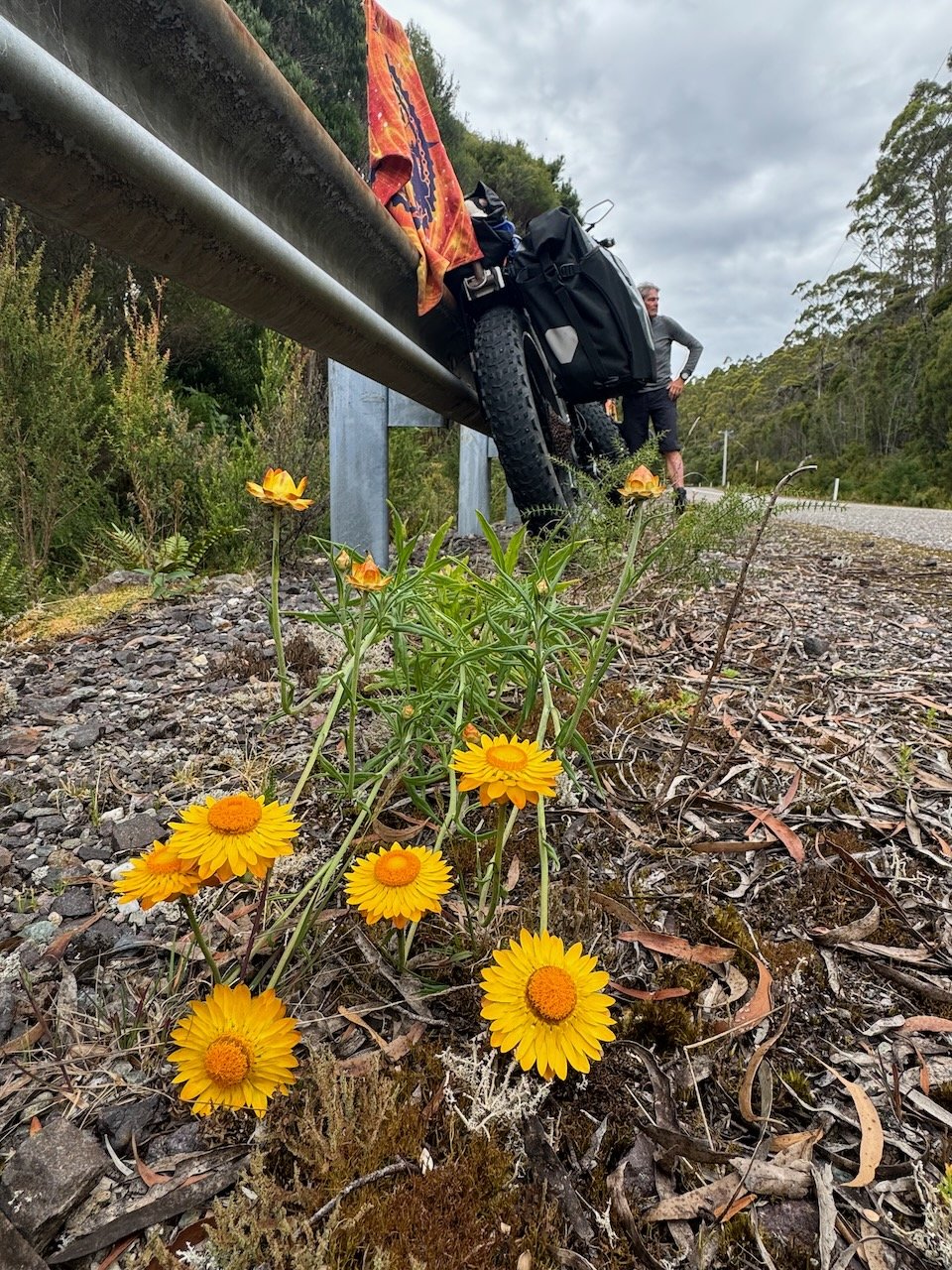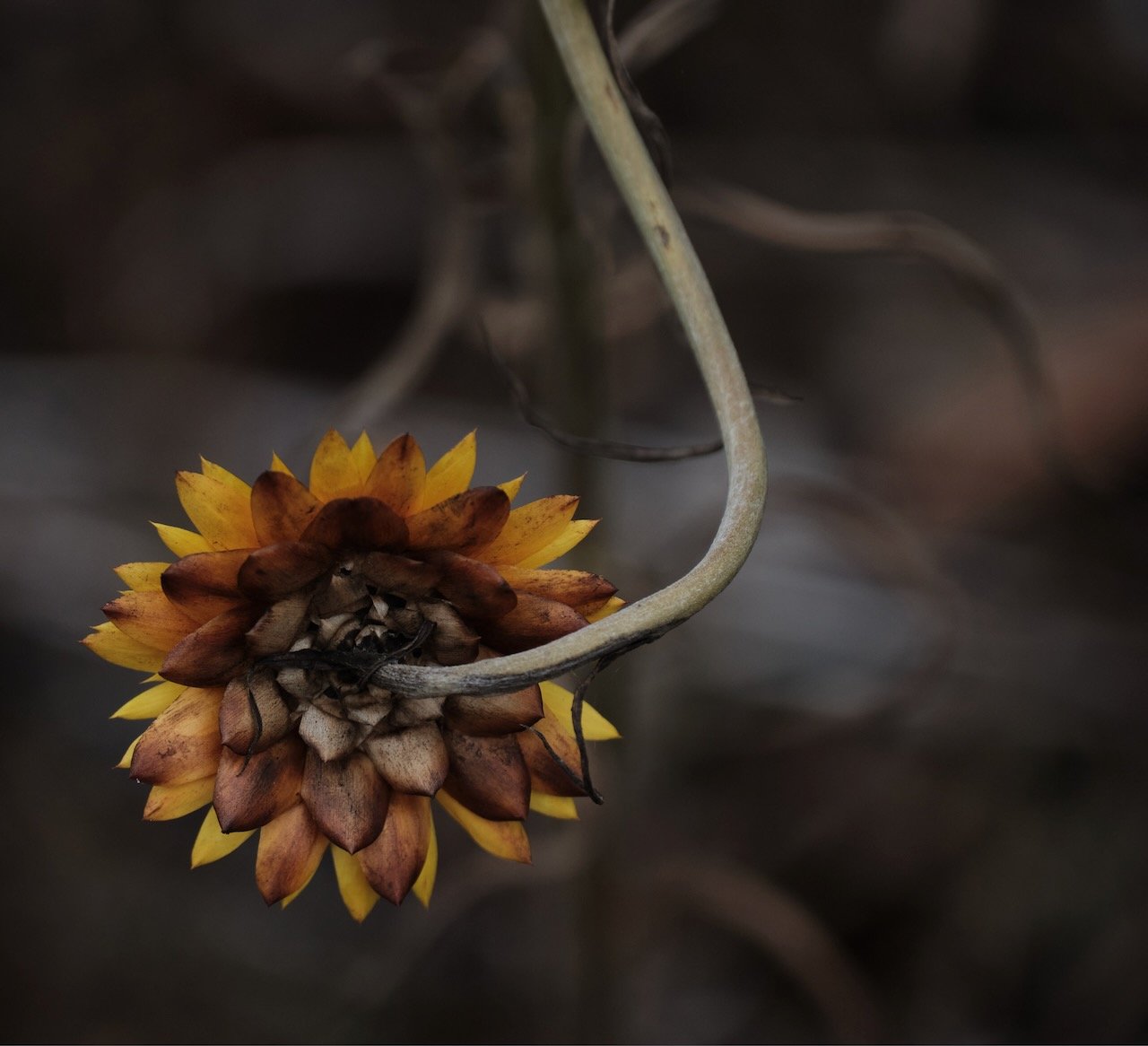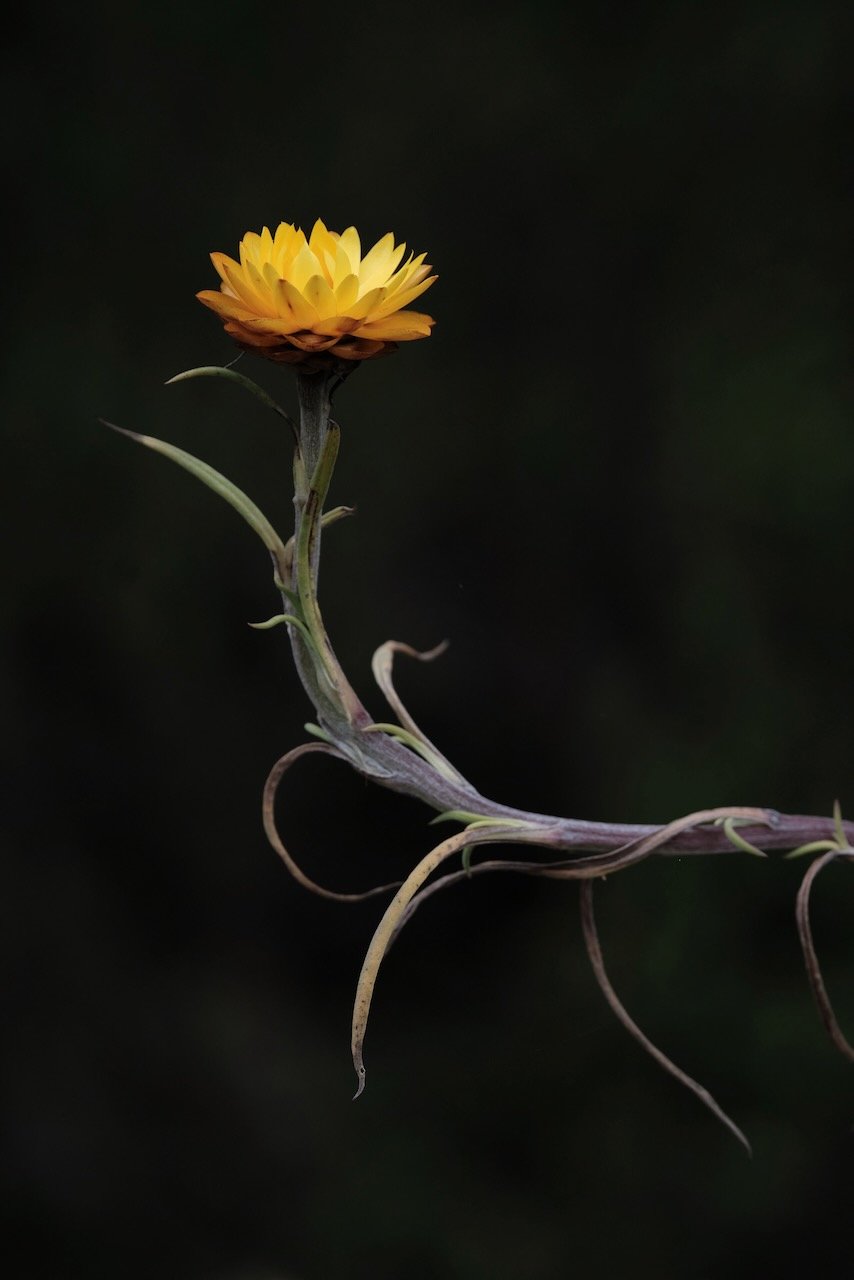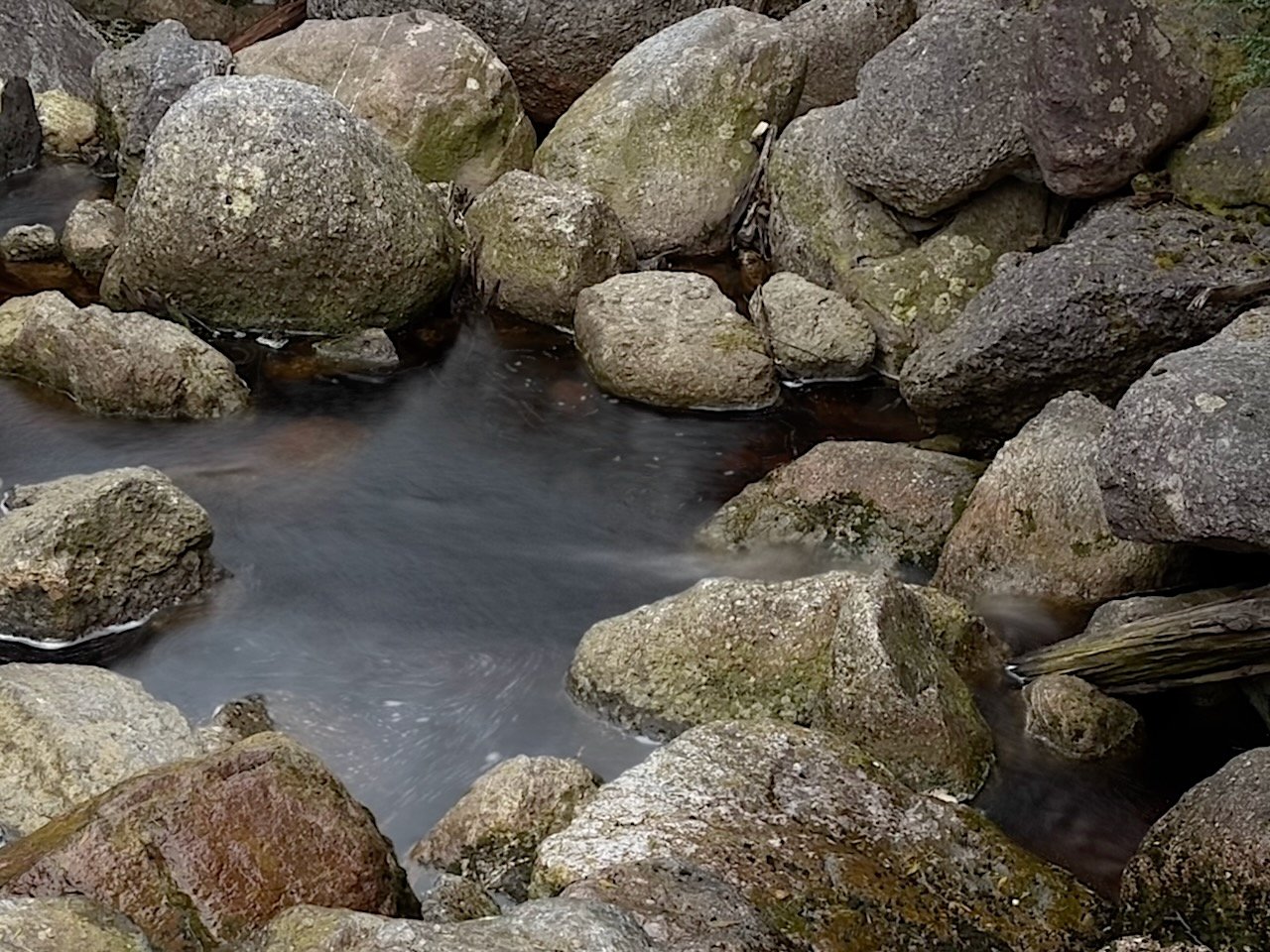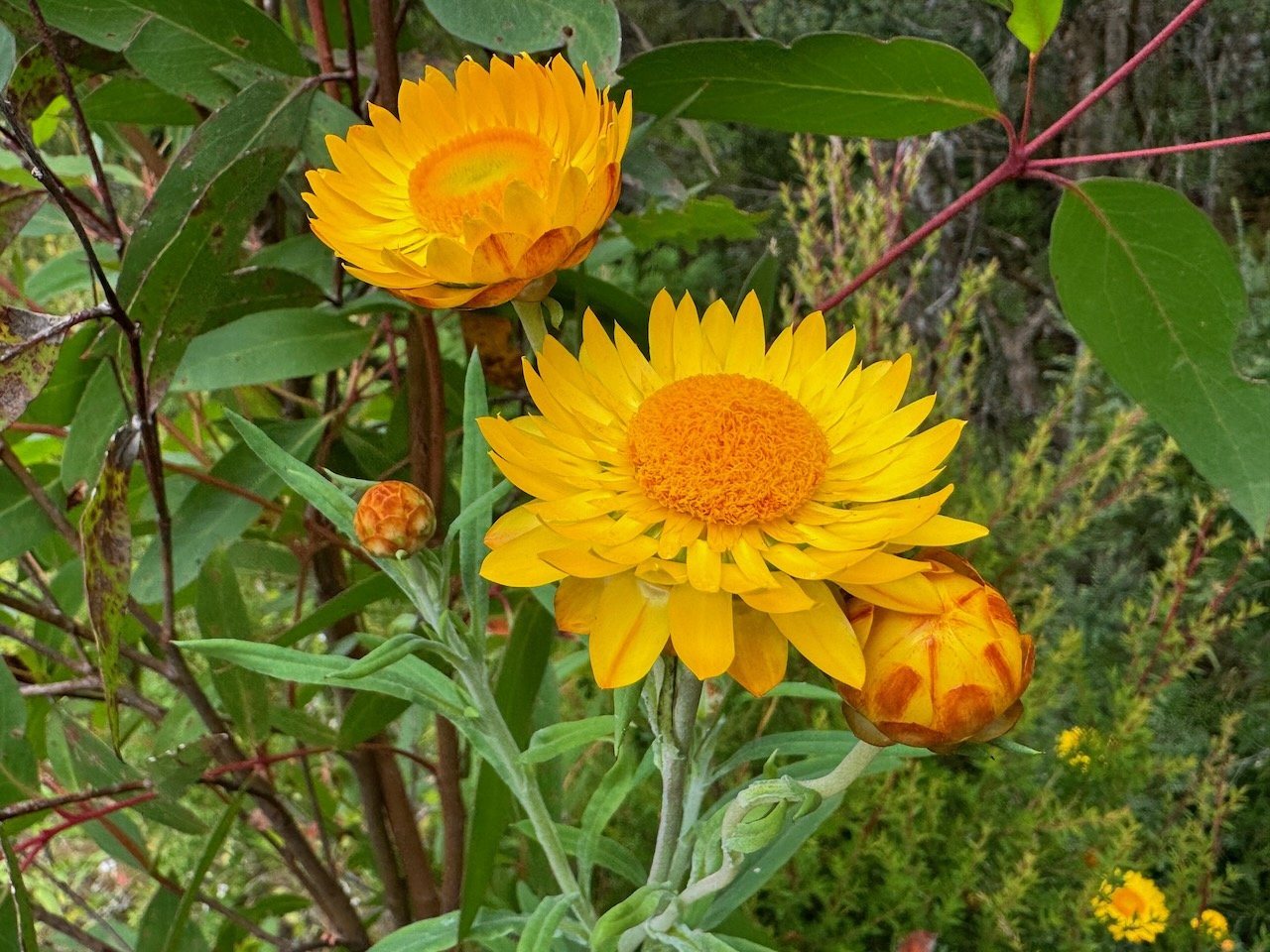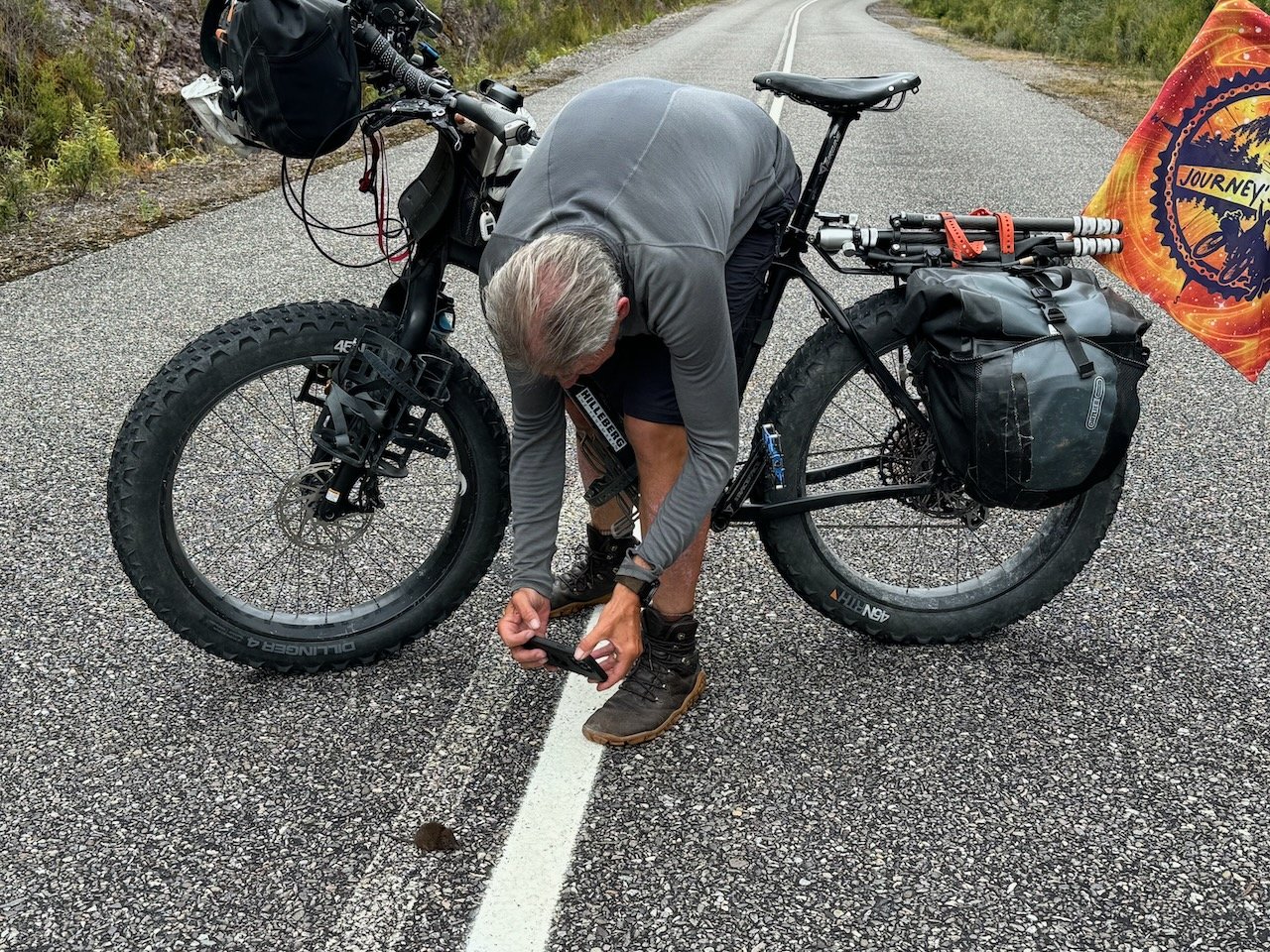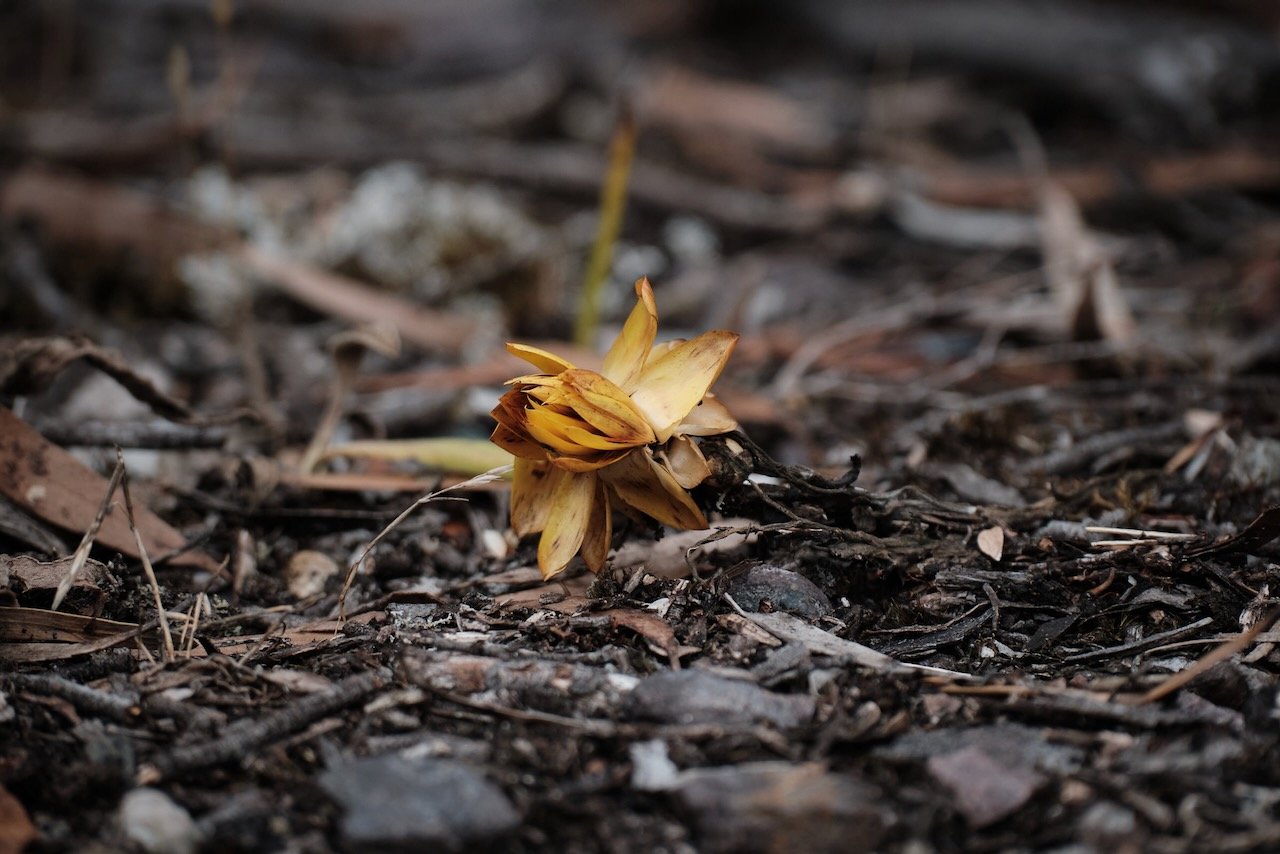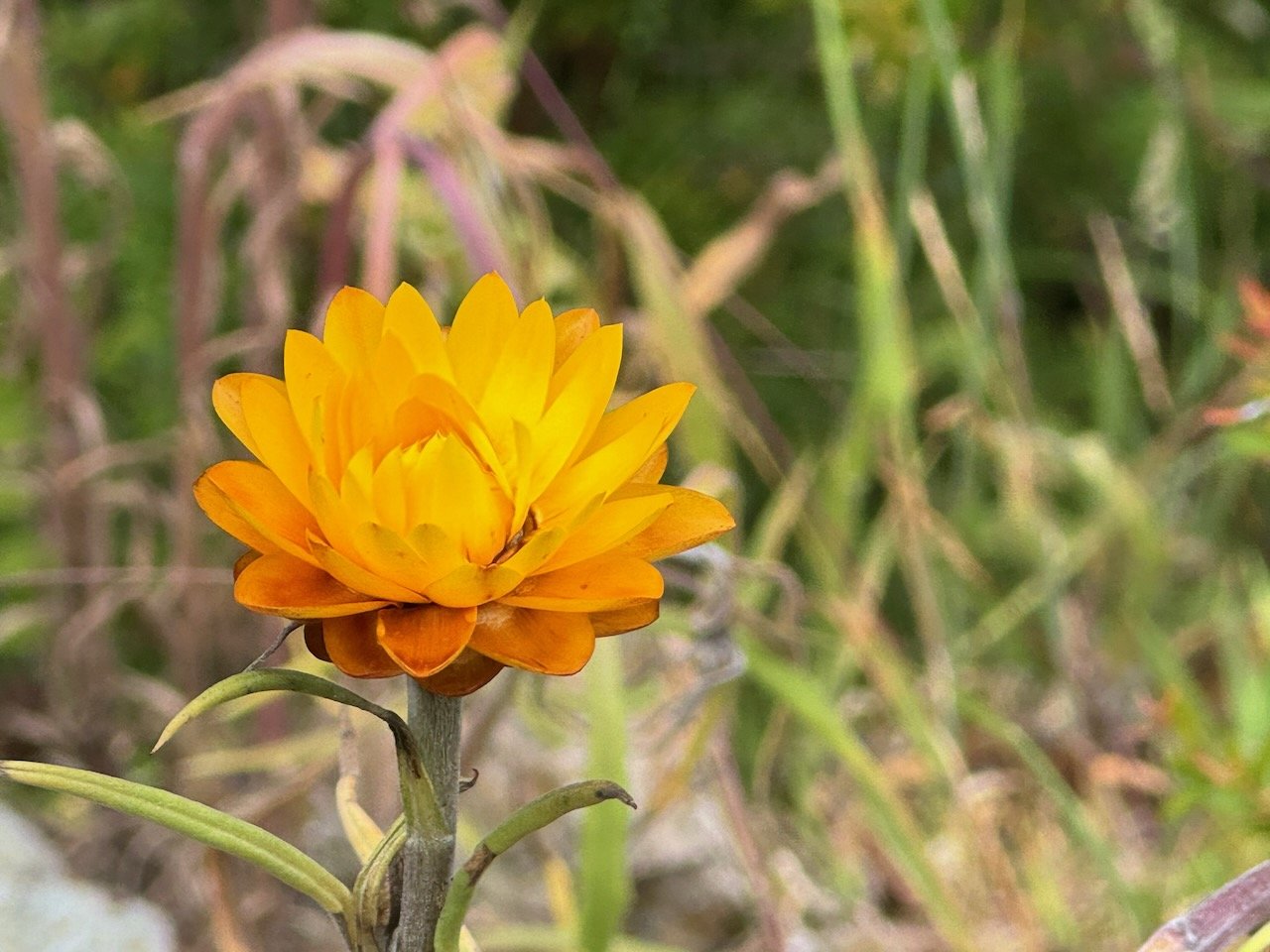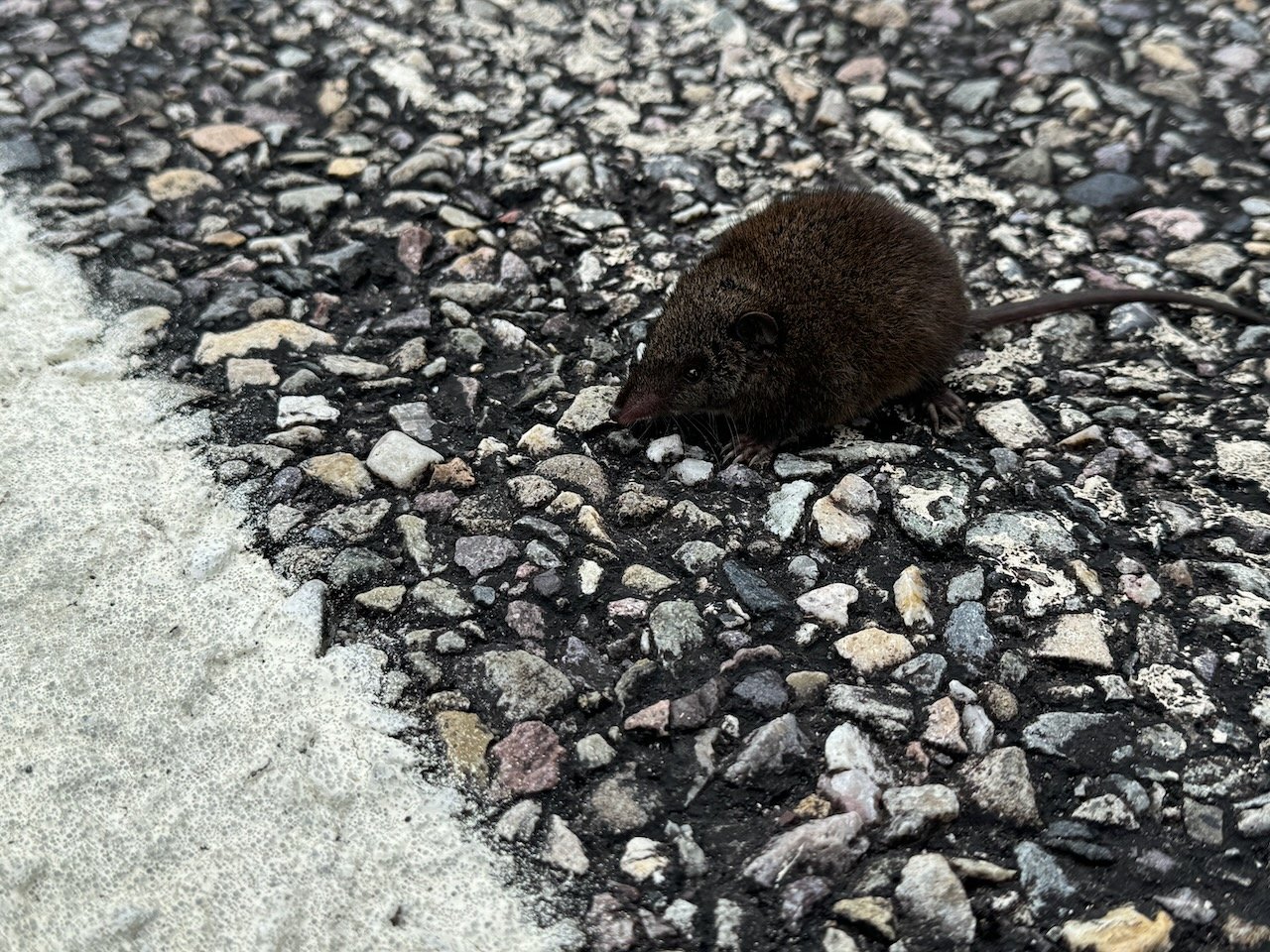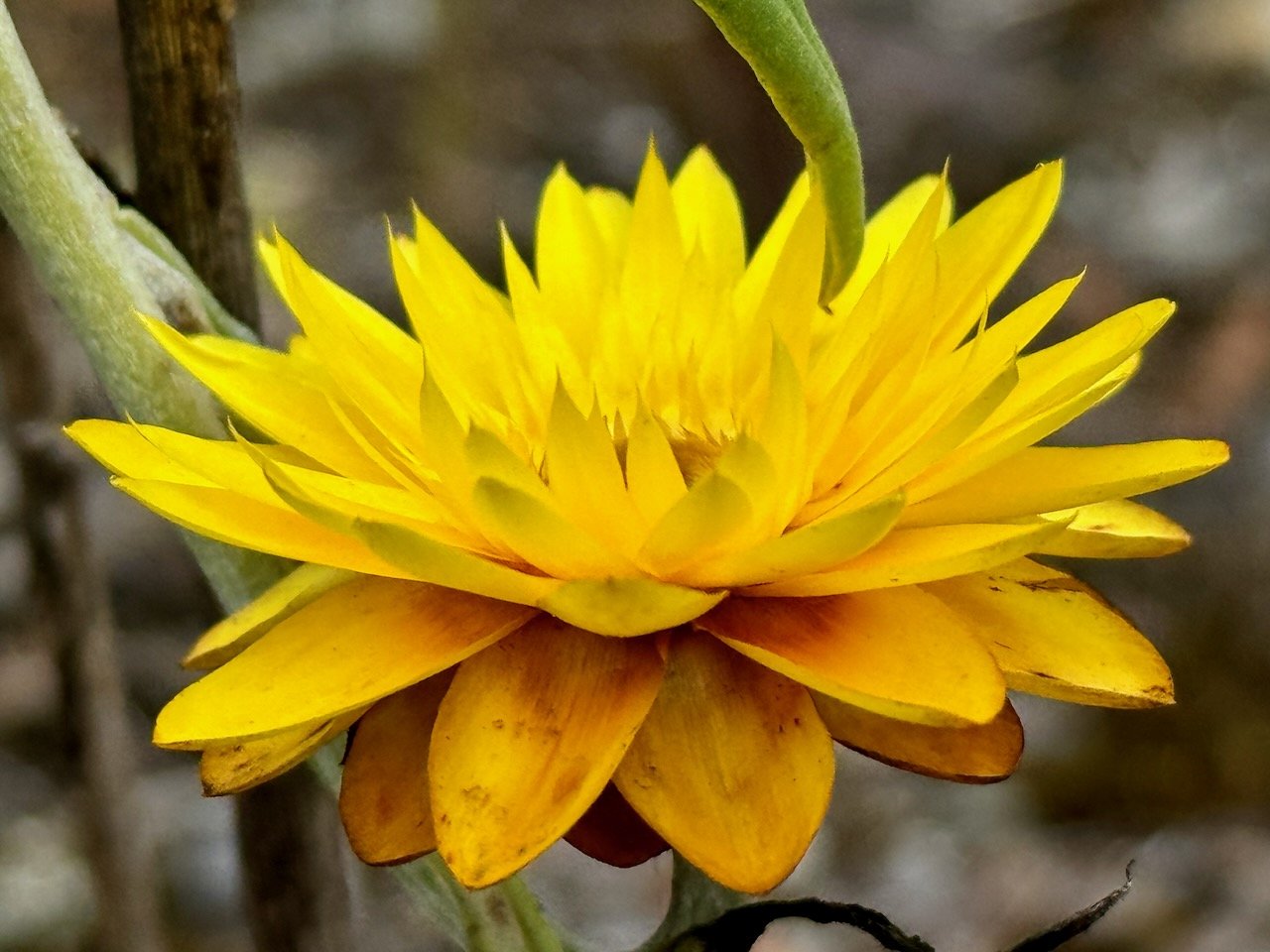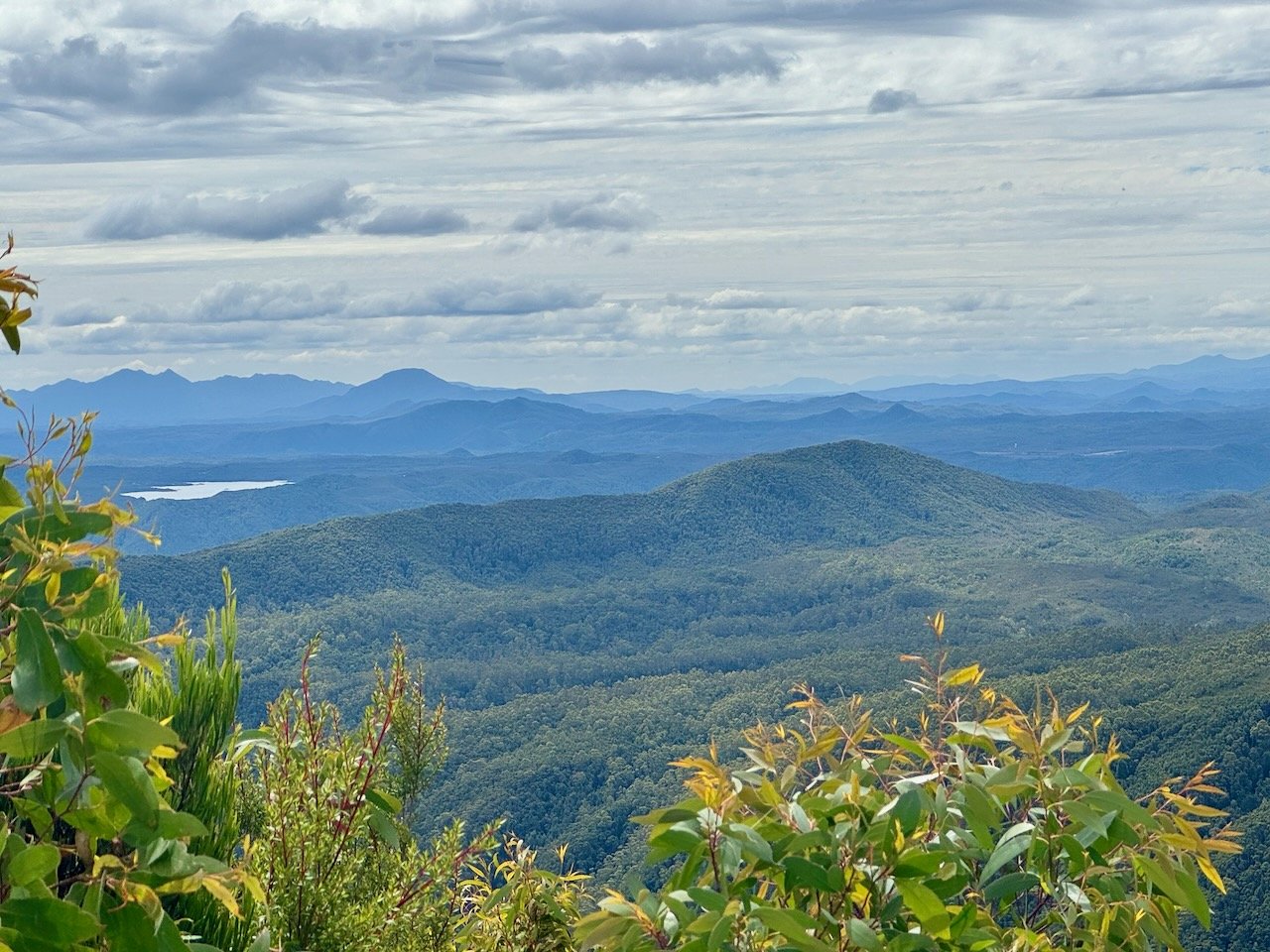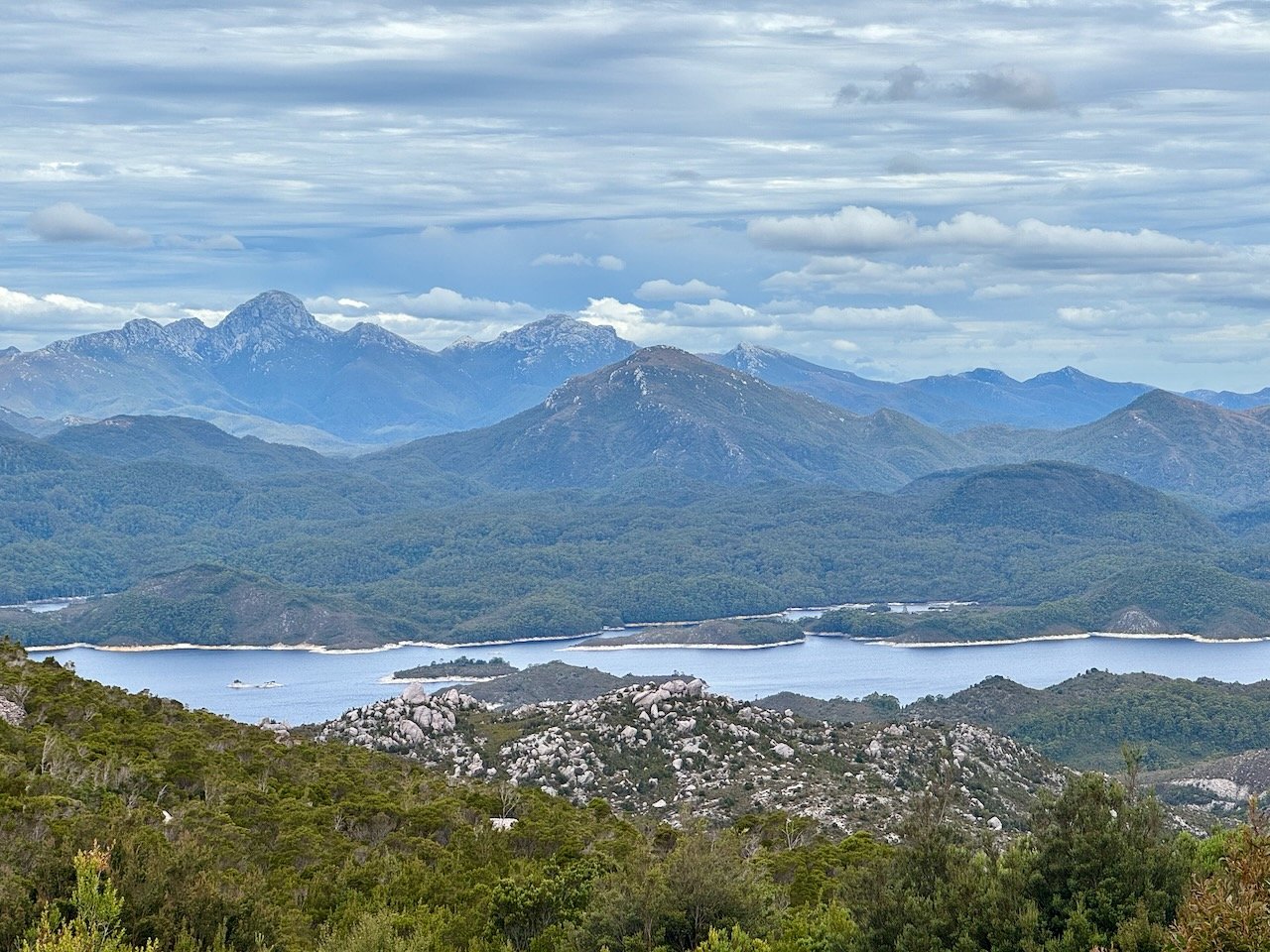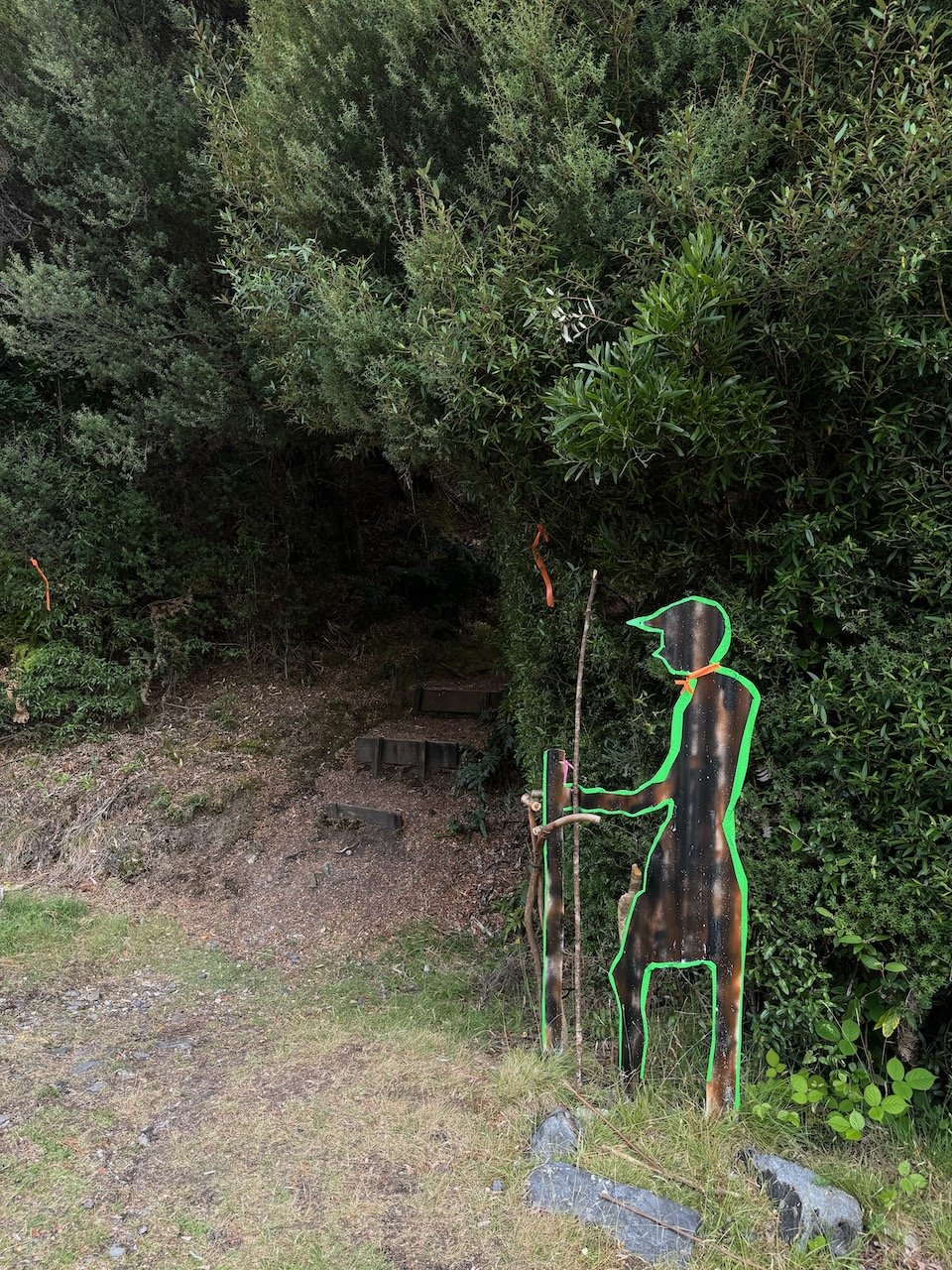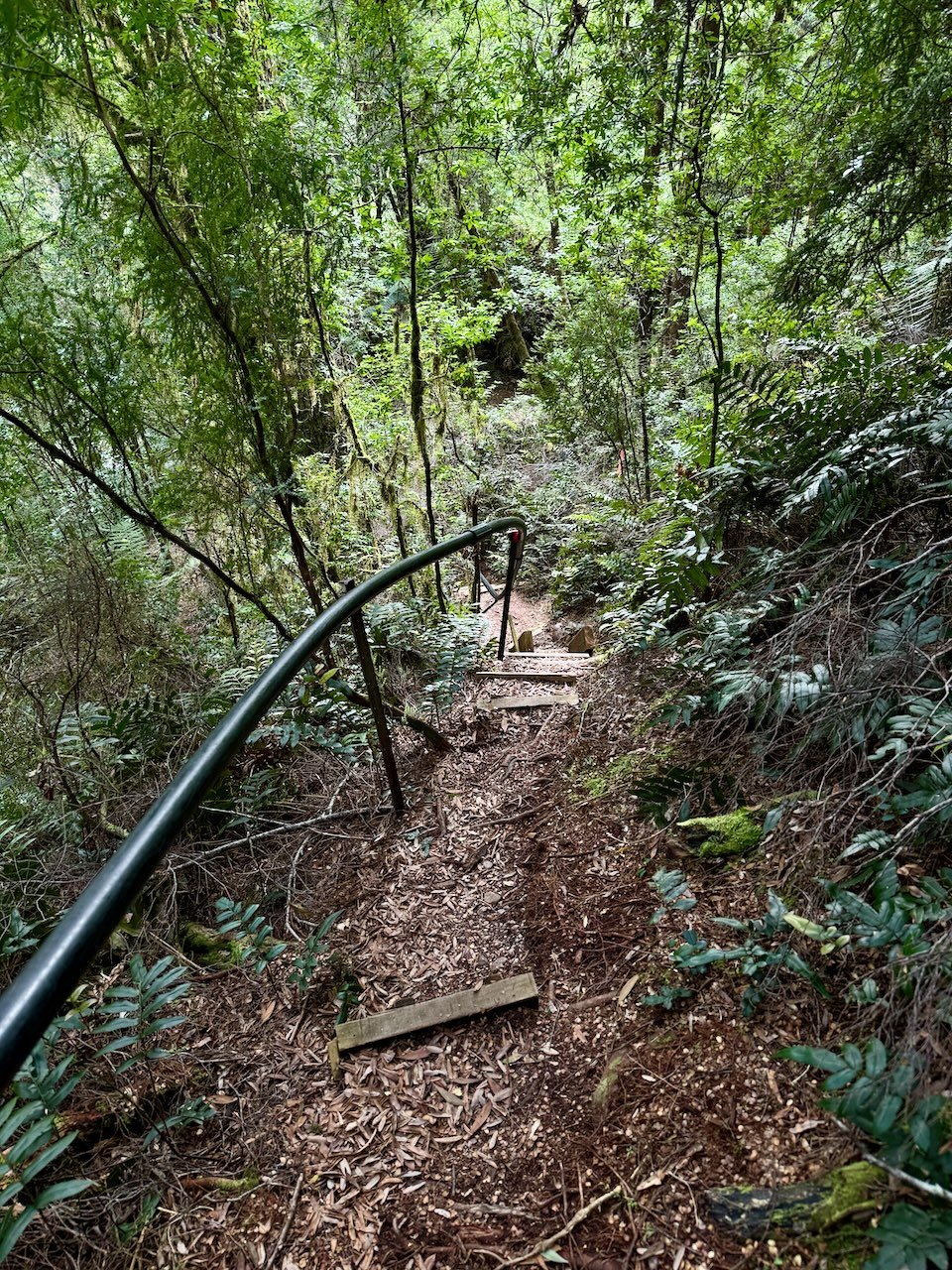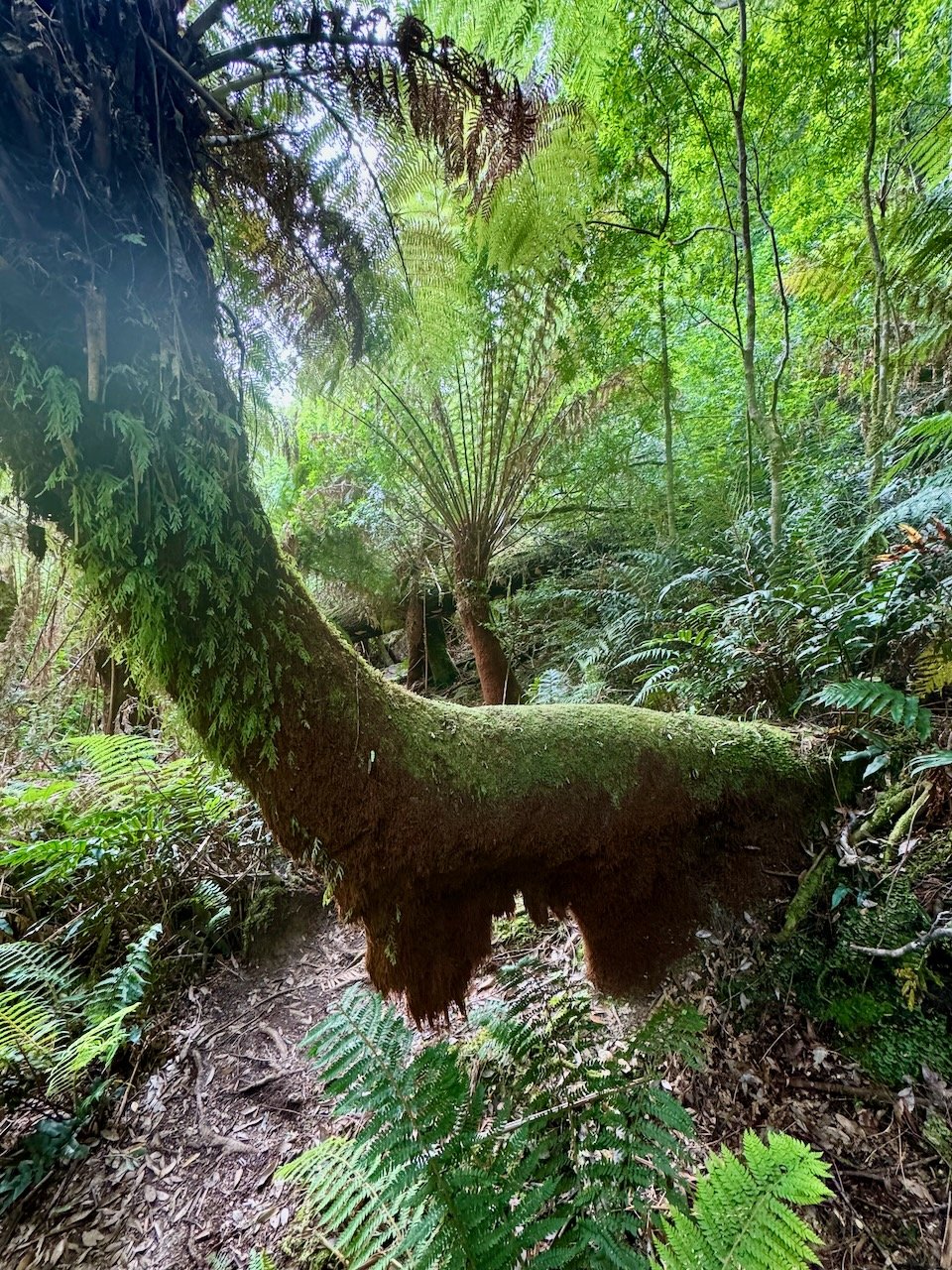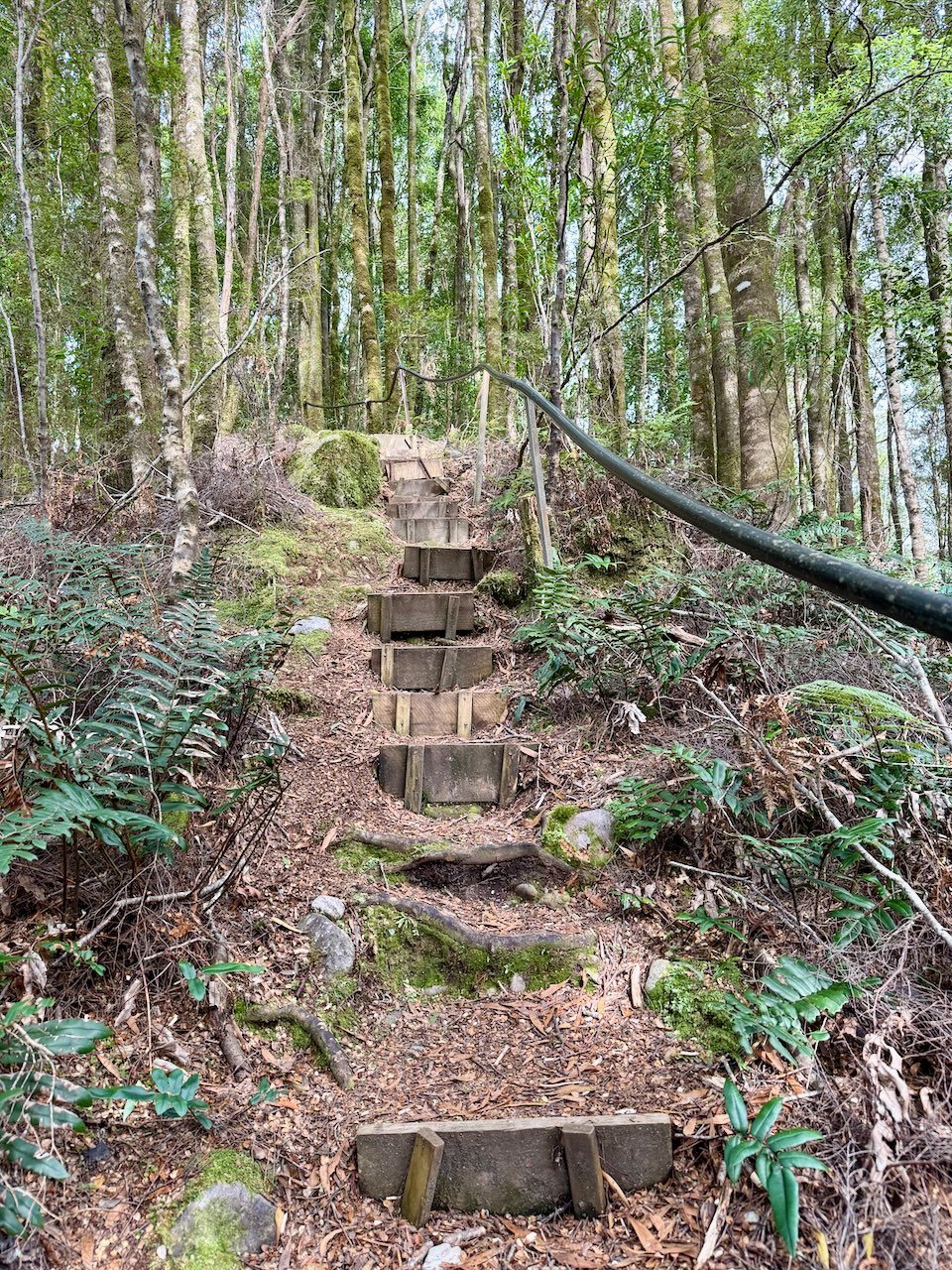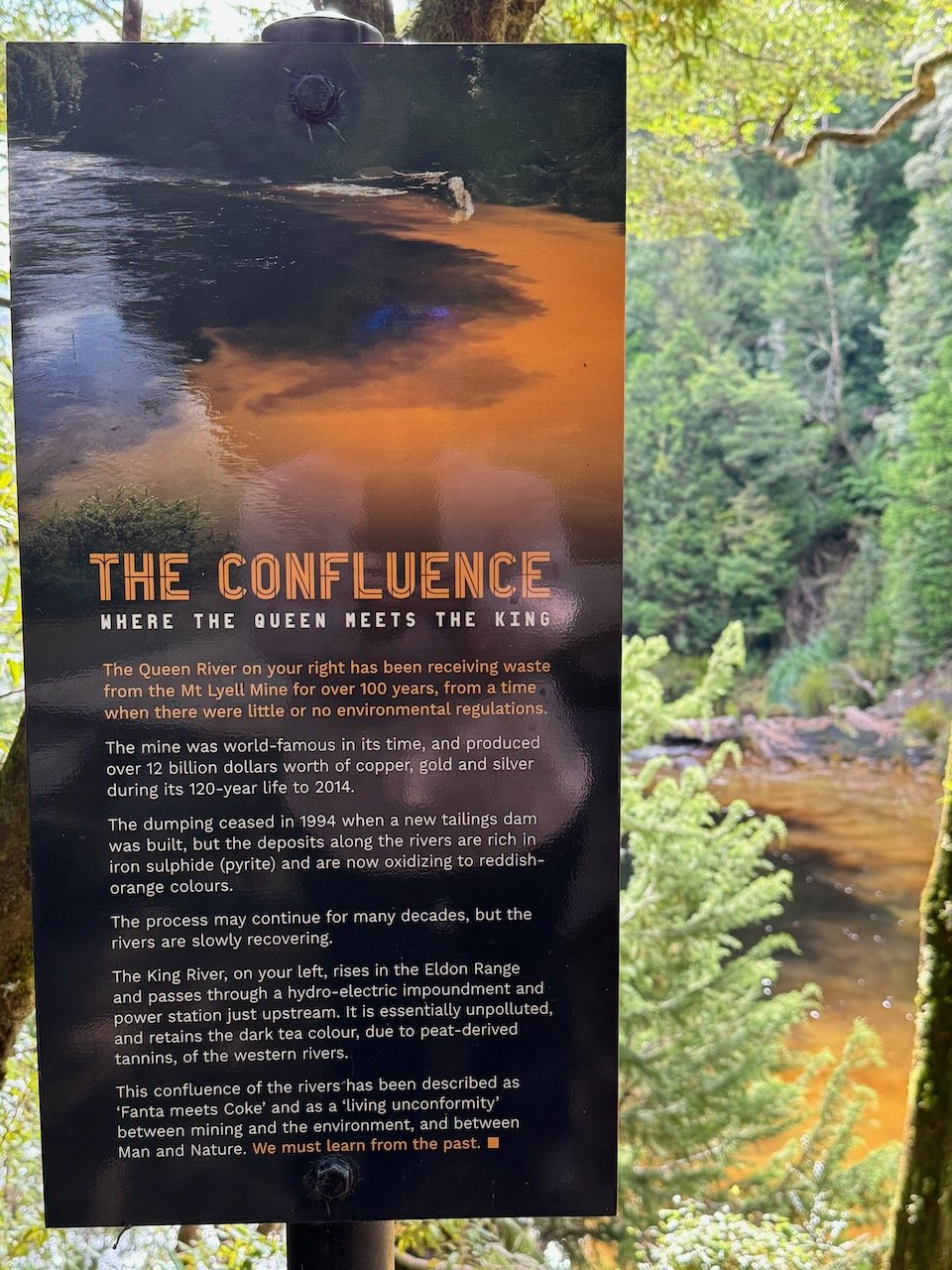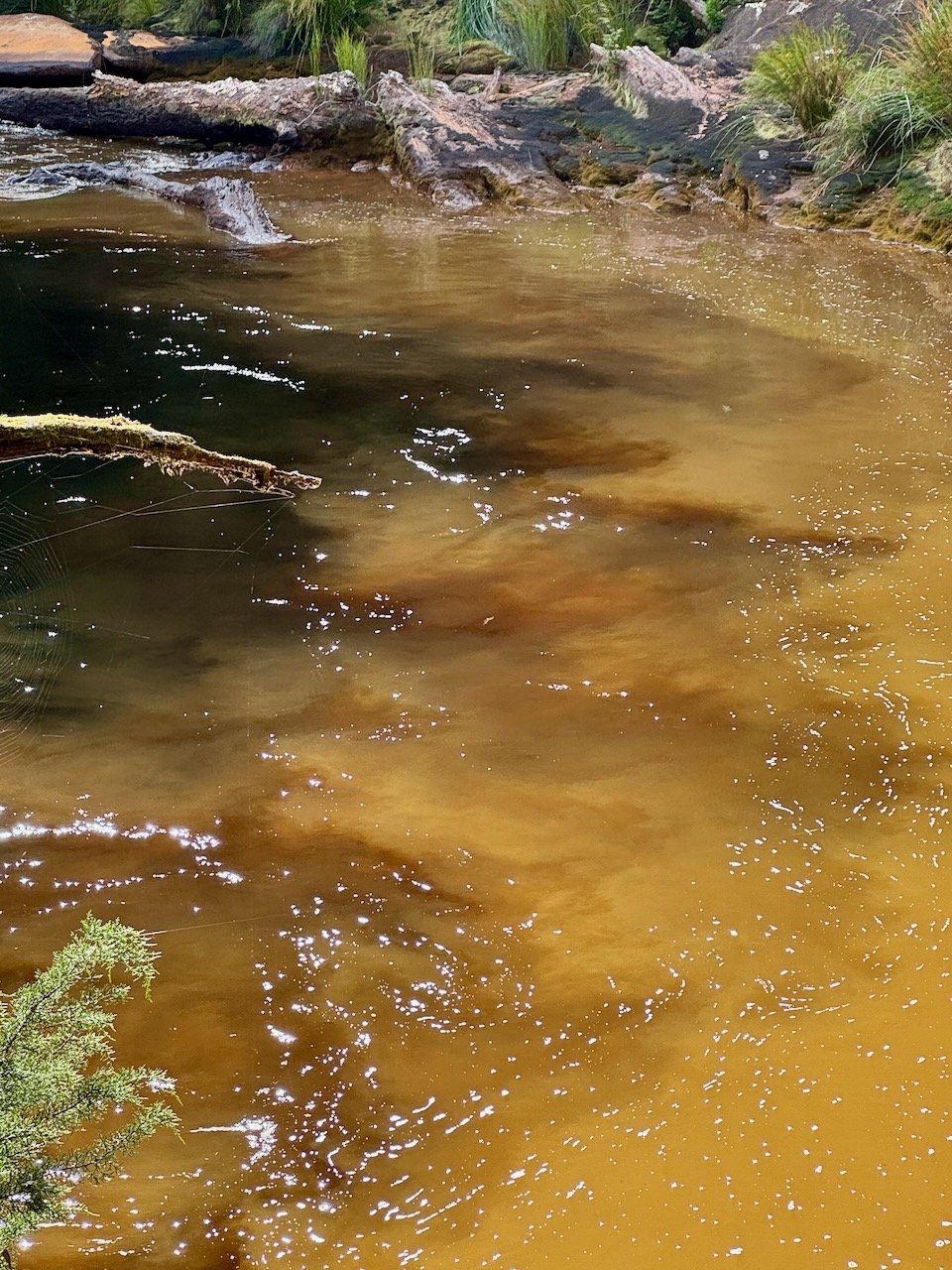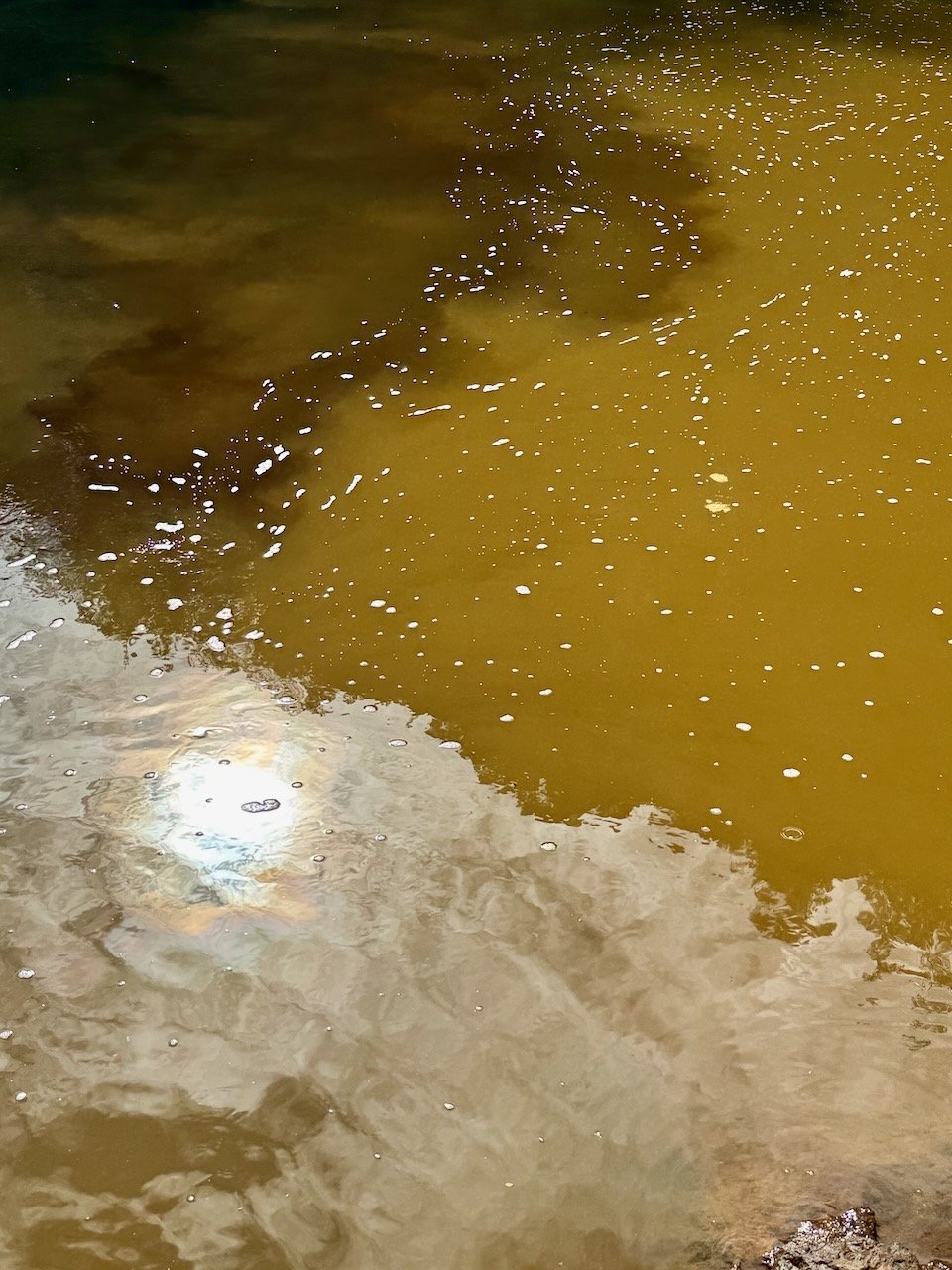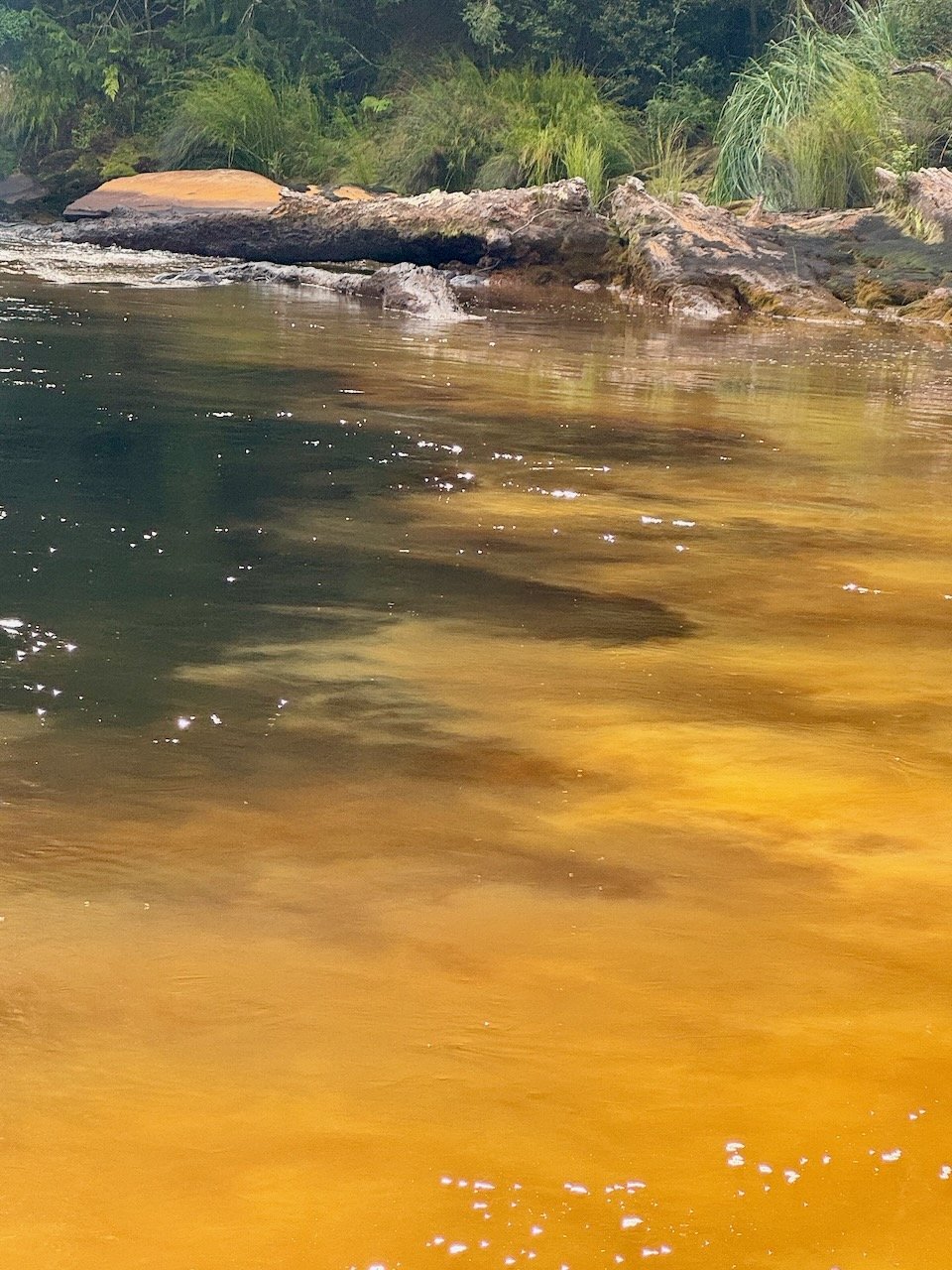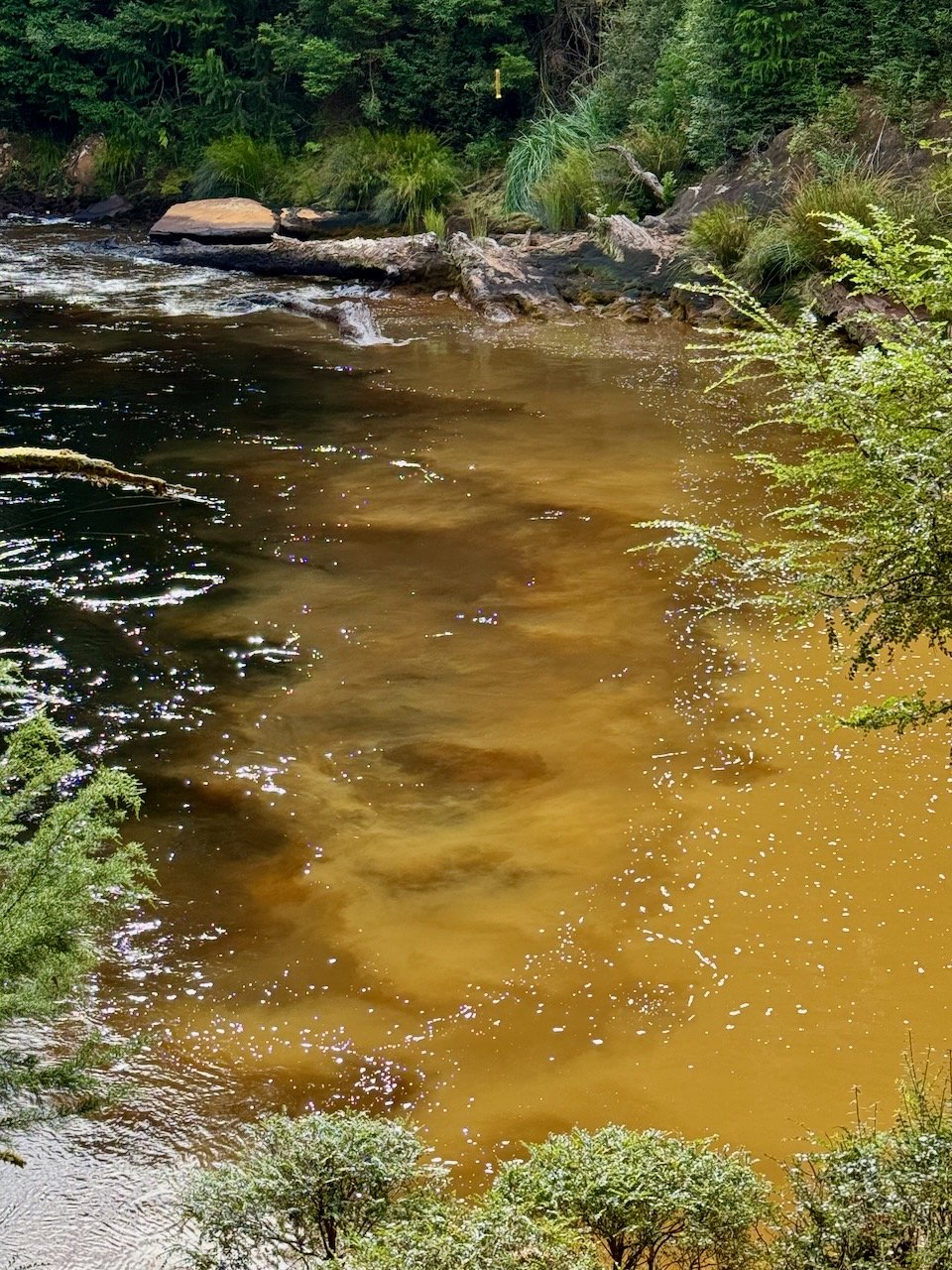Queenstown! ~ AUS Post #19
January 12-24
Power Line Camp
As is often the case, the Lyell Highway leaving Strahan was not as terrible as people made it sound. It was definitely full of hills off the start, but not the crazy traffic as we had been warned. Relieved to find the grades still mostly rideable, with only one or two passing vehicles at a time it, we enjoyed the coolness of the forest on the way up, and hilltop views stretching out as far as Frenchman’s Cap at the crest. Twenty kilometers in after our usual mid-day start, we were ready to find camp and continue on to Queenstown the next day. Unable to find any water source off the road, the Power line track became the obvious choice for a flat and hopefully not so rocky spot.
After trying to bring his low gears back to life that evening, the unfortunate reality was Nivaun needed a new drive train, and ideally new disc brakes. The Western Explorer had done them in after serving him well for 6 years. Fortunately, according to Google, Queenstown had a bike shop. It was our only hope - any other bike shop North or South was at least 250km/155 miles away. Unfortunately, our timing was off - the shop was already closed and wouldnt open again until Thursday - 4 days after our arrival. We considered wild camping another night at a sizable lake on the map just outside of Queenstown. But after finding all the gravel roads leading to it were gated and marked as private, we rang the caravan park and booked a tent site for the next couple days. (We later learned the lake was owned by Hydro.)
Welcome to Queenstown
At the intersection, we stopped at the monument commemorating the road works that connected Strahan to Queenstown - a reminder of how remote this area was for so many years.
Rounding the corner, we were then greeted by the “Welcome to Queenstown” sign board. After snapping a few photos, we walked around to the back of the sign and discovered what we had learned thus far about Tasmanian mining history in no way prepared us for what we read next. Over a century ago, this area was decimated beyond our imagination and at the same time celebrated - it was hard to take in, staring at the photos, and yet it was just another example of the mindset that persists even now across the globe, justifying nature’s destruction in the name of human progress. At least here, nature is being given a chance to recover and renew after being cleared to the ground and the air so polluted with sulfur from smelting nothing could grow for decades.
“Excuse me, Sir”
We settled in to the caravan park not knowing it would become our home for the next 12 days. The sign on the bike shop door confirmed, indeed the hours were Thursday-Saturday, but also posted were the owner’s names and phone numbers. Nivaun texted them both to find out if they would be able to order the parts we needed. From there, we decided to head to the Spion Kopf Lookout, a couple blocks off the main street to check out our surroundings.
As we cruised back down the hill to visit the local wine bar cafe on main street, we in no way expected to be stopped by the local police, but that is what happened next. Leaning out his window, the officer asked Nivaun if we had helmets. After replying, “yes, at our campsite”. The officer replied, “well, go get them”. I guess we were setting a bad example for the young-un’s roaming around town on their BMX and scooters.
So we headed back to camp and returned to the wine bar just in time to meet a couple road cyclists sitting out front after finishing their ride up to Mt. Jukes. We quickly struck up a conversation and discovered one of the guys was a local, now living in Hobart, but was here renovating a cabin to rent as an Air BnB primarily to mountain bikers riding Mt. Owen. Not only did he grow up with our host from Boat Harbor but he knew the owners of the bike shop and jumped in to help contact them. In just a short while, he heard back from the owner/mechanic who was away in Melbourne and agreed to contact Nivaun in the morning to see what we needed. As if that wasn’t enough, we were then invited to stop by his cabin later for a beer, which after we arrived became a home-made dinner and a great evening spent enjoying local hospitality.
Small Town Life
Amazed at our good fortune and the impeccable timing of things, Nivaun was able to connect with Aaron, the owner/mechanic, the next morning to get the parts ordered with hopes they would arrive by the end of the week. We spent the rest of the week, visiting with locals, getting to know our neighbors in the caravan park, some there for just a night, others for longer.
While visiting the Train station cafe, we met Hoppa, a long-time resident that had worked at the Museum and was now doing tours of the town on e-bike rentals. After finishing our coffees, he asked if we would like our own tour and off we went trailing along with Hoppa visiting the historical buildings surrounding the mine, the wall murals around town, the back road to the mountain bike park entrance, and the memorial for the 42 that lost their lives in the mining fire of 1912.
Hoppa highly recommended visiting the museum, so we spent one of the rainy days that week learning more about life in Queenstown over the centuries.
Before heading to the West Coast, we had looked for any Warm Showers host along the way and the only one just happened to be in Queenstown. We just missed meeting them at the local Thursday night cyclists meet-up in town and were invited to meet them at their place instead to talk gear and hear about their own cycle touring adventures.
At the caravan park, we met several other people “cycle” touring Tassie, an older German couple on tandem, a retired mainland resident on a gravel bike, a young Swedish couple on motorcycles. And, living at the park were two young couples from Spain here on work visas, working in Queenstown and traveling around the area on their days off.
Homage to “West Coast Ride”
Finally, on Friday, all the parts arrived except “our” 52-tooth chain rings. I say “ours” because once Nivaun realized our bikes would accommodate the larger chain rings, he had ordered them for both of us. Our hill-climbing prowess soon to be restored! By Monday evening, thanks to Aaron treating us like fat bike royalty, our bikes were sporting the flashiest of chain rings - copper-colored, as if the metals had been mined from Queenstown itself. And to remedy Nivaun’s brake issues, Aaron found a lightly-used larger disc and after some tweaking got that working splendidly as well. I assured Aaron that on our way out of town he would indeed hear his name sung from the hill tops on our way up the 99 bends.
The next day, we decided a “test ride” was in order. We had yet to explore outside the town limits giving us the perfect opportunity to take a “joy ride” sans all our gear up to the lookouts at Mt. Huxley and Mt. Jukes. The road cyclists we first met at the cafe had just finished riding the same route that day peaking our interest. To the lookouts was about 36 kms round trip with 953 meters of ascent/descent which was exciting to think we would finally be able to reap equal rewards on the downhill.
Lookout and Within
We left camp under lightly cloudy skies that gave dimension to the densely covered hillsides. On our many trips back and forth to town, I would find myself gazing at the hillside, thinking it was just one continuous hill, only to eventually realize under the right lighting, there were multiple little ridges stacked one atop the other, their points of separation nearly indistinguishable. Now riding further into the hills, it began to feel like looking at a 3-D greeting card - look at it one way, it was flat - another way, and the dimensions would pop-up seemingly out of nowhere.
Within a few kilometers we reached the King River. Although we had paralleled it all the way out of Strahan, it had been hidden from view. Having met every major river flowing out to the sea on the West Coast, this one did not disappoint. After more than a couple days of heavy rain in the last week, the river had an overabundant, majestic feel, as it rapidly pushed its way up the banks, underneath the bridge and around the bend to meet up with the Queen River. A short distance behind us was the trailhead to the confluence, but we were saving that to explore on our return.
Adjacent to the river, we discovered a short walk back to more abandon mining sites and took a wander through yet another beautiful section of forest filled with deep moss, fungi, fern and a stream trickling alongside. Discarded mining equipment appeared along side the track commingled with its environment, embracing a second life as historic sculpture installations. Deep mining pits were barely recognizable if not for the decorative iron fencing marking where nature was slowly reclaiming what man had exposed in vain attempts at fortune.
A bit further along the road, we settled in to steady hill climbing until spying some of the straw flowers that we first read about atop the Nut in Stanley. We pulled off for a photography break before continuing on what began to feel like a never ending climb.
Once we reached the lookout for Mt. Huxley and stepped over the railing at the pullout and pushed through the brush, we were astounded at the view across the valley. From there it was a short push to reach the second lookout at Mt. Jukes to get our first glimpse of Lake Burbury and the Franklin mountain range towering in the background - certainly worth the effort - and with a 10% grade, a great test of all our gears.
After a glorious descent, from Mt. Huxley lookout, we reached the Confluence trailhead. The track wound along the ridge high above the Queen and then dropped off the hillside down a flight of make-shift stairs to the water’s edge. This site was not just any confluence - it was the most visible evidence of mining’s downstream effect.
From the moment we first crossed the Queen on our way into town, we were taken aback by the putrid-looking pumpkin color of the water and the thick slimy coating that clung to every rock in its path. After decades of mining, the river was still in the process of recovering.
Now standing at the banks of both rivers to watch the Queen swirl its way into the tannin-stained waters of the King was both perplexing and mesmerizing. How patient is Nature in right-ing our wrongs and will she forever succeed?


